It seems we can’t find what you’re looking for. Perhaps searching can help.
Sign Up for newsletter!
Subscribe to get the latest eBook!
Hotline



 2
2
 837
837
 0
0
 1
1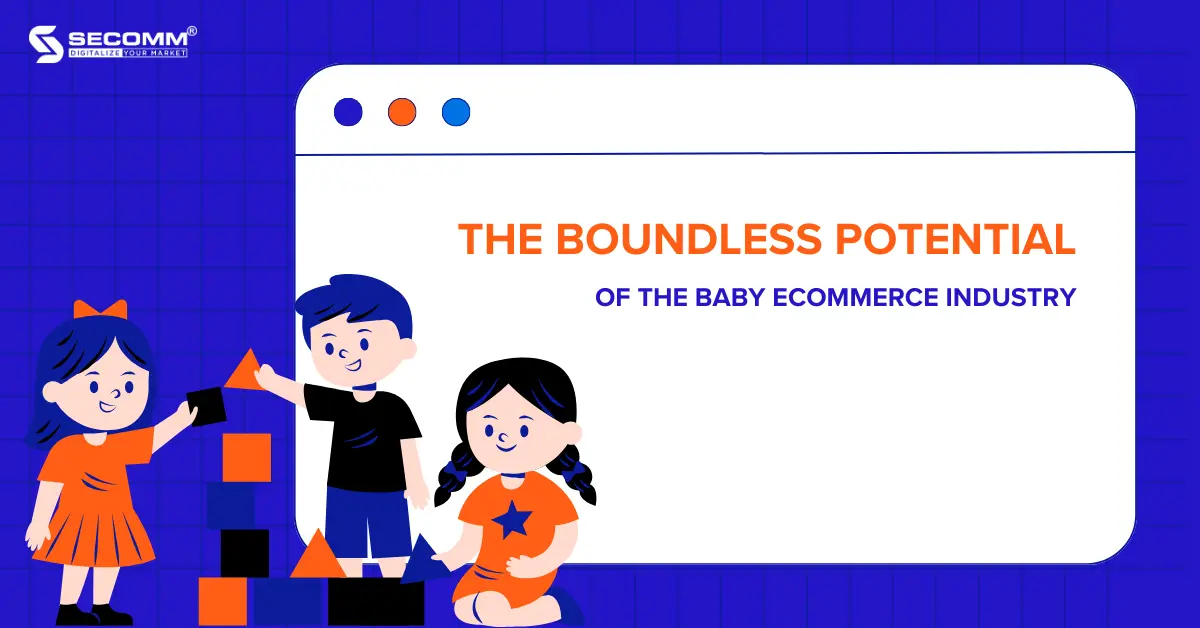
 2
2
 16,005
16,005
 0
0
 1
1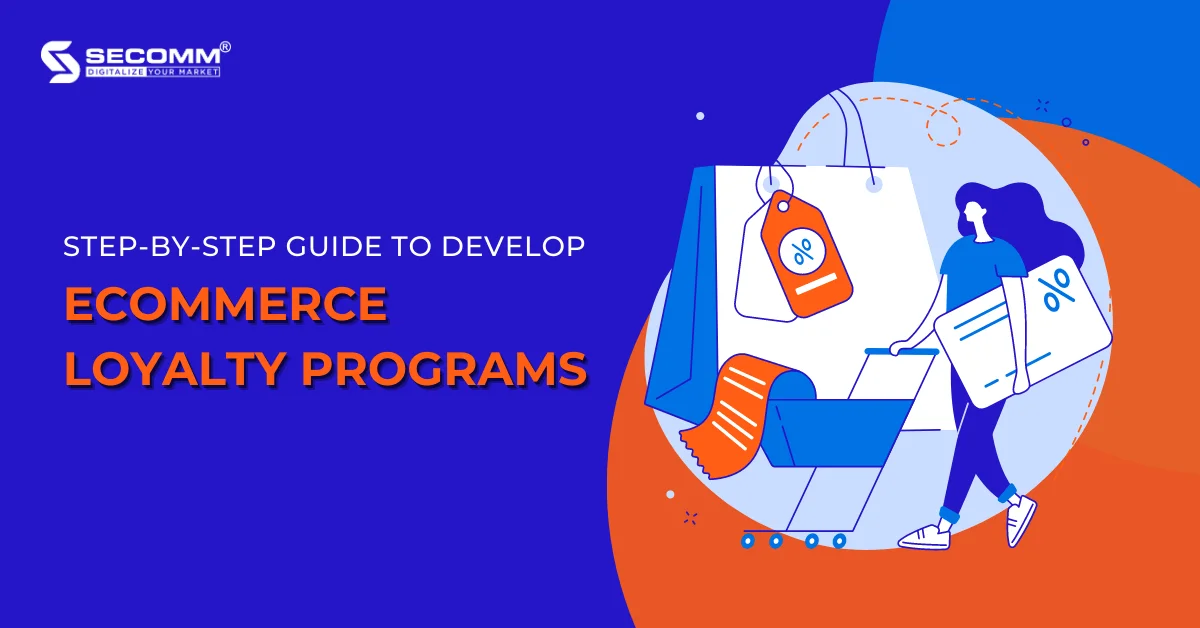
 2
2
 15,740
15,740
 0
0
 1
1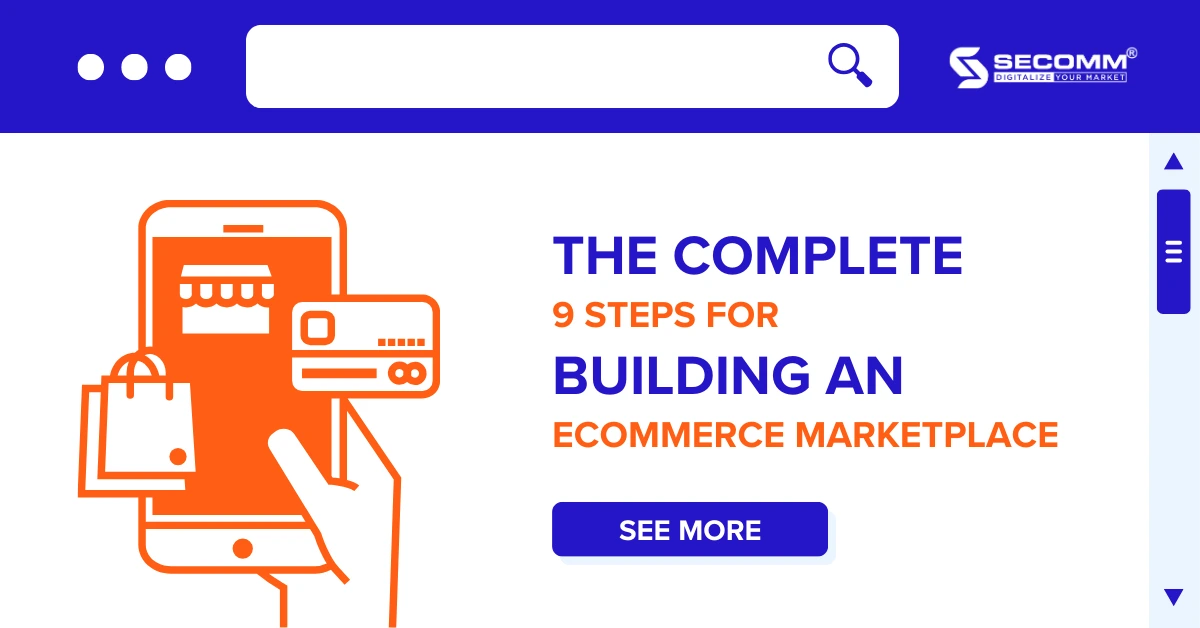
 2
2
 15,702
15,702
 0
0
 1
1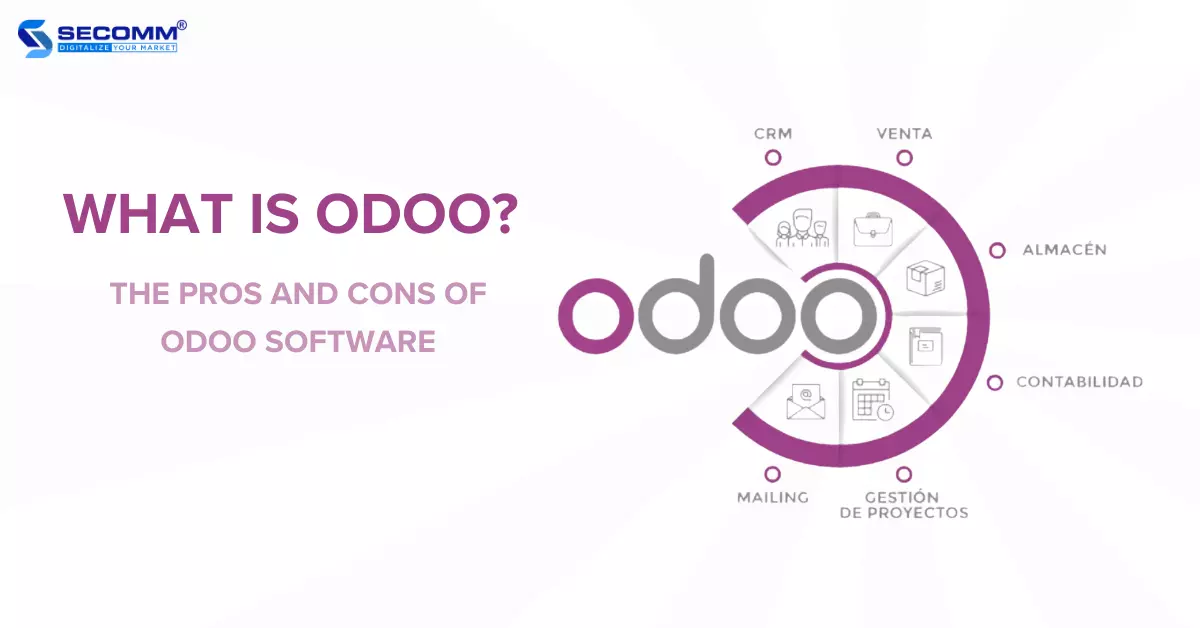
 2
2
 15,226
15,226
 0
0
 1
1



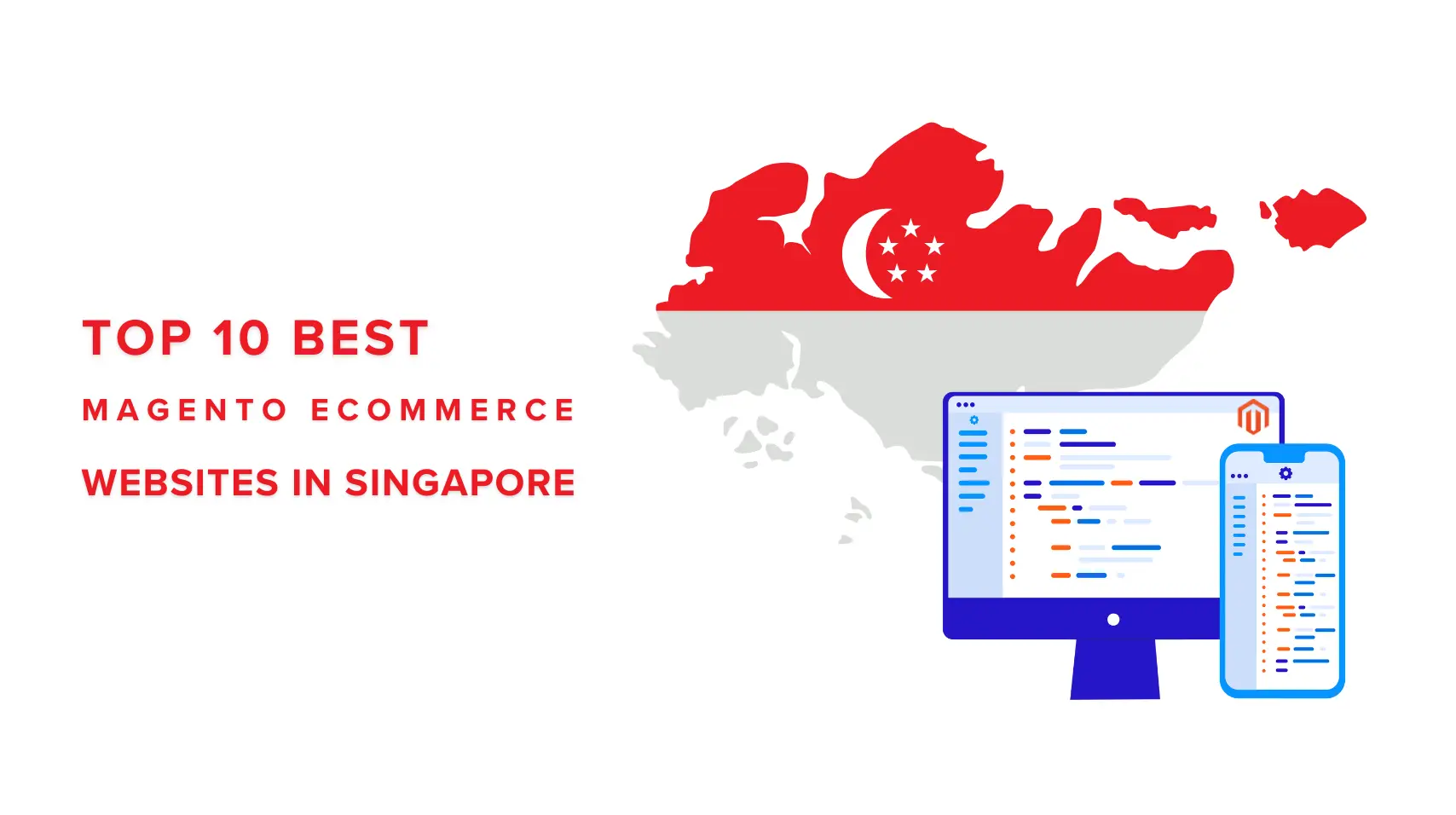
Building Magento eCommerce websites has become an undeniable trend in Singapore, where the blend of technology and creativity has brought unique and appealing shopping experiences to customers. According to Builtwith, there are currently over 600 live eCommerce websites on the Magento platform, and this list is predicted to continue expanding. This indicates that businesses in the Lion City have chosen Magento to create high-quality eCommerce websites, attracting customers and boosting sales.
In this article, let’s explore the top 10 Magento websites in Singapore that have leveraged the power of Magento to enhance the customer experience.

Dyson Singapore is not just an ordinary eCommerce website but also a destination for technology and premium design enthusiasts. With a range of products from vacuum cleaners to smart fans and hair dryers, Dyson continually innovates and enhances the quality of consumers’ lives.
Dyson’s Magento website is designed to provide an optimal shopping experience. From its bright and user-friendly interface to smart product search and categorization features, every detail is carefully crafted to ensure customers have the best online shopping experience. Additionally, Dyson is renowned for its excellent customer care service. From detailed product guidance to flexible return policies, they are committed to ensuring absolute satisfaction for every customer.
Website: https://www.dyson.com.sg/
Industry: Consumer Electronics
Traffic: 690,356/month
Ranking: #1,599 (Singapore) & #292,561 (Global)
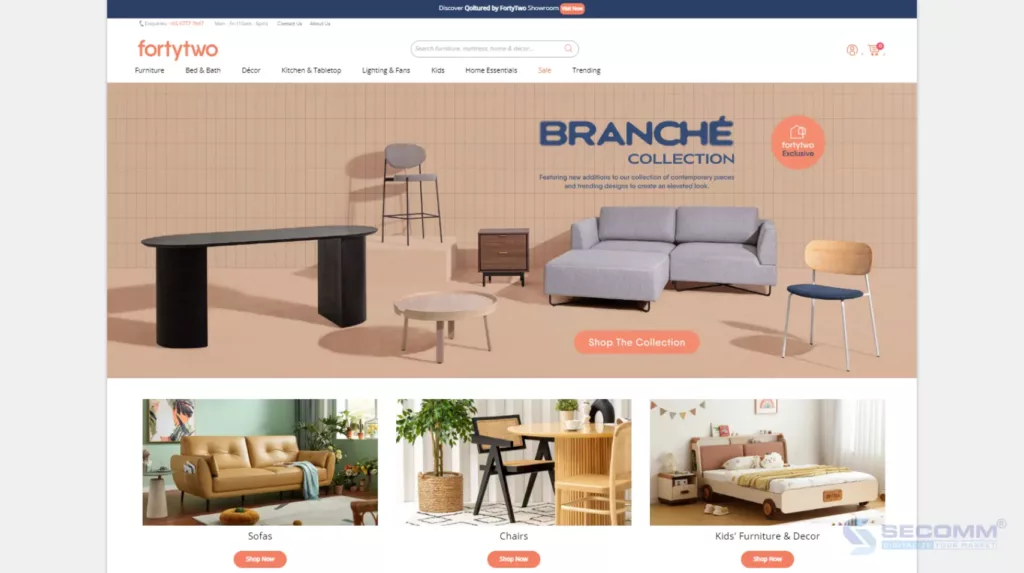
FortyTwo is one of the reputable destinations for household and interior decoration shopping in Singapore. With a diverse collection ranging from living room furniture, bedroom sets to household essentials, FortyTwo offers customers a convenient and varied online shopping experience.
FortyTwo’s eCommerce website is built on the Magento platform, focusing on creating a user-friendly interface. Not only does it display products clearly, but it also provides flexible product search and filtering features, making it easy for customers to find items that reflect their style and personal needs.
Website: https://www.fortytwo.sg/
Industry: Furniture
Traffic: 625,855/month
Ranking: #493 (Singapore) & #107,563 (Global)
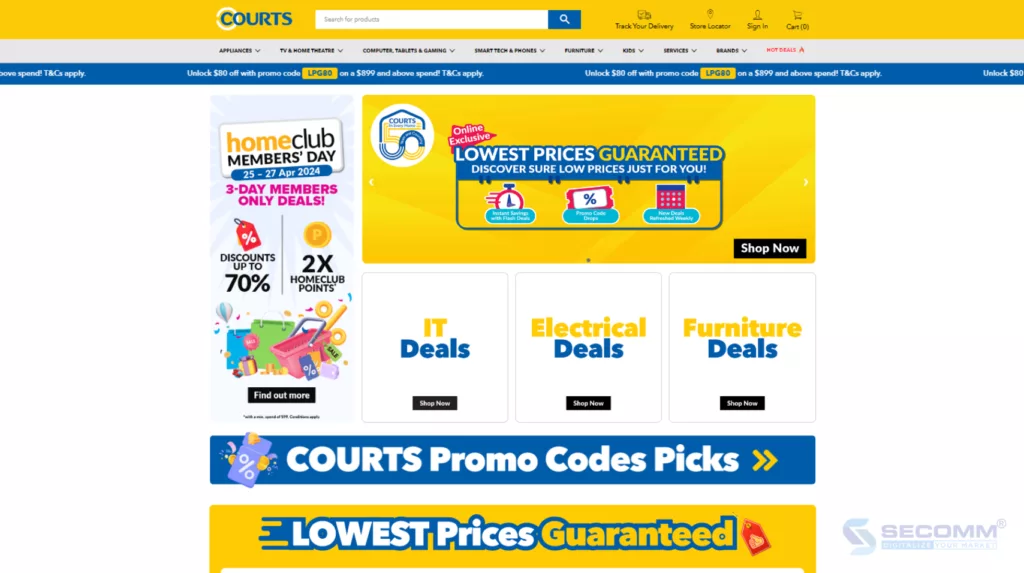
COURTS is known as the leading retailer in Singapore, specializing in a range of diverse products from furniture, electronics to household services. With over 14 stores across the island and a convenient e-commerce website, COURTS is the ideal destination for all shopping needs of Singaporean families.
COURTS’ Magento eCommerce website is designed and built to ensure an easy and comfortable online shopping experience. Through the Magento website, COURTS customers can easily search and select from a variety of high-quality products with flexible search and sorting features.
The brand stands out not only with its diverse products but also with its professional customer service. From shopping advice to delivery and installation services, they are committed to providing maximum satisfaction for every customer.
Website: https://www.courts.com.sg/
Industry: Consumer Electronics
Traffic: 510,240/month
Ranking: #502 (Singapore) & #105,498 (Global)
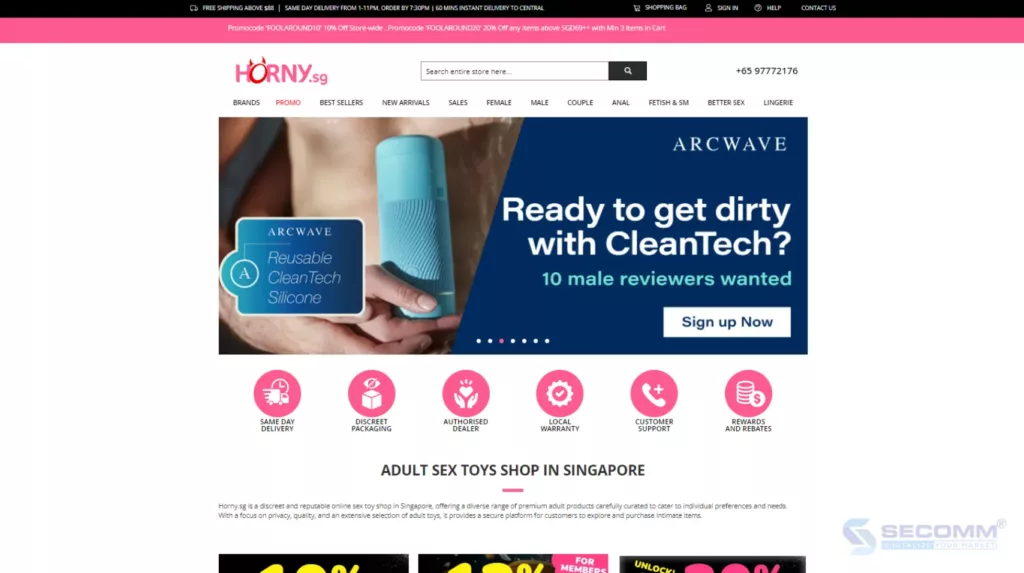
Horny is a unique eCommerce website based in Singapore, focusing on providing modern adult accessories. With a mission to help customers feel confident and satisfied in their romantic lives, Horny has created an enjoyable and convenient shopping experience through the Magento platform. Horny’s Magento eCommerce website is built with a focus on creating a reliable and user-friendly online shopping space. From attractive interface layouts to clear and detailed product displays, every detail is meticulously crafted to create the best shopping experience. Additionally, Horny stands out with the diversity of fashion and accessory products. Customers can easily find items that suit their individual needs.
Website: https://horny.sg/
Industry: Adult
Traffic: 482,417/month
Ranking: #1,133 (Singapore) & #193,753 (Global)

Saturday Club is not just a fashion brand but also an icon of confidence and freedom in women’s workwear fashion in Singapore. With a creative spirit and a mission to celebrate natural beauty, Saturday Club continuously brings fresh, stylish, and unique fashion collections.
Saturday Club uses Magento to develop its eCommerce website to provide customers with a smooth shopping experience with an easy-to-use interface. Customers can easily choose from a variety of products and the latest collections, with detailed information and clear images. Additionally, the brand stands out with attentive customer care service and fast and flexible delivery policies.
Website: https://sg.saturdayclub.com/
Industry: Fashion
Traffic: 406,335/month
Ranking: #2,115 (Singapore) & #240,670 (Global)
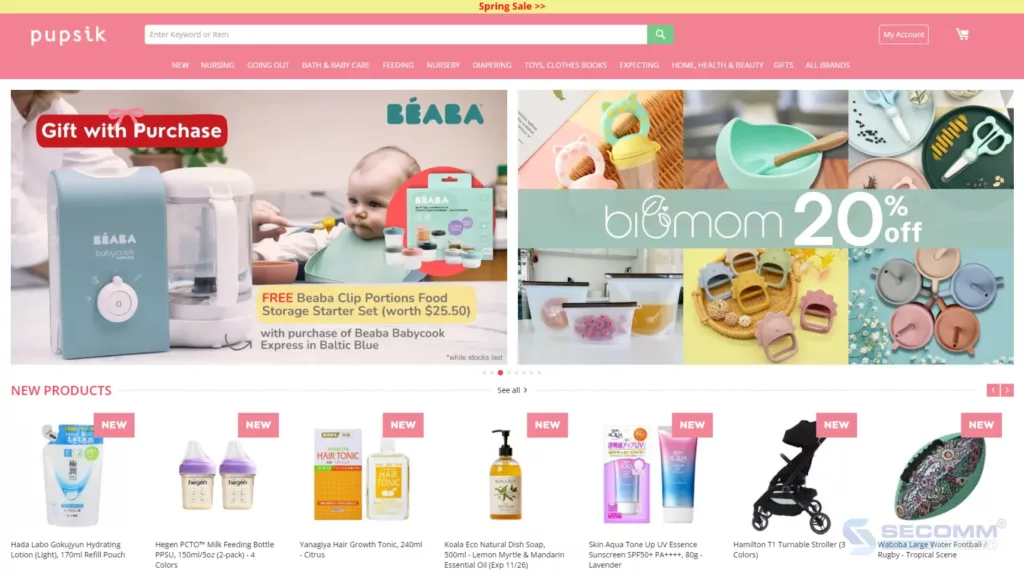
Pupsik is the go-to online shopping destination for parents in Singapore, where they can find everything they need for the care and nurturing of their children. With a humane mission and special attention to the needs of families, Pupsik is committed to providing a peaceful and convenient shopping experience.
Pupsik has built its Magento website to easily customize features and shopping experiences. From smart search features to product filtering and optimized checkout pages, every detail is focused on ensuring shopping becomes easy and quick.
In particular, Pupsik is famous for the diversity and quality of products for children and mothers. From clothing, toys to everyday essentials and healthcare products, they ensure that all family needs are comprehensively met.
Website: https://pupsik.sg/
Industry: Childcare
Traffic: 264,148/month
Ranking: #3,684 (Singapore) & #677,191 (Global)

Cellarbration is the ideal destination in Singapore for wine and alcoholic beverage enthusiasts. This brand boasts an extensive collection of wines and alcoholic beverages from top brands worldwide.
Shopping on the eCommerce website is also efficiently optimized by Cellarbration through the power of the Magento platform. From search operations to product browsing and payment, everything is deeply customized to ensure customers have a more engaging shopping experience.
Not only prominent for the richness of products but also for professional and dedicated customer service. Cellarbration is committed to customer satisfaction by providing personalized support and diversifying payment options as well as delivery.
Website: https://cellarbration.com.sg/
Industry: Wine
Traffic: 125,878/month
Ranking#6,676 (Singapore) & #1,075,981 (Global)

In Singapore, the Wine Collection brand is a favorite destination for wine enthusiasts who want to explore premium wines from the most famous wine regions in the world. Wine Collection also offers customers a rich and diverse collection of wines.
The Wine Collection’s Magento website is customized to optimize the experience, allowing customers to search for wines by origin, grape variety, explore special collections, and choose preferred payment and delivery methods.
Not only does it provide a modern and engaging online shopping space, but Wine Collection also serves as a source of wine knowledge. Customers can find articles and detailed guides on how to choose and enjoy wine to better understand the art and science behind the delicate flavors.
Website: https://wineconnection.com.sg/
Industry: Wine
Traffic: 82,788/month
Ranking: #12,447 (Singapore) & #1,701,444 (Global)

Far East Flora is a brand specializing in providing plant products, fresh flowers, and decorations made from greenery. The Far East Flora Magento eCommerce website is built with a priority on customer experience through a user-friendly interface and deeply developed and customized features. Customers can search for plants by filtering by type, size, and make quick payments with just one page. Additionally, Far East Flora’s fast and reliable delivery service is highly rated by customers. The brand is committed to delivering quality products to customers’ hands safely and promptly, helping them decorate living spaces beautifully and meaningfully.
Website: https://fareastfloragarden.com/
Industry: Gardening
Traffic: 40,864/month
Ranking: #20,995 (Singapore) & #2,327,136
(Global)
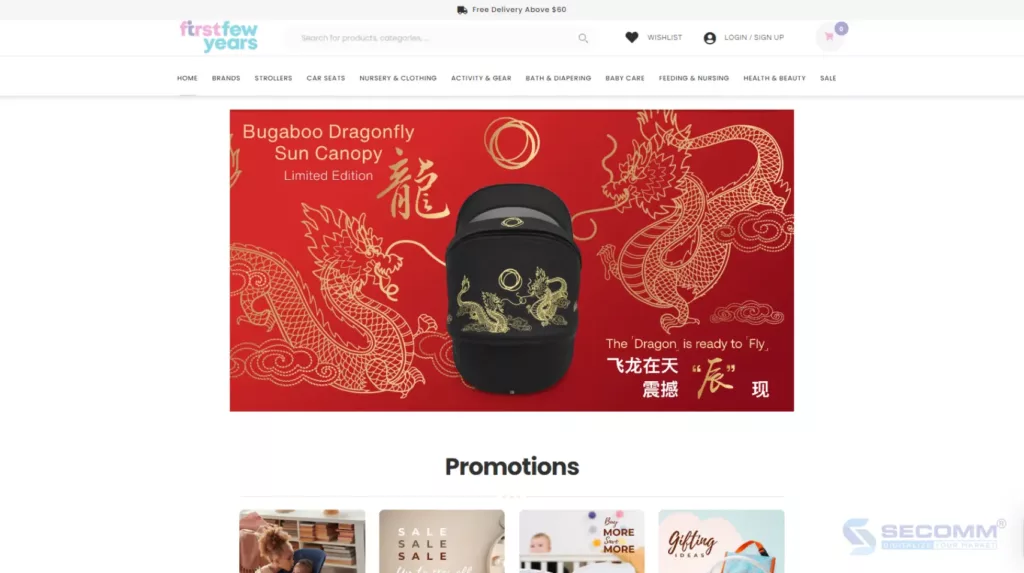
First Few Years is not just a store but also a loyal companion for parents in the journey of caring for their children from the early years. With a dedicated spirit and profound understanding of children’s needs, First Few Years provides a meaningful and trustworthy shopping experience.
The Magento website of this brand is not only a place for shopping but also an important source of information and support for parents. From advising on safe toy selection and development to sharing experiences in childcare, all information is conveyed sincerely and meticulously.
Website: https://firstfewyears.com.sg/
Industry: Childcare
Traffic: 10,245/month
Ranking: #86,167 (Singapore) & #7,519,723 (Global)
The Bottom Line
Above are 10 leading Magento eCommerce websites in Singapore, each providing customers with a unique and memorable shopping experience. From product diversity to professional customer service, each website has prioritized the mission of serving and satisfying customers.
Need more advice to build your first Magento website? Contact SECOMM today!
 2
2
 1,900
1,900
 0
0
 1
1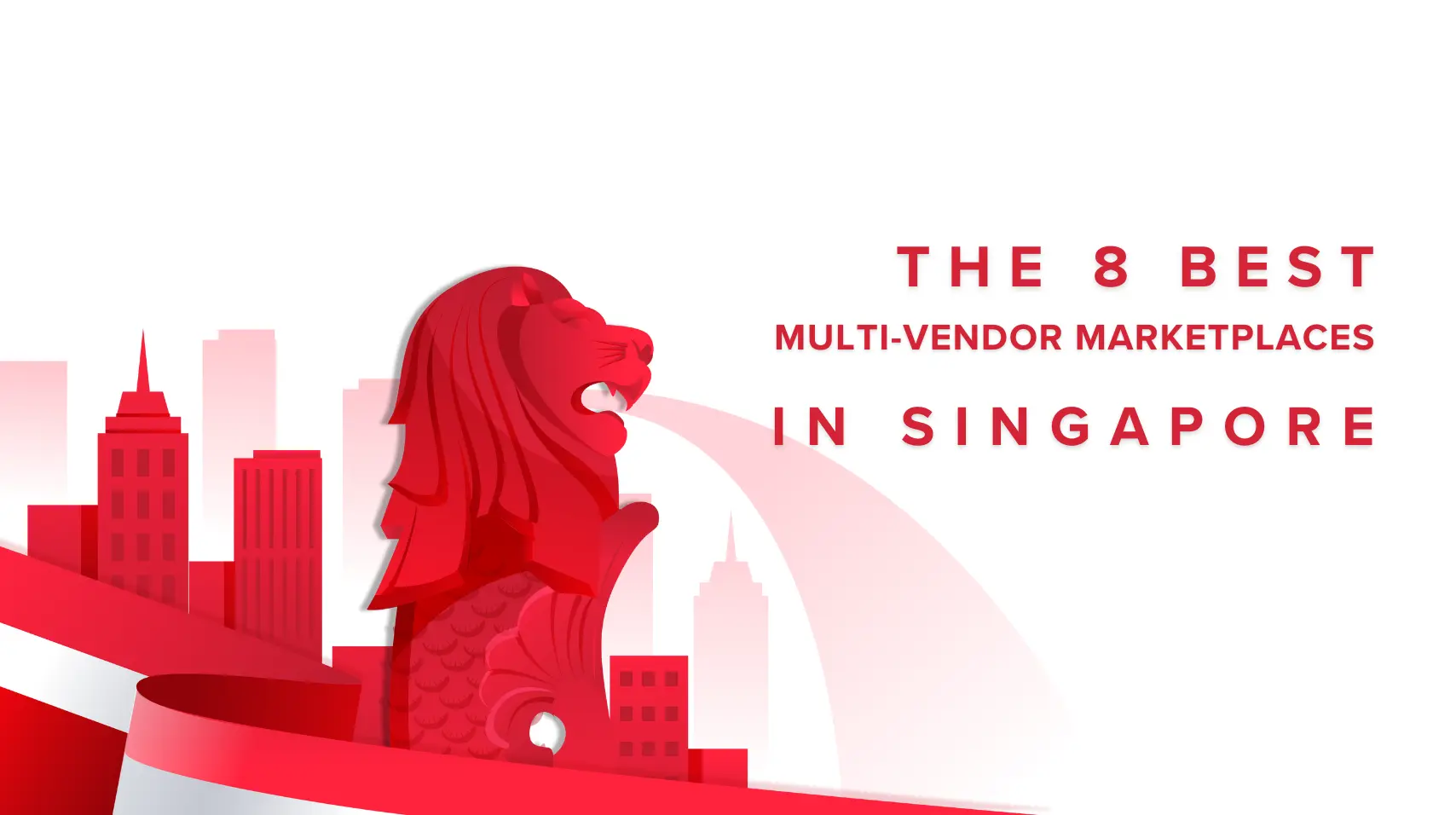
The Singapore multi-vendor marketplace market is booming, with stiff competition from Western giants like Amazon and eBay, as well as trusted local brands such as Shopee and Lazada. Statista reports that in 2023, the industry’s revenue reached $4.45 billion and is projected to hit $5 billion in 2024 and $8.2 billion by 2029. In this context, identifying and understanding the leading online marketplaces in Lion City is crucial for maximizing potential and opportunities in this rapidly evolving market.
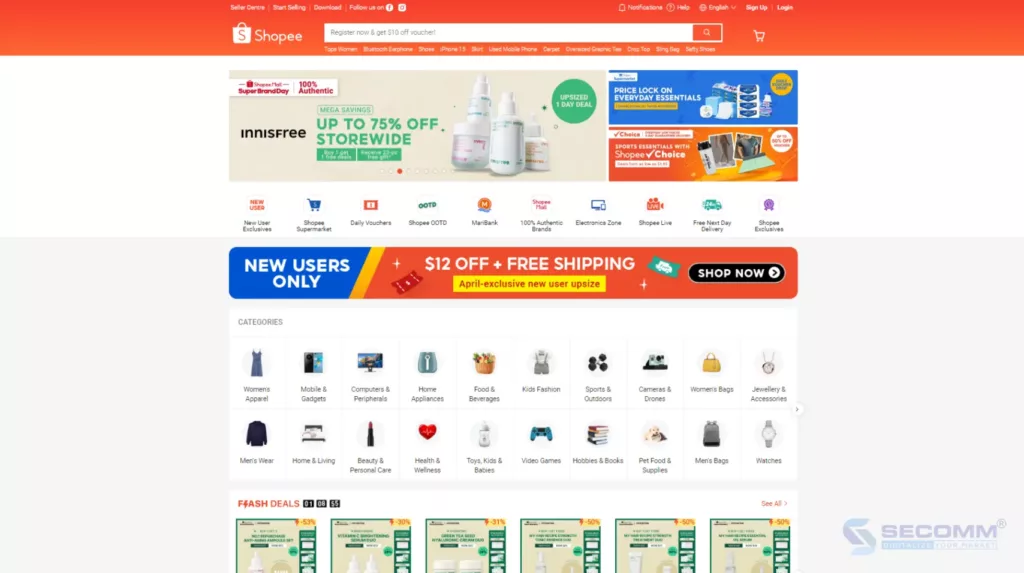
Shopee Singapore is one of the leading multi-vendor marketplaces not only in Singapore but also throughout the Southeast Asia region. The range of products available for purchase and sale on the Shopee platform is quite diverse, spanning from consumer goods to fashion, electronics, toys, and much more. Shopee Singapore is renowned not only for its convenience and flexibility in the online shopping process but also for its attractive promotional programs and fast delivery services. With its open and user-friendly business model, the eCommerce marketplace has become a popular destination for people looking for quality products at reasonable prices.
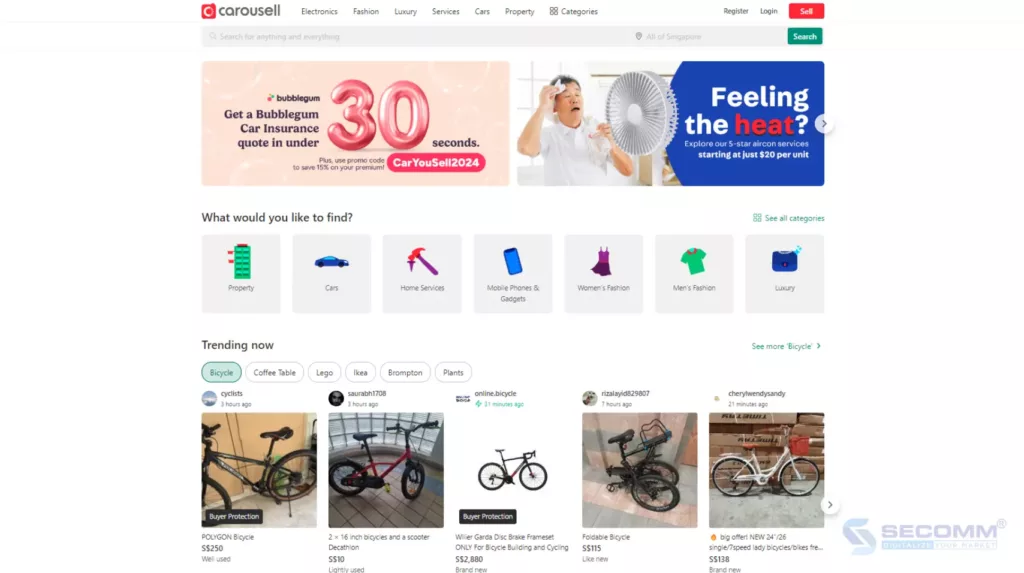
Carousell, a well-known online marketplace based in Singapore, offers a stylish and personalized online shopping experience. It specializes in enhancing the buying and selling process both on its website and mobile app. What makes Carousell stand out is its wide range of unique items available. Beyond just new products, Carousell also serves as an eCommerce marketplace for secondhand items, spanning from clothing and electronics to household goods. This creates an engaging shopping environment for those in search of one-of-a-kind items or looking to recycle goods.
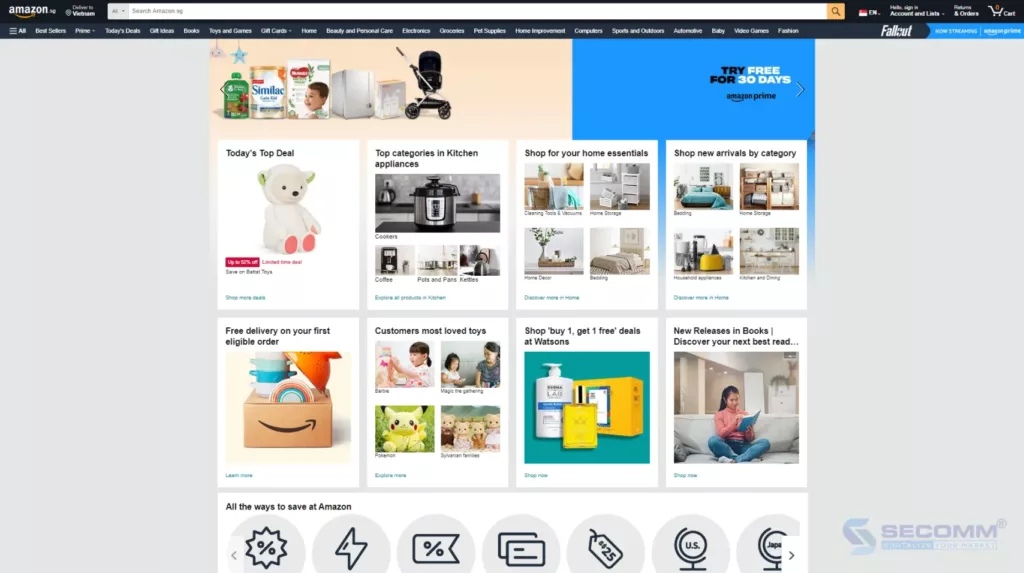
When expanding into the Singapore market, retail giant Amazon brought a top-notch and diverse online shopping experience to local customers. With an extensive array of products spanning from consumer electronics to books, fashion, household items, electronics, and cosmetics, Amazon serves as the preferred destination for customers seeking quality and variety.
A key strength of this multi-vendor marketplace lies in its reliable shipping infrastructure and customer service. With a widespread distribution network and efficient delivery services, Amazon ensures convenient and prompt product deliveries for buyers. Additionally, Amazon’s customer support service is highly regarded, as the company strives to address inquiries and issues from both sellers and buyers promptly and effectively.
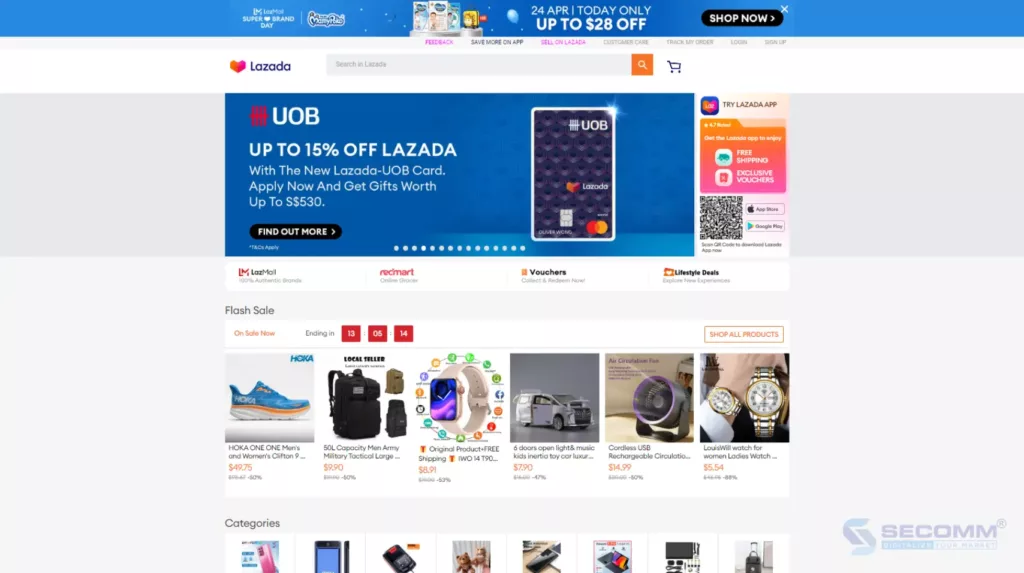
Lazada is one of the major players in the eCommerce world, winning over the trust of Singaporean consumers with its diverse range of services and products. Since being acquired by Alibaba, Lazada has experienced significant growth and strengthened its position in the Southeast Asian market. Today, Lazada serves not only as a platform for major brands but also as a gateway for small and medium-sized enterprises to enter the market effectively. Moreover, the online marketplace is renowned for its enticing promotional offers and swift delivery services. The incorporation of labels like “LazMall” and “LazGlobal” further simplifies the process for customers to discover and purchase quality products from brands worldwide.
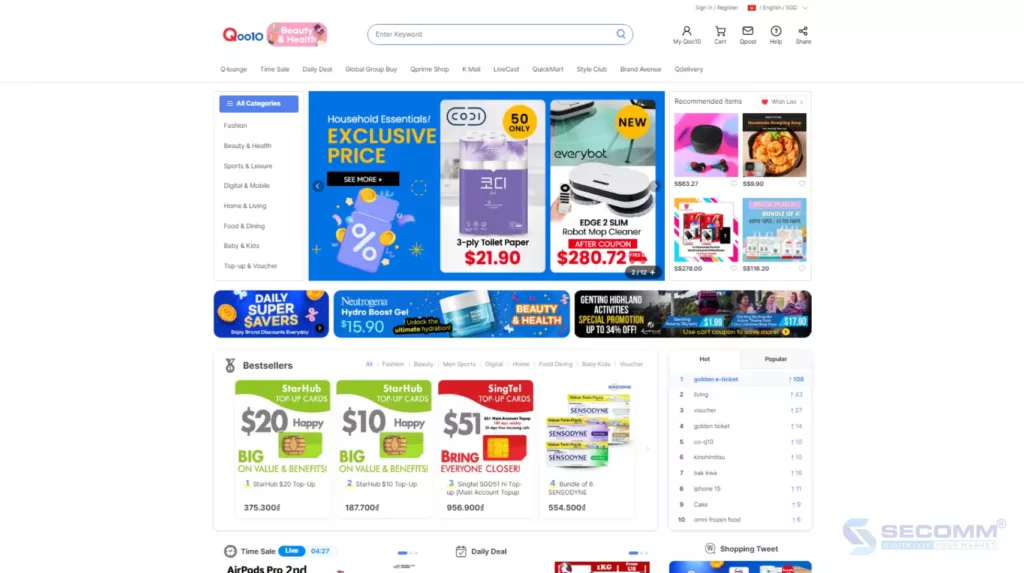
Qoo10, also known as Gmarket, stands as one of Singapore’s most popular and reliable eCommerce marketplaces. With its diverse range of online storefronts, Qoo10 offers users a stylish and varied online shopping experience.
A standout feature of Qoo10 is its emphasis on products from small and medium-sized retailers. Rather than focusing solely on major brands, Qoo10 provides a platform for small and medium enterprises to easily and effectively access the market. This creates a welcoming and diverse shopping environment where buyers can discover unique and high-quality products from smaller manufacturers and brands.
Moreover, the online marketplace is well-known for its appealing promotional programs and fast delivery services. The user rating and feedback system further bolsters trust and transparency in the online shopping process on this platform.
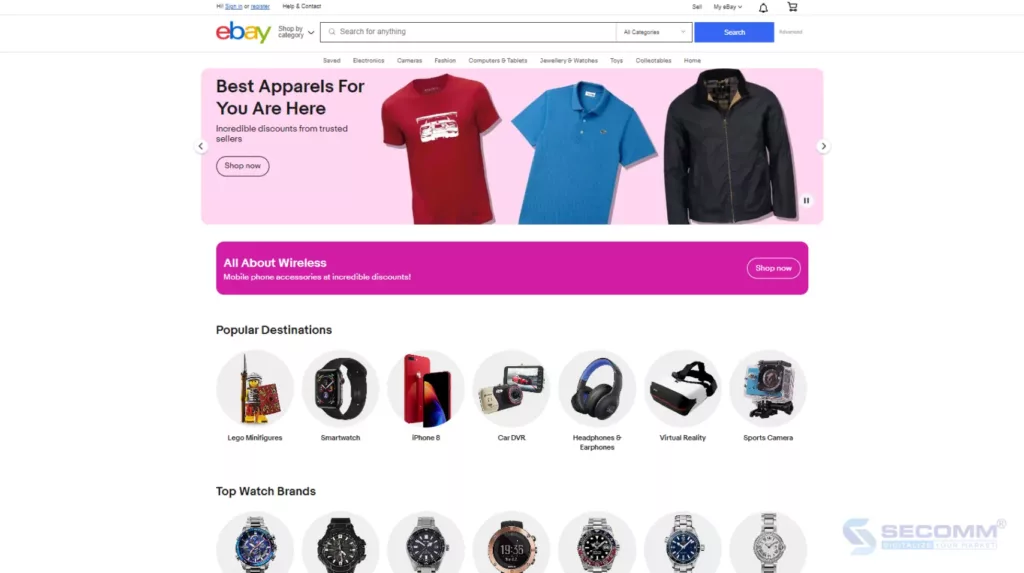
eBay is a well-established and trusted name in the global eCommerce landscape. It has won over Singaporean consumers with appealing and efficient online shopping experiences. eBay Singapore is renowned for its ability to connect buyers and sellers worldwide, creating a vast global online marketplace. With millions of items available for sale on the platform, ranging from brand-new to gently used products, customers can easily discover items that suit their needs and budgets.
Furthermore, the multi-vendor marketplace offers customers flexibility in payment and delivery options. Customers can opt for popular payment methods like PayPal or credit cards and also take advantage of international shipping services to have their purchases delivered directly to their doorstep.

Zalora is a popular multi-vendor marketplace in Singapore, offering fashion and style products from both local and international brands. With its diverse array of items spanning from apparel, footwear, and accessories to jewelry and cosmetics, Zalora has become the go-to destination for fashion enthusiasts seeking to express their unique style. What sets Zalora apart is its dedicated focus on the fashion and style market, delivering users a flawless online shopping experience in this realm. Beyond just a platform for purchasing products from renowned brands, the eCommerce marketplace serves as a hub for individuals to explore and cultivate their style.
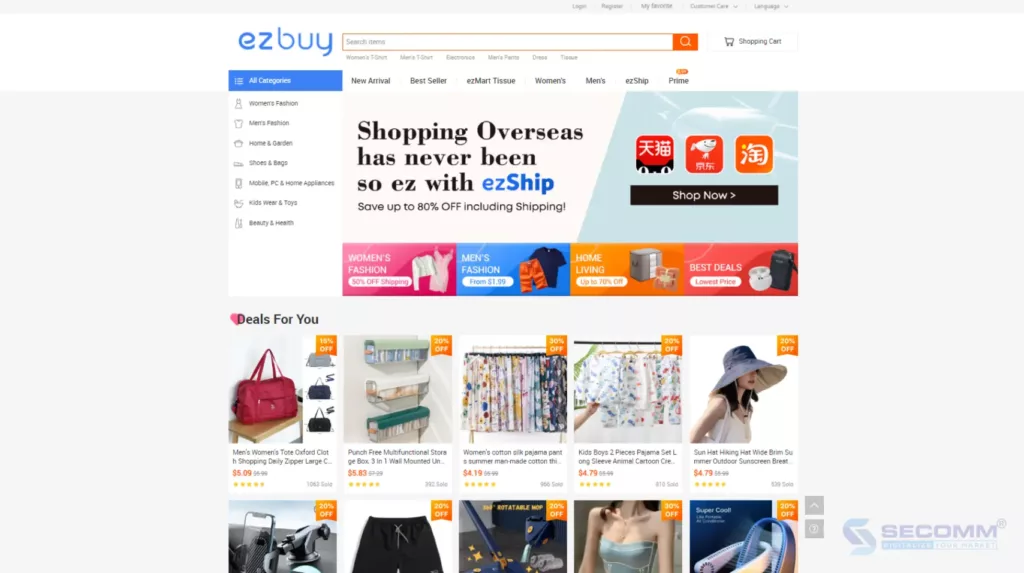
The online marketplace EZbuy is renowned for its convenient and cost-effective international shopping services. With EZbuy, customers can easily access and purchase hundreds of thousands of products from China, Korea, the US, and many other countries at reasonable prices with convenient shipping services.
Operating as an intermediary shopping model, the EZbuy eCommerce marketplace helps users circumvent complications related to import taxes, international shipping fees, and complex customs procedures. Instead of handling these procedures themselves, users can effortlessly shop for products from overseas through EZbuy and conveniently await delivery at home.
In summary, the Singapore eCommerce market is thriving with a variety of top-tier multi-vendor marketplaces. Each platform offers unique features and the best services to meet the shopping needs of customers. The success of these giants serves as motivation for many businesses to join and lays the groundwork for further development of the eCommerce market in Singapore in the future.
Need more advice for multi-vendor marketplace development? Contact SECOMM today!
 16
16
 3,461
3,461
 0
0
 10
10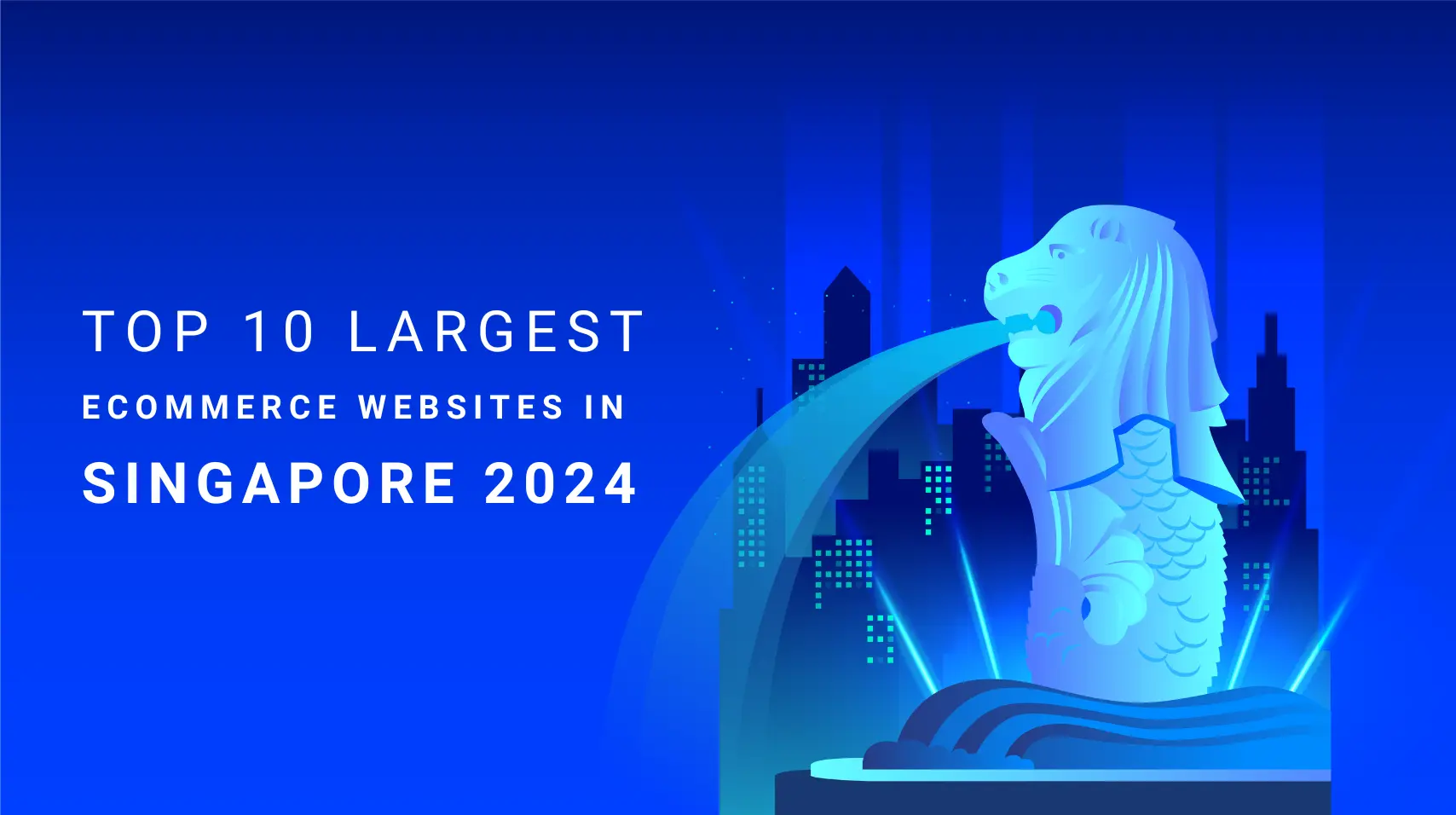
Online shopping has become an indispensable trend in Singapore. Therefore, consumers in this city have set higher demands for their online shopping experience, driving businesses to strive for optimizing their eCommerce websites to provide a unique and best shopping experience for customers.
Below are 10 brands heavily investing in the online shopping experience in Singapore, as collected by SECOMM from BuiltWith, AfterShip, and Similarweb.

Charles & Keith, a leading fashion brand in Singapore, was founded in 1996 by two brothers Charles and Keith Wong. Focusing on footwear, handbags, and fashion accessories, Charles & Keith quickly gained attention in the market for its modern, youthful fashion style at affordable prices.
Charles & Keith has chosen Salesforce Commerce Cloud to build its website. Thus, Charles & Keith’s website features a range of functions to create the most convenient and comfortable online shopping experience for users. These include advanced search with filtering and sorting, detailed product views with high-quality images and customer ratings, secure shopping cart and payment, along with order tracking and purchase history. Additionally, customers can enjoy loyalty rewards, seek customer support, read fashion blogs, and connect on social media to stay updated on the latest trends. With this diversity and convenience, Charles & Keith’s eCommerce website in Singapore has provided an excellent online shopping experience for users.

FortyTwo is a furniture and home accessories brand established in Singapore in 2007. FortyTwo offers a range of products from bedroom furniture, living room, kitchen to household items and interior decoration. The brand is known for providing quality products at competitive prices with fast delivery and attentive customer service. FortyTwo regularly updates and expands its product portfolio to meet diverse customer needs.
FortyTwo’s website is built on the Magento Open Source platform (Adobe Commerce free version). With this website, users can easily search and filter products, explore a variety of product categories from furniture to household items. Additionally, the website offers the ability to integrate attractive promotional campaigns and customer support, along with fast and secure delivery services.

COURTS is a leading electronics retailer in Singapore, Malaysia, and Indonesia. With over 40 years of experience, COURTS offers customers a wide range of product choices, convenient services, and competitive prices.
COURTS uses Magento Open Source to build its eCommerce website. This website provides diverse and convenient online shopping experiences for users with functions such as product categories, specific product search, store information, and order tracking on the website. COURTS also provides support services and information about promotional programs and product news.
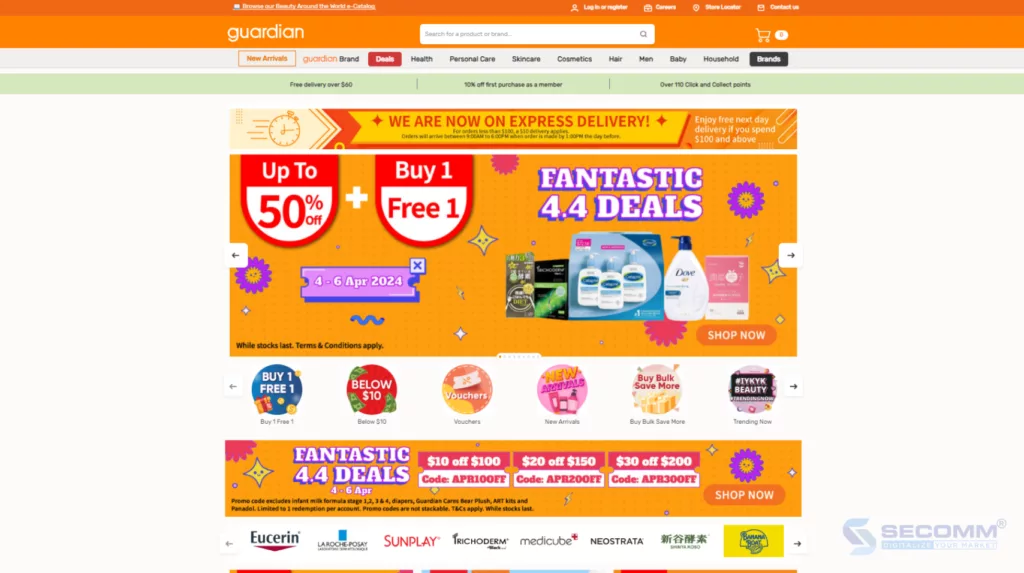
Guardian is a retail chain specializing in health care, cosmetics, and other consumer products. Guardian has a presence in many countries and regions around the world, including Singapore, with a range of products from famous and reliable brands.
Guardian’s website is built on the SAP Commerce Cloud platform, offering many useful features for users. Customers can easily search and purchase products, manage their shopping carts, and make convenient payments. At the same time, the website offers promotions and online support services to help customers have a comfortable and safe online shopping experience. Moreover, customers can also rate and provide feedback on products, providing useful information for other users.
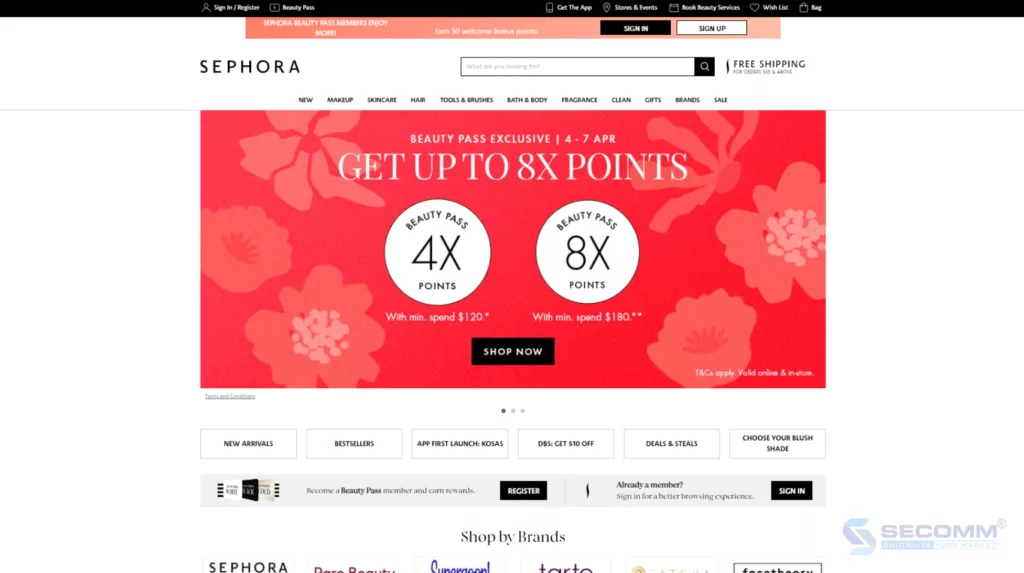
Similar to Guardian, Sephora is a global retail chain of cosmetics and beauty products, known for offering a range of cosmetics, skincare, and beauty products from leading brands worldwide. Currently, Sephora has a presence in the Singapore market with physical stores in major shopping centers and an eCommerce system, including a website and app for customers. Sephora is favored for its product diversity, customer care services, and innovation in the online cosmetics shopping experience.
Sephora’s eCommerce system in Singapore is built on the Vue.js and Nuxt.js programming languages. With this system, Sephora customers can quickly search and explore products through smart search and various filters. The online shopping experience is optimized with detailed product information, sharp images, and customer reviews.
Sephora’s app is also highly rated, making shopping easier for customers with features like “Virtual Artist” and receiving notifications about promotions. In general, Sephora offers a range of features and services to meet customers’ cosmetics shopping needs, creating a professional and convenient online shopping experience.
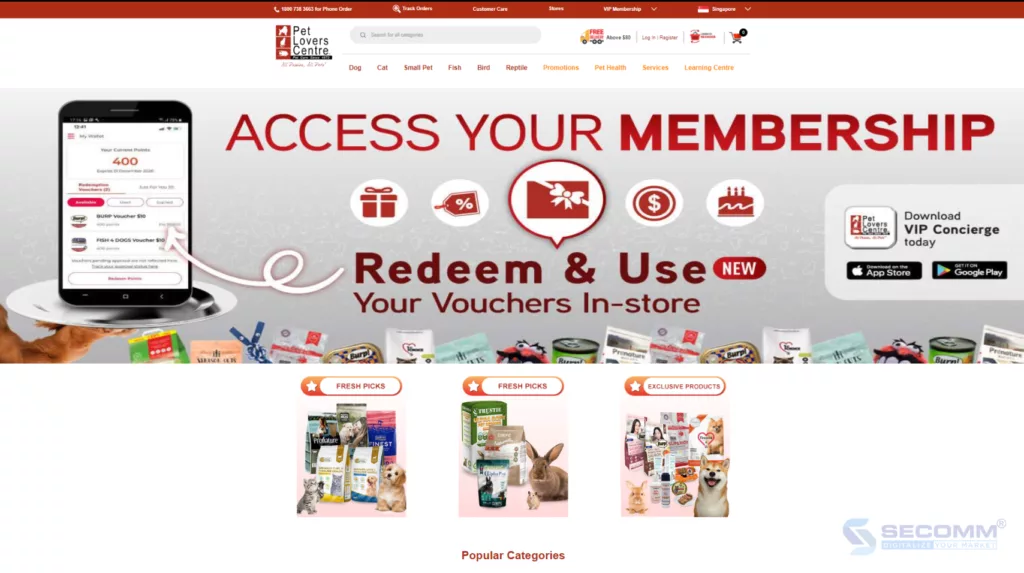
Pet Lovers Centre is a leading pet products and services retailer in Asia. Established in 1973 in Singapore, Pet Lovers Centre now has over 160 stores in 5 countries: Singapore, Malaysia, Thailand, the Philippines, and Vietnam. Pet Lovers Centre is committed to providing quality products and services from reputable brands at competitive prices.
The Pet Lovers Centre website is built using PHP programming language and has outstanding features to provide users with a convenient online shopping experience. Users can search for products based on various criteria and use filters to select suitable products. The multi-layered product categories are classified by pet type, ensuring diversity and richness. The VIP Member program brings benefits to customer loyalty strategies. Integrating customer reviews on Google Maps helps users evaluate the quality of products and services provided by Pet Lovers Centre. Additionally, the website builds a quick shopping function to save time, customer management feature, and reorder support to efficiently manage customer information and orders.

HipVan is an online retail website specializing in furniture and home decor, headquartered in Singapore. The brand was founded in 2013 with the aim of providing customers with high-quality furniture products at affordable prices, along with a convenient shopping experience and excellent customer service.
HipVan’s website is built using the Ruby on Rails and React framework, with Ruby being the primary programming language. Its notable features include building a community for sharing interior design ideas, image-based product search, and allowing customers to upload images of desired products. Particularly, the augmented reality (AR) feature enables customers to view products in their real-life space before making a purchase. Additionally, HipVan offers free interior planning services to help customers conveniently plan and design their living space.

The Hour Glass is a premium watch retailer in Singapore founded in 1974. Currently, The Hour Glass has over 50 stores worldwide and is an authorized distributor for many leading watch brands such as Rolex, Patek Philippe, Audemars Piguet, Omega, Cartier, and more.
The Hour Glass’s online store is built on the WooCommerce platform and CMS WordPress, providing a convenient platform for customers to explore and purchase watches from renowned brands like Rolex, Patek Philippe, Audemars Piguet, and other luxury brands. In addition to product offerings, the website also provides detailed information about the services offered by The Hour Glass, including repairs, maintenance, and polishing of watches, to help customers maintain and preserve their products effectively. Furthermore, the website continuously updates the latest news in the watch industry along with special events organized by The Hour Glass, creating a comprehensive and immersive experience for users.

Megafurniture is a furniture retail company in Singapore, specializing in providing a range of furniture products for living rooms, bedrooms, dining rooms, and various other spaces in homes. Megafurniture is known for offering affordable and high-quality products, attracting the interest of many consumers. Additionally, the furniture brand is also renowned for its early investment in the online store, allowing customers to conveniently shop for furniture online.
Megafurniture’s website is built on the leading Shopify Plus platform, with basic and advanced features optimized for the furniture industry. The purchasing process is designed to be simple and straightforward, providing a convenient online shopping experience for customers. Secure online payment support through various methods increases flexibility for consumers. Megafurniture also offers multiple delivery and installation options to meet customer needs. Moreover, features like quick product view and product comparison assist users in making smart and efficient purchasing decisions. This, combined with fast checkout features, significantly enhances the online shopping experience.
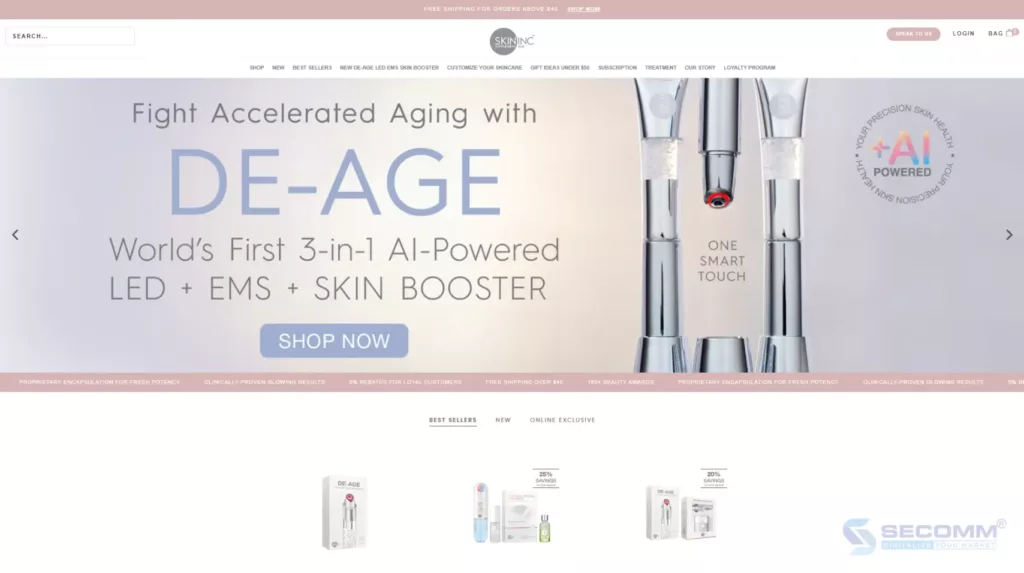
Skin Inc is a skincare brand specializing in manufacturing and distributing high-quality skincare products. The company focuses on providing skincare solutions, including brightening, moisturizing, anti-aging, and treating various skin concerns.
Skin Inc transitioned from the Magento platform to Shopify Plus in 2019, aiming to enhance the customer experience by deploying multiple website versions for different markets and customer segments. Using the LaunchPad feature, Skin Inc employees can create sales events without developer assistance. Additionally, Shopify Plus seamlessly integrates with marketing tools and loyalty programs, enabling personalized communication and data-driven marketing strategies.
Conclusion
The above is a list of the top 10 eCommerce websites in Singapore. By implementing leading platforms such as Magento Open Source, Shopify Plus, and various others, these brands provide optimized online shopping experiences, attracting the interest of customers both domestically and internationally.
During its development process, SECOMM has collaborated with numerous clients from Singapore to create notable eCommerce websites, with the most prominent being the project to develop an online liquor supply system at Changi Airport.
 2
2
 2,749
2,749
 0
0
 1
1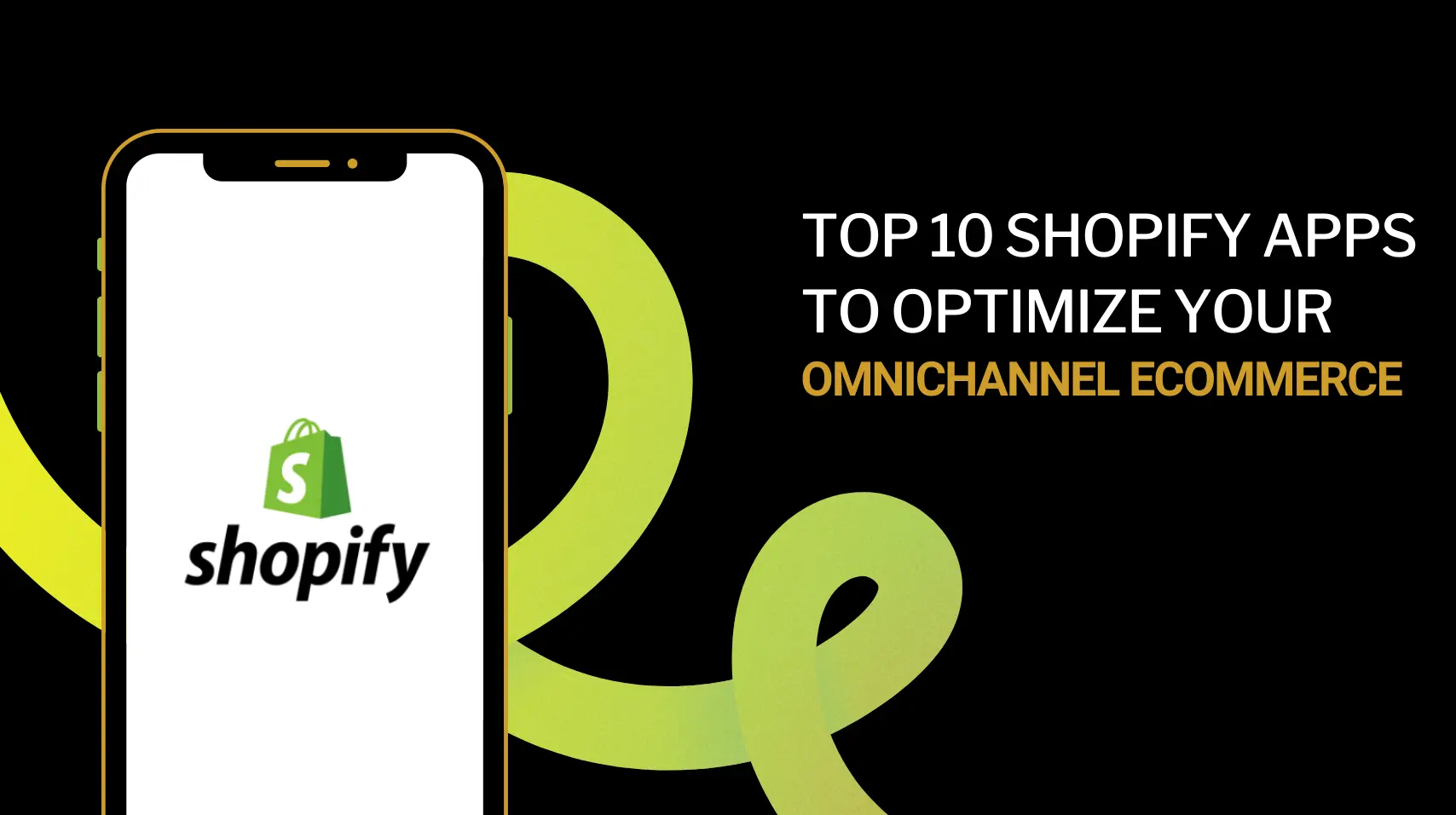
Shopify apps are recognized not just for their range of exceptional tools and features but also as robust and adaptable catalysts for business growth within the Shopify ecosystem. Beyond the code and user-friendly interfaces, Shopify apps are reshaping how businesses engage with customers both online and in-store.
But what happens when these Shopify apps are integrated into an Omnichannel system? The answer lies in the seamless combination of technology and business strategy, creating a unified and appealing shopping experience across every channel.
In this article, let’s delve into 10 top Shopify apps that you need to know to elevate your Omnichannel eCommerce strategy to new heights and deliver true value to your customers.
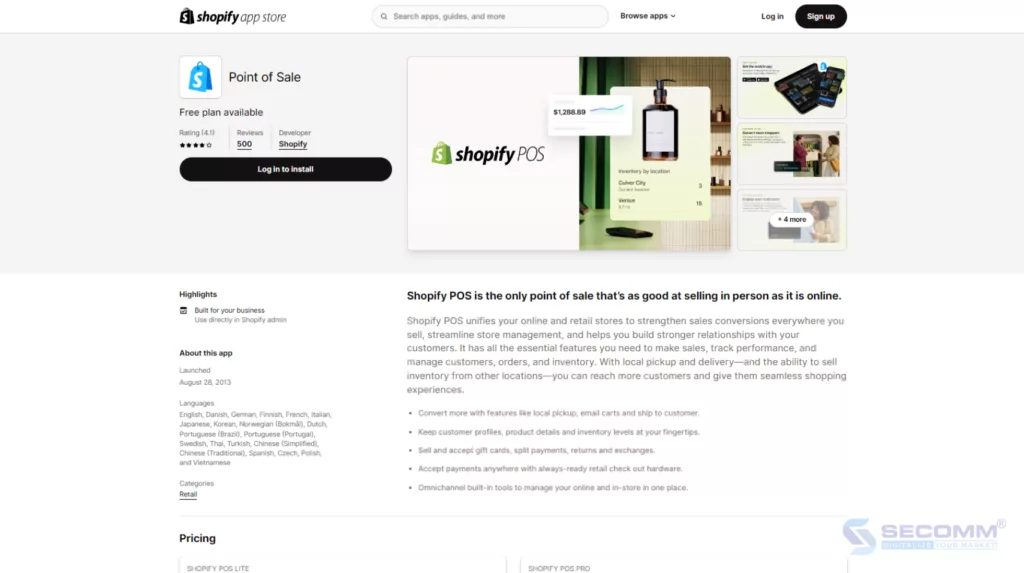
POS (Point of Sales) is known as Shopify’s most comprehensive solution for supporting online, offline and omnichannel sales activities. This Shopify app comes in two versions: Lite and Pro. Both enable merchants to accept payments, manage customer profiles, handle inventory, and track orders from all channels on a unified platform. Integrating Shopify POS helps deploy Omnichannel eCommerce more efficiently, delivering a seamless customer experience from online to offline with various shopping options such as:
Rating: 4.1/5
Key features:
Price:
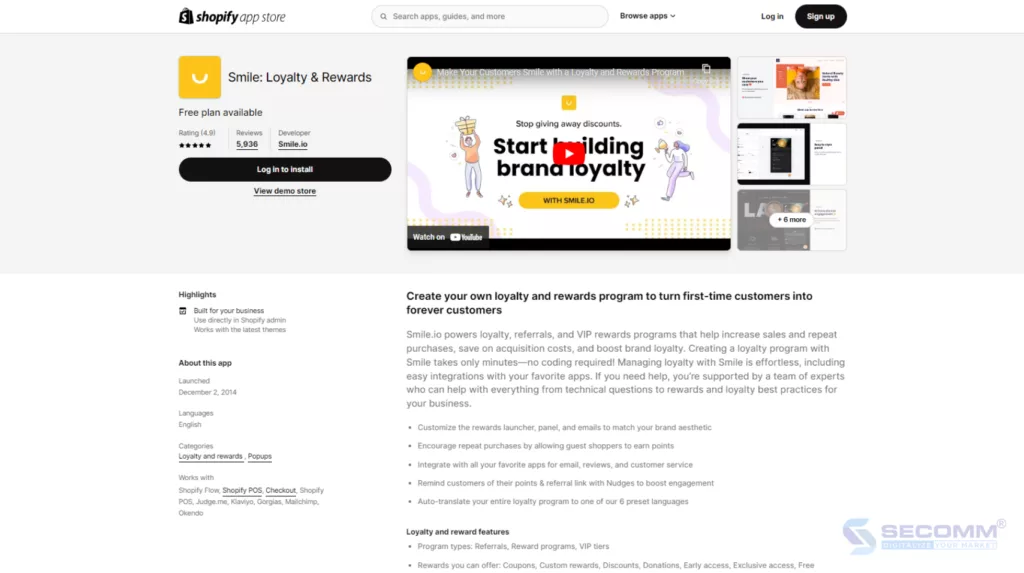
Smile is an easy-to-use platform designed to create promotional campaigns and customer loyalty programs, aiming to boost sales and customer retention. With Smile, you can establish point systems, discount vouchers and special offers to encourage repeat purchases and enhance customer interactions across various channels.
As one of the valuable Shopify apps for deploying Omnichannel eCommerce, Smile facilitates seamless integration with other marketing and sales campaigns such as email, subscriptions, and POS. This ensures a more intuitive, diverse, and engaging experience for customers.
Rating: 4.9/5
Key features:
Price:
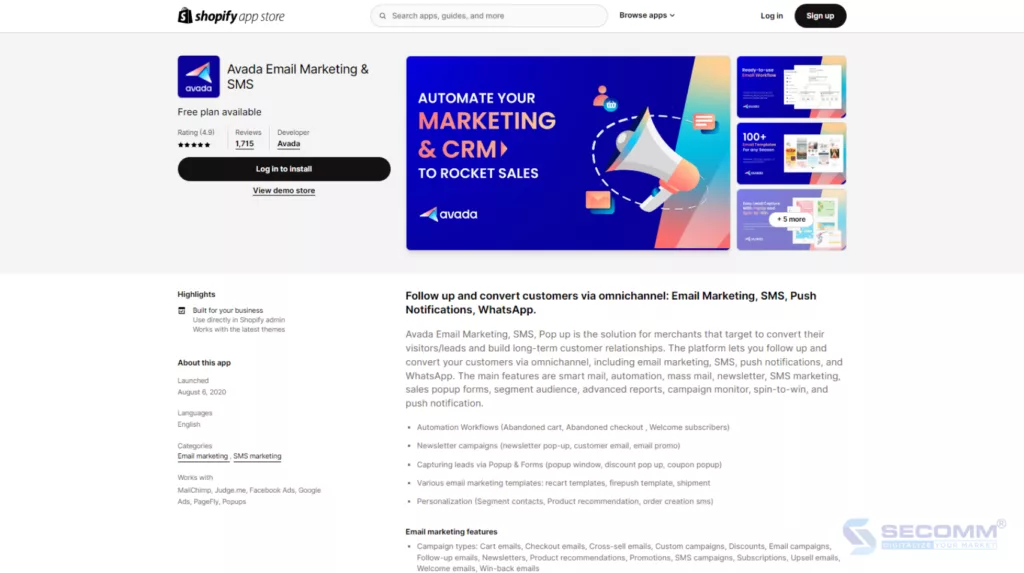
Avada is one of Shopify Omnichannel apps that allows to create and automate email marketing and SMS strategies. Regarded as an efficient solution, it enables brands to engage, follow up, convert, and foster long-term customer relationships through various channels such as email, SMS, pop-ups, push notifications, and WhatsApp. This facilitates seamless Omnichannel Marketing optimization across online and offline platforms.
Rating: 4.9/5
Key features:
Price:
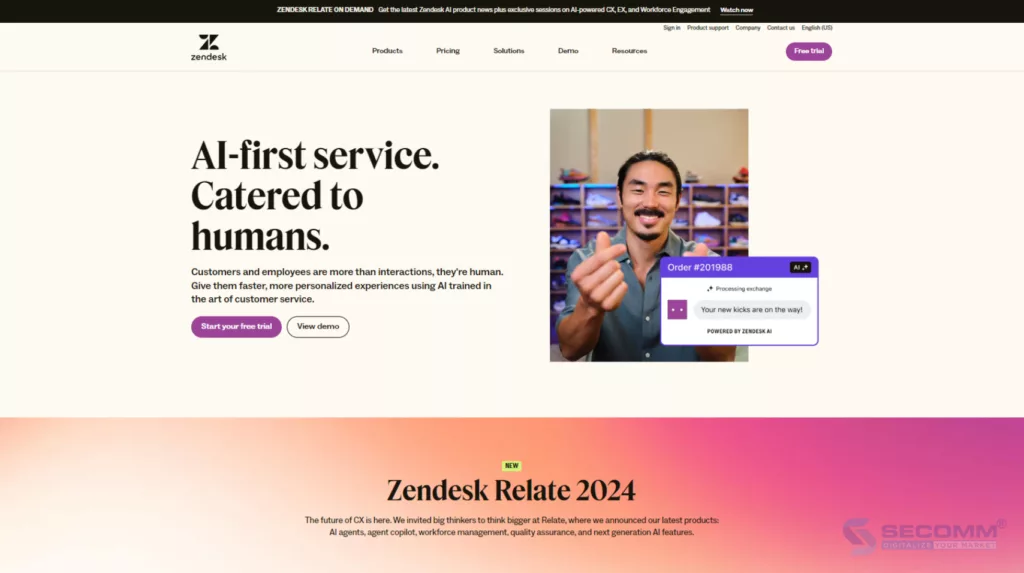
Deploying Omnichannel eCommerce or any type of online business requires meticulous customer care services. Zendesk is the perfect solution to streamline this process.
This Shopify Omnichannel app enables you to engage with customers via email, hotline, live chat, social media, and various other channels, all managed through a single, simple and intuitive dashboard. Integrating the Zendesk app into the Shopify system can enhance customer relationships and efficiently resolve customer issues.
Rating: 2.9/5
Key features:
Price:
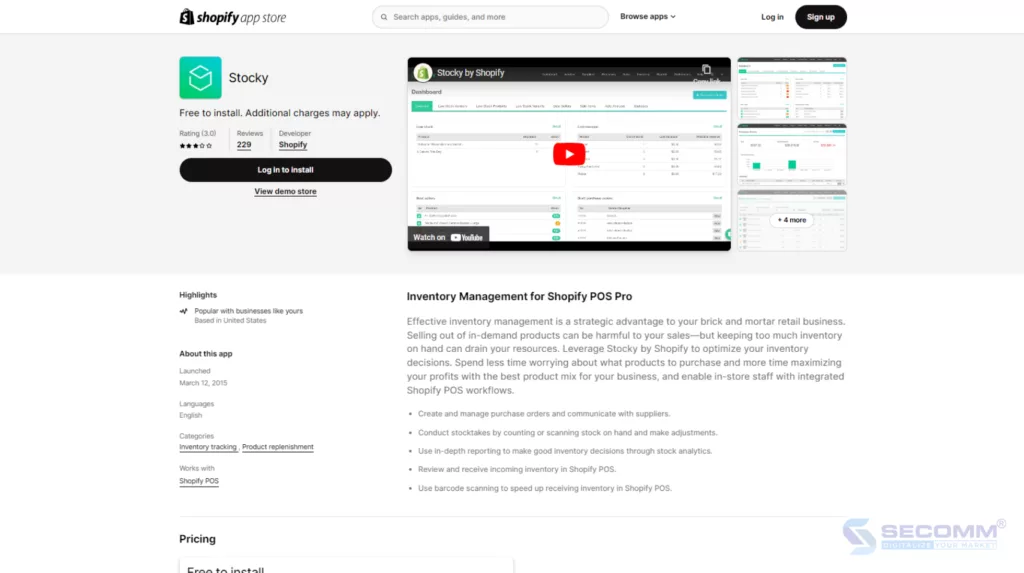
This inventory management app is specifically designed for Shopify POS Pro, offering the most advanced and comprehensive inventory solution to date. It’s also a valuable Shopify app to integrate for effective Omnichannel eCommerce deployment. Stocky allows the synchronization of order and inventory data between online and offline retail stores. This helps optimize inventory management, streamline business processes, and provide a seamless shopping experience for customers.
Rating: 2.9/5
Key Features:
Price: Free to use
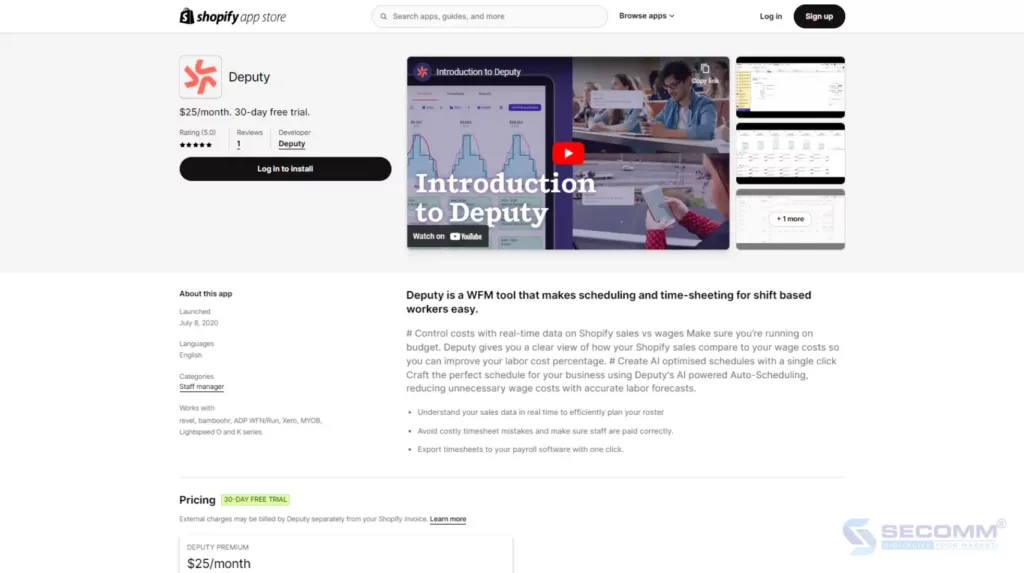
Managing personnel during Omnichannel eCommerce deployment is a challenge. Deputy is here to help overcome that challenge. With Deputy, you can optimize employee management processes and your schedules.
This Shopify app enables managers to monitor employee schedules, efficiently manage shifts, and assign tasks effectively. Additionally, Deputy leverages real-time data from Shopify sales reports, allowing managers to optimize employee schedules to minimize costs. Deputy also offers quick and accurate digital timesheets for payroll calculations.
Rating: 5/5
Key Features:
Price: Free 30-day trial. $25/month.

Endear is a powerful CRM and customer care app designed to help retailers increase sales and strengthen customer relationships. This Shopify app allows businesses to organize customer data, send personalized emails and SMS messages, and analyze employee outreach capabilities and sales performance.
Rating: 4.3/5
Key Features:
Price: Free 14-day trial
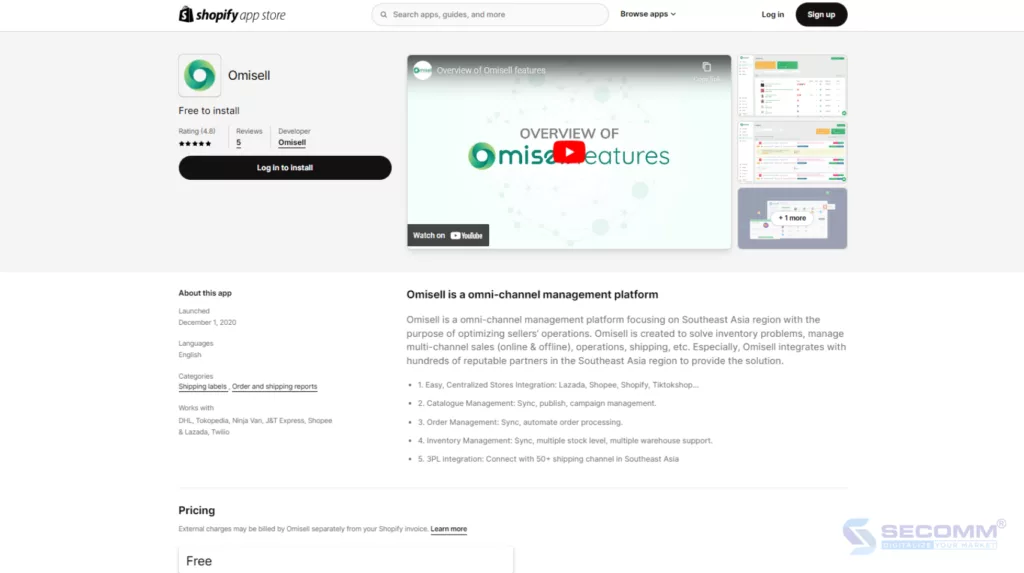
Omisell is a leading multi-channel management application, that allows one to manage orders, inventory, and deliveries across multiple sales channels from a single interface. This Shopify app helps optimize management processes and ensures synchronization between various sales channels.
Rating: 4.6/5
Key Features:
Price: Free to use
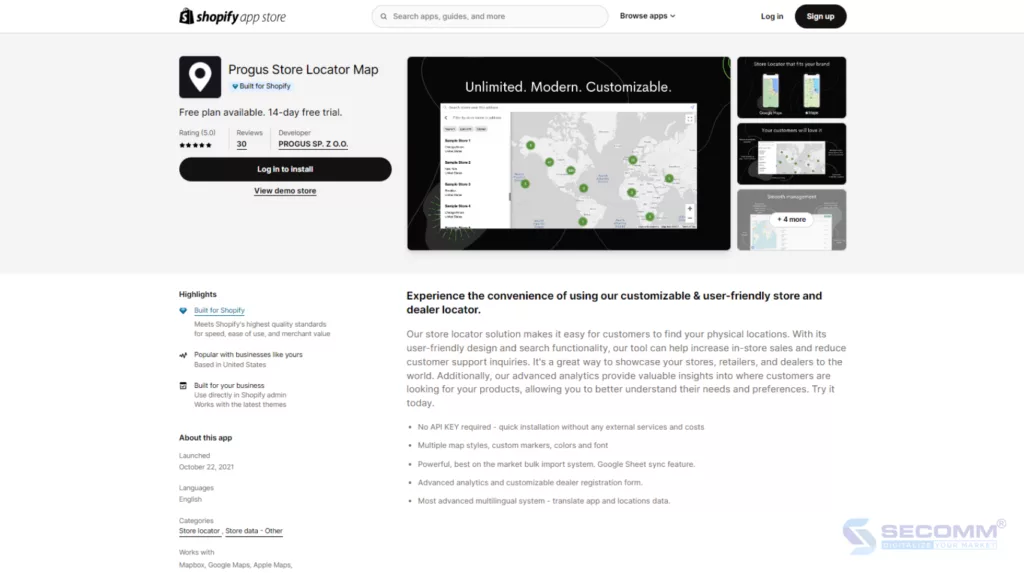
Progus is one of the useful Shopify apps that allows users to create a map displaying retail stores on the eCommerce website. This will help customers easily search for and locate the nearest store to them. This Shopify app creates a convenient and seamless shopping experience for customers from online to offline, while helping increase conversion rates.
Rating: 5/5
Key Features:
Price: Free 14-day trial
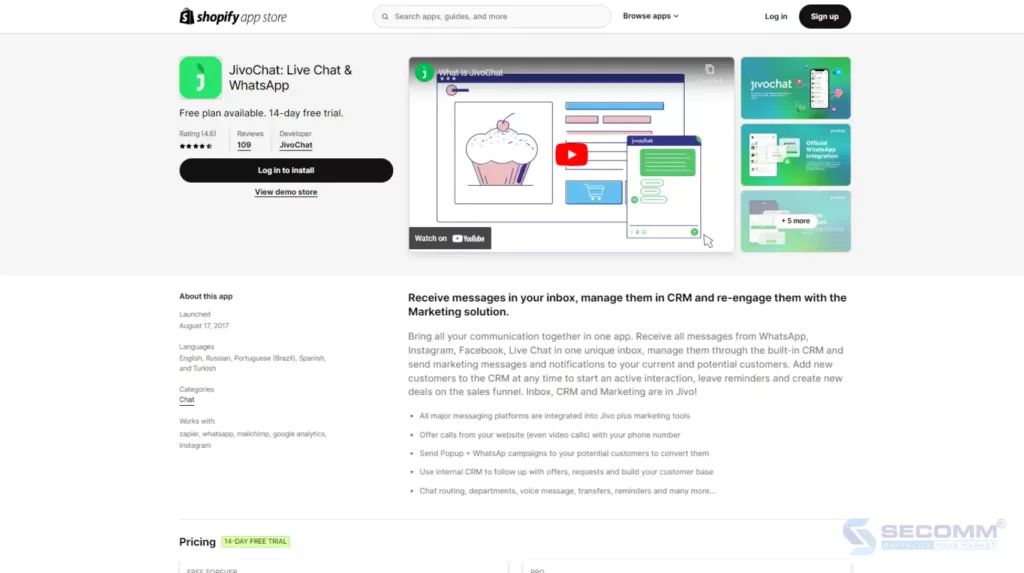
JivoChat is an app that enables users to engage in messaging exchanges to directly support customers from the eCommerce website. JivoChat can integrate and receive messages from popular platforms such as Facebook, Instagram, WhatsApp, and LiveChat. All messages are efficiently managed through an internal CRM system, allowing appropriate notifications or marketing messages to be sent to current and potential customers. This Shopify app not only provides an engaging multi-channel chat experience for customers but also strengthens the relationship between them and the business, significantly increasing conversion rates.
Rating: 4.7
Key Features:
Price:
In recent years, deploying Omnichannel eCommerce has become not just an option but a necessity for a brand to survive and thrive. With support from leading Shopify apps, brands can build a robust and flexible multi-channel sales system, providing a memorable shopping experience for their customers.
From Shopify POS to Smile, Zendesk, and Stocky, each application offers unique solutions to optimize Omnichannel eCommerce strategies. From inventory management to creating promotional strategies and direct customer interactions, each tool plays a crucial role in enhancing the shopping experience and strengthening customer relationships.
Need advice on choosing the most suitable Shopify app? Contact SECOMM or call the hotline (028 7108 9908) today!
 2
2
 1,839
1,839
 0
0
 1
1
With the economic challenges post-COVID-19, IT outsourcing has become a go-to solution for businesses aiming to use their budgets effectively. They’re partnering with outsourcing companies for IT tasks instead of solely depending on in-house teams.
Meanwhile, the IT sector is rapidly growing, fueled by ongoing tech advancements. Outsourcing is crucial to this growth, which is expected to soar to USD 525.2 billion by 2030, growing at a CAGR of 9.4% from 2023 to 2030. This points to a sustained high demand for IT outsourcing well into the decade.
When considering outsourcing software tasks, it’s crucial to identify the best countries for the job. The ideal locations are those that excel in technological expertise, offer favorable business environments, lead in innovation, and have strong English language proficiency. The following list will highlight the top 10 countries with stand-out IT dedicated teams that could be considered prime choices for IT outsourcing services.

India has consistently been at the forefront of the outsourcing sector and is renowned for its extensive pool of IT and software development talent. The country’s cost-effective services, proficiency in English, and solid tech infrastructure have established it as a preferred choice for global businesses. With more than 1.5 million IT graduates each year, India ensures a continuous influx of skilled professionals to satisfy the increasing demands of the outsourcing market in Asia.
Moreover, India’s cost structure is generally more affordable than Western countries, making it an attractive option for companies looking to outsource development tasks. For instance, according to Upwork, software developers in India typically charge between $18 and $39 per hour, which is significantly lower than the $50 to $60 per hour rate in the United States or Germany, with the average rate from $150 to $250 per hour. This combination of a large, skilled workforce and competitive pricing positions India favorably against other leading IT outsourcing destinations.

Just like India, China’s massive talent pool and diverse skill set make it one of the best countries for outsourcing, and it has emerged as an IT outsourcing power dominating the labor market. With an education system that promotes Math and Science, China provides some of the world’s best technology and IT services.
In terms of talent pool, China is one of the largest producers of IT graduates worldwide, boasting over 3 million IT graduates a year (this number is quite significant compared to India due to its large population). This vast number of highly educated and skilled individuals further solidifies China’s position as a desirable destination for outsourcing.
Additionally, the Chinese government actively supports IT development and invests in education to build a strong talent base. It focuses on advancing STEM (science, technology, engineering, and mathematics) education, which is essential for the IT sector. This approach improves learning in science and math, which is foundational for IT expertise.
In 2024, China remains a competitive choice for outsourcing, with an average IT outsourcing salary of about $20-$45 an hour, striking a balance between cost-effectiveness and quality output. This affordable rate and the country’s commitment to technological advancement make China an appealing choice for businesses worldwide.

The Philippines is a sought-after hub for software development outsourcing and BPO is favored for its cost-effective labor and proficient workforce. English is the official language, simplifying communication and aligning with the country’s strong cultural connections to the US. This understanding of Western work culture is a significant advantage, especially since 94% of the population speaks English.
With around 190,000 developers stationed in key BPO centres like Manila, Cebu, Davao, and Bacolod, the Philippines is recognized as a leading IT outsourcing hub, especially in the healthcare and fintech sectors.
The educational system in the Philippines annually produces approximately 200,000 IT graduates, emphasizing IT and technical skills to create an adaptable and globally competitive workforce. In 2024, the average IT outsourcing salary stood at around $20-$60 an hour, affirming the Philippines’ position as one of the most economical offshore outsourcing destinations.

Similar to the Philippines, Brazil shares cultural affinities with the US, which translates into high-quality IT services at competitive rates. This cultural resonance, coupled with its strategic location, makes Brazil a preferred partner for North American IT firms.
Brazil’s commitment to building a skilled tech workforce is reflected in the production of about 150,000 IT graduates each year. The government’s efforts to perfect the technological education infrastructure set Brazil apart as a top destination for offshore software development.
Although Brazil’s outsourcing costs are slightly high, with the average IT outsourcing salary at approximately $20-$50 an hour and an annual software engineer salary of around $12,000, it remains a competitive market. The country’s youthful population, 38% of which are young, positions Brazil as an ideal locale for hiring junior developers, underlining its robust and skilled tech workforce.

Vietnam is advancing as a notable destination for IT outsourcing, backed by a vast pool of skilled IT professionals. The country’s educational system, with over 300 IT-focused universities and centres, produces around 57,000 IT graduates each year. The Vietnamese government’s dedication to the IT sector is evident through supportive policies and incentives, contributing to Vietnam’s ranking within the top 50 digital nations.
The IT outsourcing market in Vietnam is forecasted to reach $698.90 million in revenue in 2024, with an anticipated annual growth rate of 16.38%, leading to a market volume of $1,282.00 million by 2028. The enterprise software segment is expected to achieve a market size of $247.3 million by the end of 2024. Moreover, the average spend per IT outsourcing employee is projected to be $11.80 an hour in 2024. These figures highlight a dynamic IT outsourcing market with an outstanding IT dedicated team in Vietnam, with growing employment and increasing value per employee, reflecting the nation’s investment in education and technological infrastructure.

Poland is a standout choice for IT outsourcing within Europe. Its central position in Europe and EU membership and a strong pool of software engineering talent make it an attractive base for businesses looking to grow in the European market.
The country’s IT industry is well-developed and supported by numerous universities that provide computer science education. Recent reports indicate that there are between 63,000 and 78,000 students enrolled in IT and ICT degree programs, with an annual graduation rate of about 10,500 to 13,500.
A significant draw for the IT Outsourcing market in Poland is the cost-effective yet highly skilled workforce, which is more affordable than in many other European nations. The cost for offshore software development services in Poland typically ranges from $40 to $56 per hour, depending on the project. This positions Poland as one of the leading Eastern European countries for cost-efficient programming expertise.

Malaysia is gaining traction in the IT outsourcing industry due to its cost-effective solutions and skilled workforce. Over 60% of Malaysians speak English, which, along with strong government support, makes the country an appealing outsourcing destination.
Annually, Malaysia produces around 100,000 IT graduates, reflecting its commitment to digital skills development. The government bolsters this with initiatives like tax incentives and funding for R&D.
In Malaysia’s tech sector, the average monthly salary is about $3,500, with an hourly rate of $14. These rates are lower than in the US or Western Europe. Moreover, a key development in Malaysia’s IT outsourcing is the growth of cloud computing and mobile app development. IT firms are investing in these technologies to offer better and more cost-effective services.

Argentina’s IT industry is attractive to US and European clients due to English proficiency, cultural similarities, and time zone alignment. Competitive pricing and a highly skilled workforce add to its appeal. Web developers’ costs vary from $20 to $60 per hour, or around $14,100 yearly, based on experience.
With over 115,000 developers, many from top universities, Argentina’s education quality is evident. The country’s 2023 QS World University Rankings featured over 40 renowned computer science programs, 14 of which are in Buenos Aires, ensuring well-educated IT professionals.

Egypt’s rise in the IT outsourcing market is attributed to its skilled workforce and cost-competitive services. The country’s low labor costs, combined with a large pool of engineering and development talent, make it a lucrative option for companies seeking IT outsourcing services.
The average hourly rate for IT outsourcing in Egypt in 2024 was between $25 and $50, presenting a budget-friendly choice for businesses. The ITIDA reports that an IT professional’s average annual salary in Egypt is about $10,000, significantly below the global average of $45,000.
Egypt’s educational system contributes around 50,000 IT graduates each year to the industry, ensuring a steady supply of technically skilled professionals. The Egyptian government is proactively enhancing the IT sector by offering incentives and training to expand the talent pool. This initiative is expected to grow the industry significantly.

Mexico’s IT Outsourcing market is attractive for several reasons, including cost savings, access to a pool of skilled talent, and the ability to quickly scale operations.
In 2024, the average hourly rate for IT outsourcing in Mexico was estimated to be between $20 and $40. While this rate is slightly higher than some other outsourcing destinations, it is balanced by the advantages of geographical closeness, time zone compatibility with the US, and a deep understanding of Western business practices.
Mexico’s higher education system is on par with that of the United States and Europe, contributing to the supply of skilled IT professionals, with approximately 120,000 IT graduates produced annually.
The Mexican IT Outsourcing industry has seen steady growth over the past decade and is currently ranked as the fourth-largest IT outsourcing destination in Latin America. The industry’s expansion is expected to continue, driven by increasing demand for services such as software development, data analytics, and cloud computing.
To Sum Up!
The IT outsourcing market in 2024 is a strategic asset for businesses aiming to innovate and grow. It offers cost-effective access to skilled talent, driving operational efficiency and competitive advantage. Outsourcing is no longer just an option; it’s a strategic necessity that allows companies to focus on core competencies while outsourcing non-core activities to experts worldwide.
At Secomm, we can provide you with the best of our IT dedicated team, who have more than 10 years of experience in the IT sector. Feel free to contact SECOMM or call our hotline at (+84) 28 7108 9908 to ensure that your IT operations are handled by top-tier talent, fostering innovation and propelling your business forward.
 2
2
 3,973
3,973
 0
0
 2
2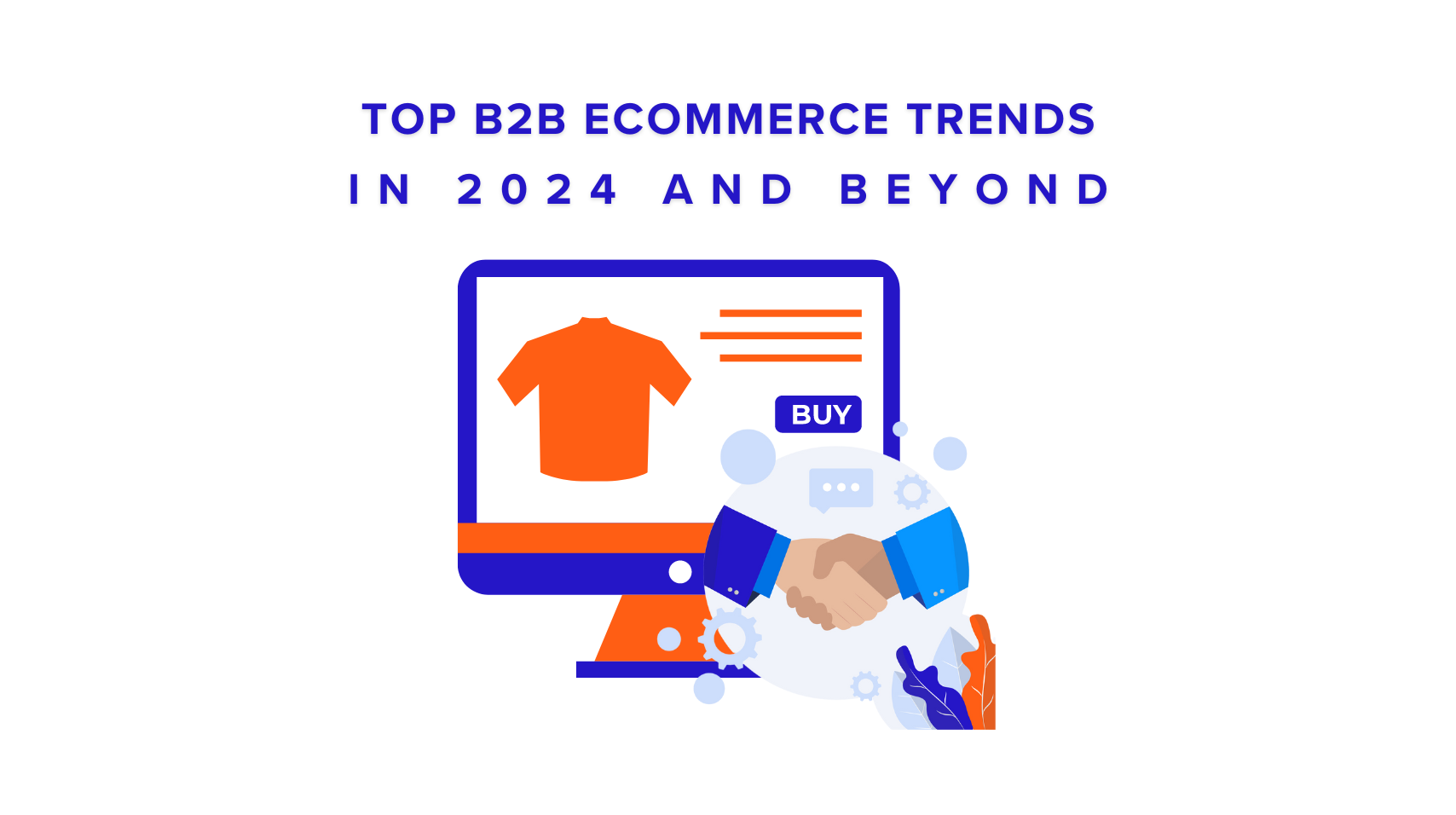
In the current B2B market, buyers are becoming more tech-savvy, mirroring the independent purchasing patterns of B2C consumers. This shift is driven by the changing demographics of B2B buyers, with 64% being Millennials and Gen Z, according to Forrester. Moreover, Gartner notes that 44% of Millennials prefer to make purchases without the involvement of sales representatives.
As a result, B2B eCommerce trends are rapidly evolving, influenced by both consumer behavior and technological progress. The increasing integration of generative AI into eCommerce, and the merging of online and offline experiences, are all pivotal trends. Keeping pace with these developments is essential; otherwise, businesses risk lagging in the fiercely competitive B2B eCommerce landscape.
In this article, let’s explore the top 8 B2B eCommerce trends that will shape the industry in 2024 and for many years to come.
AI is making big strides in online shopping. AI chatbots are now a key part of customer service, offering personalized assistance and product suggestions. For example, Shopify Magic has AI tools that help create content and provide tailored shopping advice.
Chatbots are widespread, with over 1.4 billion people interacting with these AI systems worldwide. Retailers who have adopted AI have seen a significant increase in sales. It’s predicted that by 2027, 80% of retail leaders will use AI to enhance efficiency in their operations.
Beyond retail, AI is set to make a major impact on the economy. PwC estimates that AI could contribute as much as $15.7 trillion to the global GDP by 2030, affecting many industries.
Businesses are increasingly turning to automation to improve efficiency without growing their teams. According to Markets and Markets, the marketing automation industry is expected to grow from USD 5.2 billion in 2022 to USD 9.5 billion by 2027, with a 12.8% yearly growth rate. Additionally, 57% of companies plan to use automation to make their employees more productive.
Shopify Flow is a tool that automates routine tasks for businesses. It activates specific actions based on rules set by the user, simplifying the workflow.
With the rise of AI and automation, businesses are increasingly embracing an omnichannel strategy. This trend allows for seamless interaction across various channels, helping companies to be more budget-efficient in managing both their online and physical storefronts, ultimately enhancing customer satisfaction.
Data shows companies with robust omnichannel engagement retain 89% of customers, compared to 33% for those without. Additionally, 59% of consumers prefer self-research over interacting with sales-focused staff, highlighting the need for sales teams to prioritize customer guidance. Moreover, establishing a solid omnichannel base is essential, followed by streamlining all digital touchpoints for a unified and efficient customer journey. You can learn more on how to build an effective omnichannel strategy here.
In B2B e-commerce, the harmony of digital touchpoints is essential for delivering an exceptional customer experience and driving sales. Integrating all digital channels, such as payment systems, online stores, and customer support, is crucial. This integration provides a unified customer profile, streamlining management across multiple channels and focusing on omnichannel sales.
Streamlining transcends mere system connections; it ensures seamless data flow for personalized customer interactions. For instance, leveraging browsing habits for advertising and purchase history for customer service can develop comprehensive customer profiles.
Ultimately, streamlining is about fostering a consistent, reliable customer experience that bolsters brand interaction. Companies excelling in this are well-positioned for enduring success in the competitive B2B e-commerce market.
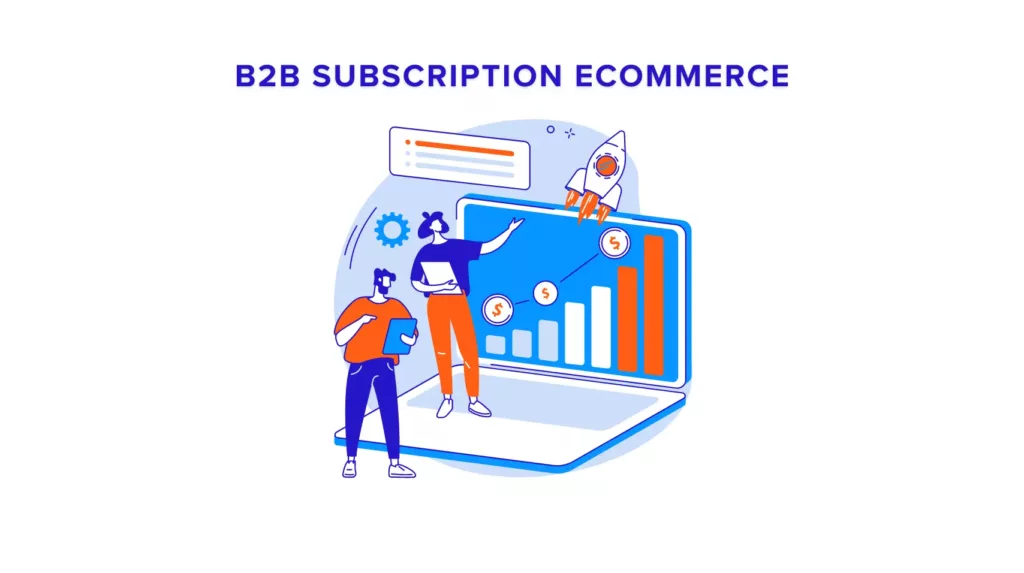
Subscription models are becoming vital for customer loyalty in B2B eCommerce, with the Global Subscription eCommerce Market expected to hit US$ 478 billion by 2025. These models offer a predictable revenue stream and deepen customer relationships beyond one-time sales. They cater to various business needs, from product supplies to software services. Moreover, as buying habits shift online, subscriptions align with customer preferences for self-services and problem-solving services.
Moreover, businesses often find that prioritizing the enhancement of the customer experience yields better results than constantly pursuing new leads. In the B2B sector, nurturing existing relationships and promoting additional purchases can be more profitable strategies than seeking out new customers. Find more about subscription eCommerce here.
Headless architecture is a way of building online stores where the front-end and back-end work separately but talk to each other through an API. This setup lets the back end hook up with any front end, making it perfect for businesses that sell across different channels.
Looking ahead to 2024, headless B2B eCommerce is on the rise. It’s not going to replace traditional eCommerce completely, but it gives businesses a leg up by being more adaptable, integrating better with other systems, scaling up easily, and making life easier for developers. All this leads to a better experience for business customers. The headless commerce market is booming; it’s expected to grow to $32.1 billion by 2027, with a yearly growth rate of 20.5%. You can find more information about headless eCommerce here.
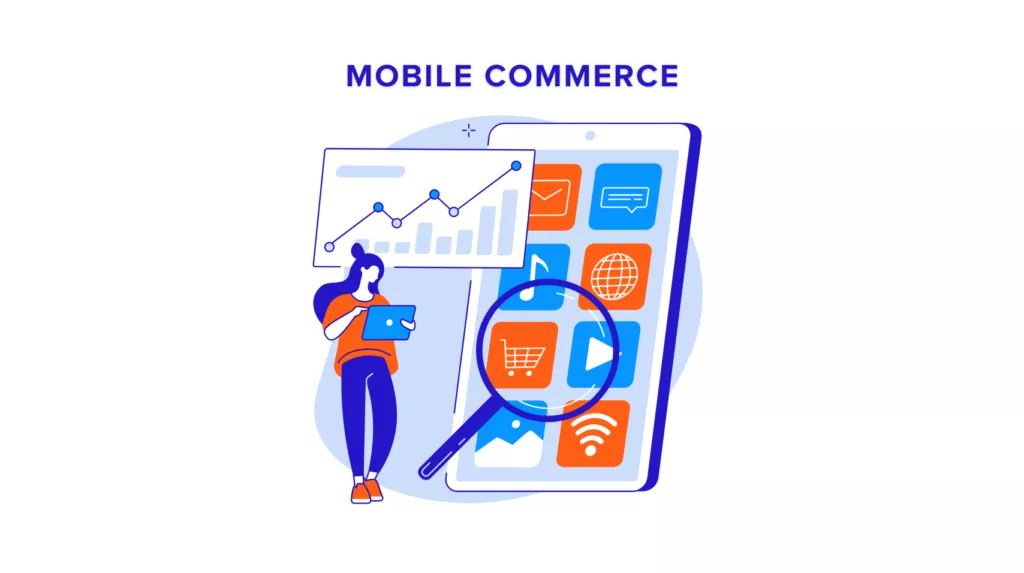
The trend of using mobile phones for online shopping is on the rise, primarily due to the advancements in online payment systems. This shift is attributed to the seamless buying experience provided by mobile commerce, where customers are quickly redirected to payment apps like MoMo or ZaloPay, offering a hassle-free transaction compared to traditional website payments that require them to pick up their phones for the payment process.
Furthermore, mobile devices are leading the charge in the B2B digital commerce evolution, with a significant majority of consumers preferring them over desktops and tablets. This growing preference underscores eCommerce platforms’ importance in crafting responsive and well-tuned mobile shopping experiences.
To leverage this trend, eCommerce sites need to go beyond mere mobile-friendliness and aim for mobile optimization. This involves designing interfaces that facilitate thumb-friendly navigation, expediting the checkout process, and ensuring swift site loading times. By concentrating on these aspects, eCommerce sites can become preferred shopping destinations, boosting online sales. In the realm of mobile commerce, the ease and speed of the shopping experience are directly proportional to the likelihood of completing a sale.
The B2B eCommerce sector is rapidly adopting digital efficiency in payment processes. Automation and advanced digital transactions are replacing traditional methods, significantly reducing operational costs and manual labor. This modernization benefits both companies and customers, offering a more streamlined payment experience.
In the dynamic realm of B2B eCommerce, the transition from traditional payment methods to automated and advanced digital transactions is accelerating. A study by Markets and Markets highlighted that adopting automated payment systems can reduce operational costs for accounts receivable departments by 50% and cut down manual tasks by 85%. This evolution is beneficial not only for businesses but also for customers, who now have the convenience of making payments at their own pace, thus enhancing the overall payment experience.
The proliferation of mobile technology has revolutionized both shopping and payment behaviors. As smartphones become integral to the consumer journey, offering various payment options, including digital wallets like Apple Pay or Samsung Pay, has become essential. The year 2024 will mark a point where not accommodating such payment methods could be detrimental to customer retention.
The ‘Buy Now, Pay Later’ (BNPL) model is emerging as a significant trend, particularly in Vietnam, where it’s a departure from the traditional installment payments. Platforms like Shopee are incorporating BNPL, indicating its potential to reshape the B2B payment landscape significantly.
In the US, Buy Now, Pay Later (BNPL) has won over more than a third of consumers recently, and it’s also gaining traction in Europe and Africa. This surge is tied to shifts in how people, particularly the younger crowd, prefer to manage their money, with BNPL’s flexible and wallet-friendly options being a hit. Gen Z is leading the BNPL charge, as they’re stepping into the workforce in big numbers. The trend shows that BNPL use among Gen Z is set to grow from 36.8% in 2021 to 47.4% by 2025. You can read more about BNPL here.
Augmented Reality (AR) is transforming B2B eCommerce, turning simple spaces into interactive showrooms. With AR, businesses create 3D models that customers can explore in detail, offering an engaging experience far beyond what static images can provide.
Vietnam is riding the AR wave with remarkable vigor. The market is booming, with forecasts predicting a surge from US$96.4 million in 2023 to US$181.5 million by 2028, thanks to an impressive annual growth rate of 13.48%. AR is already a hit in children’s books and playgrounds, but it’s set to become a staple in our everyday lives, moving beyond novelty to become a standard in our daily routines, especially in the B2B eCommerce market, much like the memorable Oreo campaign during Tet 2020.

Wrap Things Up!
B2B eCommerce is booming, outpacing traditional stores. This surge is driven by digital advances and the economic shift after the pandemic. It’s not just a change; it’s a new online business era, where tech innovations benefit both shoppers and companies.
Navigating the digital marketplace can be complex, but you don’t have to do it alone. With a solid decade of crafting B2B eCommerce solutions, SECOMM is here to support your business’s growth journey. Feel free to contact SECOMM or call our hotline at (+84) 28 7108 9908 to discover solutions that align with the latest trends and propel your business forward.
 2
2
 3,047
3,047
 0
0
 1
1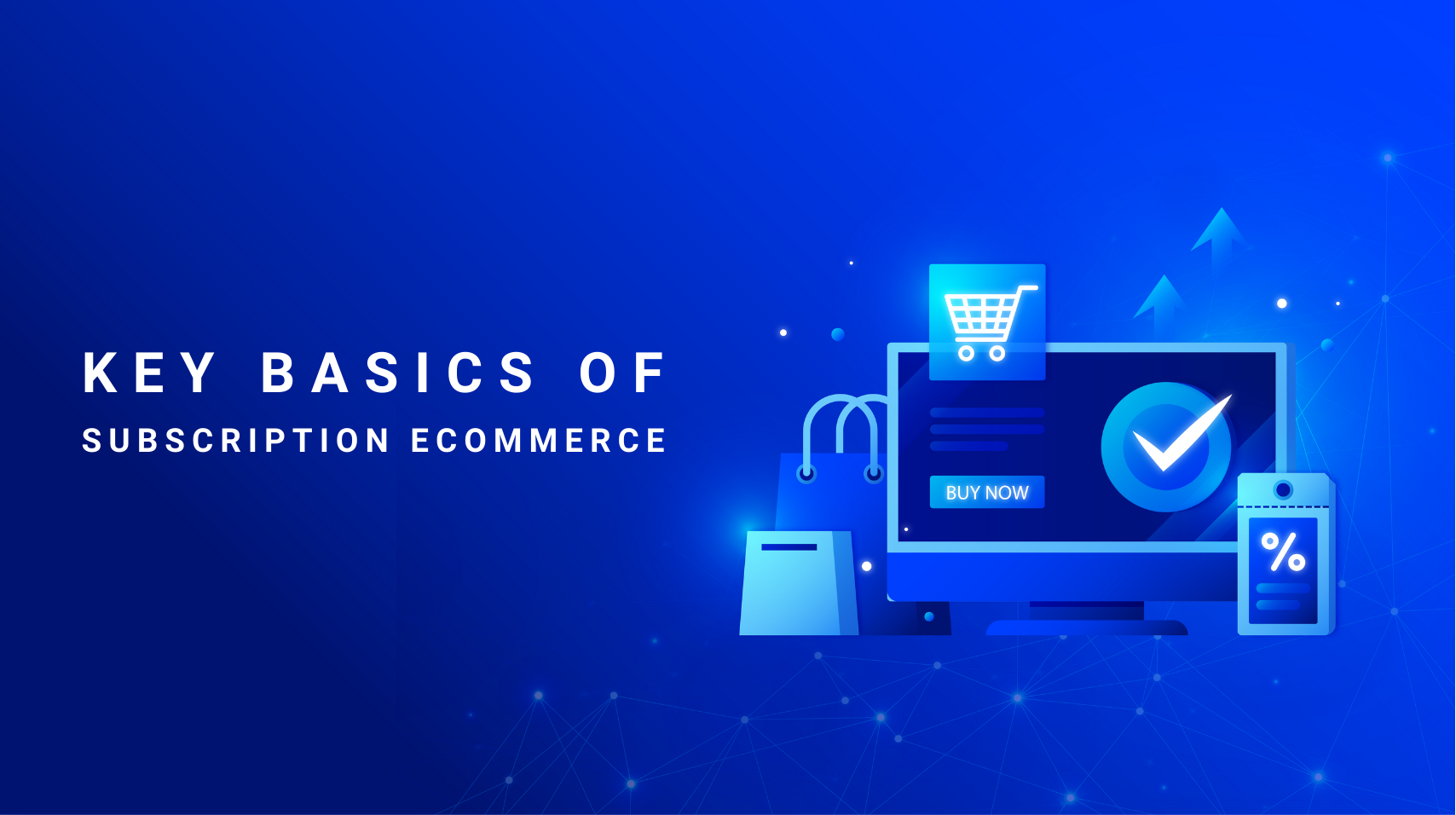
Subscription-based eCommerce, while not a novel concept, is increasingly being adopted in tangible forms, preserving its inherent value. Consider, for instance, the scenario of launching a seafood restaurant. You enter into an arrangement with a seafood supplier who commits to delivering fresh seafood daily.
This arrangement exemplifies a subscription model, which often includes perks such as discounts, promotional offers, or simply more favorable pricing compared to purchasing items individually from various suppliers.
If the concept still seems unclear, fear not! We’ll delve deeper into the mechanics of subscription eCommerce in the paragraphs below.
Subscription eCommerce is a business model where customers subscribe to receive regular deliveries of products or access to services over a specified period. Transactions are facilitated online, and customers continue to receive deliveries until they choose to cancel their subscription or until the agreed-upon subscription term concludes. Payments can be various, including one-time payments, periodic billing cycles, or automated payments.
In addition, there are several types of subscription-based online shopping, but in this blog, we will mention three common types. The first one is product or service subscriptions in which customers will receive annual product delivery or service access like gym memberships, daily grocery goods, etc.
The second one is the membership program, which is quite similar to most people. A good example of this could be “Hoi Cam” from Guardian, where customers can get exclusive discounts and a lot of benefits when joining.
The third one might be familiar to many of you, which is called Software-as-a-Service (SaaS). For example, when using Microsoft 365 or Canva customers need to pay monthly or yearly to use all the functions of the tools and software. You can find more about SaaS here.
Additionally, the eCommerce subscriptions market seems to have risen steadily in recent years with the global market size reaching US$ 193.6 Billion in 2023. Moreover, this number is forecasted to reach US$ 5,014.4 Billion by 2032, showing a growth rate of 43.56% from 2024 to 2032.
From the information above, it prompts an important consideration: what are the tangible benefits and drawbacks for businesses when adopting eCommerce subscription programs? Assessing the impact of these programs is crucial for understanding their influence on operational dynamics and customer engagement.
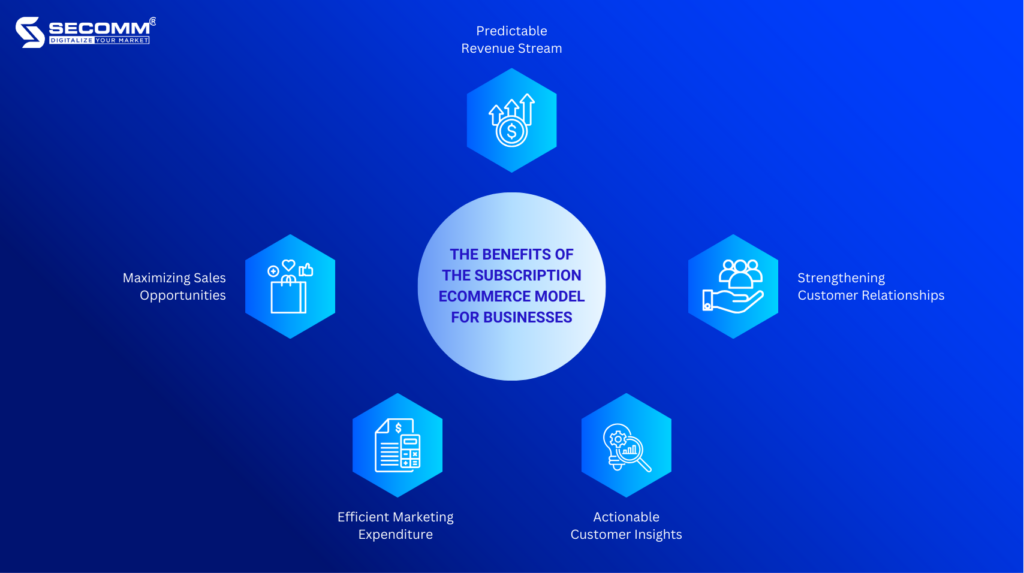
ECommerce subscription models aren’t just a trend; they are a strategic approach that offers businesses a plethora of benefits, from predictable revenue to deepening customer relationships.
Contrary to the unpredictable nature of one-time transactions, subscription models offer a steady revenue flow. This advantage enables your organization to formulate a comprehensive budget for marketing endeavors spanning an entire quarter or year, necessitating only slight adjustments. Essentially, businesses are equipped to more accurately project their financial trajectory by establishing a consistent subscriber base pledged to recurrent payments. This later helps enhance strategic planning and facilitate expansion prospects.
Subscriptions are more than transactions; they are the foundation of a long-lasting relationship with customers. A study by Zuora highlights that 93% of subscribers believe companies should invest more in customer satisfaction. By adopting a subscription model, businesses are not merely selling a product—they are nurturing a connection that encourages customers to return, fostering loyalty and trust.
Truly understanding customers goes beyond superficial interactions. It involves analyzing their behaviors and preferences over time. Subscription models are instrumental in gathering this data, offering insights into customer tendencies, shopping habits, and interests. This information is crucial for customizing products and services, enhancing marketing strategies, and identifying growth opportunities – all while potentially reducing market research costs.
Additionally, enterprises need to capitalize on the insights derived from their eCommerce subscription base to enhance marketing initiatives, rather than allowing this valuable data to remain underutilized. Armed with an in-depth understanding of customer predilections, companies are empowered to devise bespoke experiences that truly engage their clientele. This strategic personalization not only bolsters customer loyalty but also fortifies the company’s market position, diminishing the likelihood of customers exploring alternative options.
Subscribers typically exhibit greater loyalty and, as a result, have a propensity to increase their expenditure over time, which can significantly enhance a company’s profitability. Additionally, the subscription framework provides fertile ground for upselling and cross-selling strategies. Businesses can boost their average order value and realize extra revenue from their current subscribers by offering assorted subscription options or supplementary products and services. Take, for instance, a fitness establishment that could propose special offers on workout gear to its patrons, thereby establishing a reciprocal relationship where the customers benefit from the perceived value, and the business sees a rise in sales.
Understanding the purpose and goals of your eCommerce subscription model is essential. Whether you’re targeting revenue growth, increased profitability, or business expansion, defining these objectives upfront will shape a successful strategy.
Ease of subscription is crucial in the eCommerce industry. A straightforward and user-friendly sign-up process not only improves conversion rates but also increases the value perceived by customers, making them more likely to sign up.
To ensure optimal accessibility and ease of registration, it is crucial for eCommerce subscription services to be prominently featured and straightforward to navigate, thereby accommodating a broad digital audience. For instance, consider the “Hoi Cam” program by Guardian: the membership is subtly referenced via a brief mention in each social media post, rather than being highlighted in a dedicated post. Similarly, on their website, the registration option is relegated to a minor tab, devoid of any prominent banners to signal its presence.
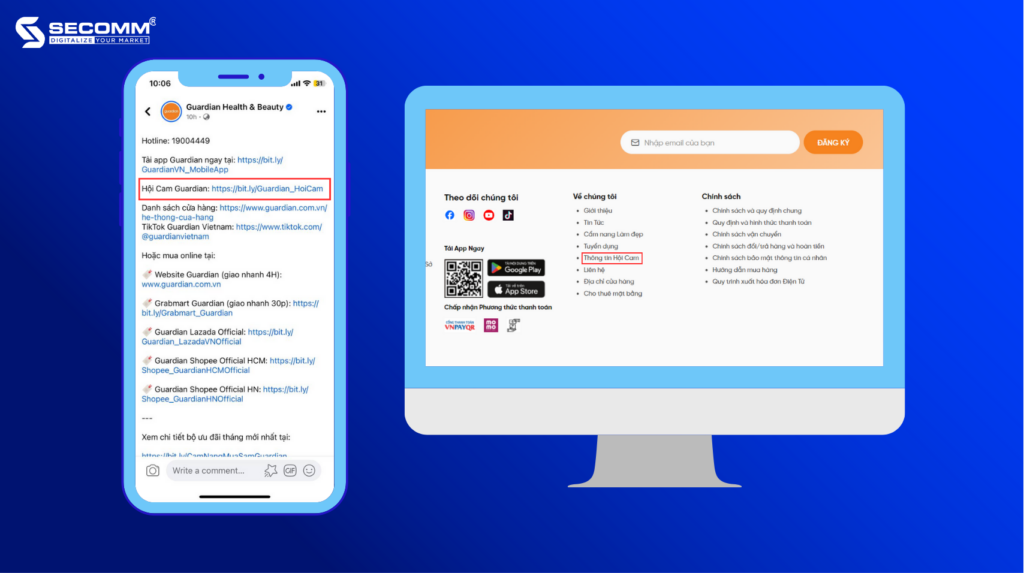
Even in physical outlets, the program is scarcely communicated by staff members. This approach necessitates that customers invest effort into seeking registration details, which could lead to frustration and a diminished user experience.
In the eCommerce subscription business, building strong customer relationships is crucial. It involves recognizing your customers’ importance. If customers don’t see the value, they may feel overlooked and undervalued, and consider other options. So, it’s important to grow loyalty and strengthen these bonds over time. Remember, when your service team consistently provides excellent support, customers will trust your brand more, which is key when they decide to renew their subscription.
Also, developing detailed customer personas is helpful. Knowing your customers’ preferences, habits, and spending limits helps you tailor your services to fit their needs, keeping them engaged and happy. When customers notice that you care about their preferences, they’re more likely to stay loyal and not switch to another business.
Your pricing strategy should reflect your product/service type, business objectives, and customer personas. Starting with a basic package covering essential services is advisable if you’re unsure of customer preferences. This approach allows you to launch your service while remaining adaptable. As you gather customer feedback and preferences, you can adjust your packages to suit different customer segments, ensuring your offerings evolve to meet customer demands effectively.
When implementing a subscription-based eCommerce model, it’s crucial to be aware of potential pitfalls to ensure seamless business operations.
The key to a successful subscription model is maintaining long-term subscriber engagement. Incorporate personalized elements, exclusive content, and loyalty rewards to make subscribers feel valued. Moreover, you could highlight the unique benefits your service offers over competitors to discourage churn.
For new subscribers, businesses need to simplify the sign-up and showcase their services’ value straightforwardly to reduce the likelihood of early drop-offs.
If your business involves physical goods, managing inventory against customer demand is critical. Monitor customer preferences closely and adjust inventory accordingly. Always have a contingency plan for supply chain disruptions to maintain consistent product availability.
As your subscriber base expands, the complexity of your infrastructure must evolve accordingly. Consider the user experience – a seamless service is expected, particularly for digital offerings akin to Canva. Your infrastructure should be robust enough to handle a spike in users without compromising performance.
Is everything making sense so far? Before we conclude today’s session, let’s examine the following case study for a practical understanding.
Amazon Prime serves as an exemplary model of subscription eCommerce success, offering a suite of benefits that extend well beyond swift shipping. Subscribers gain access to an array of advantages, such as complimentary two-day delivery, an extensive library of streaming content, and exclusive shopping deals. This service is not merely about rapid order fulfillment; it represents a continuous stream of value and convenience.
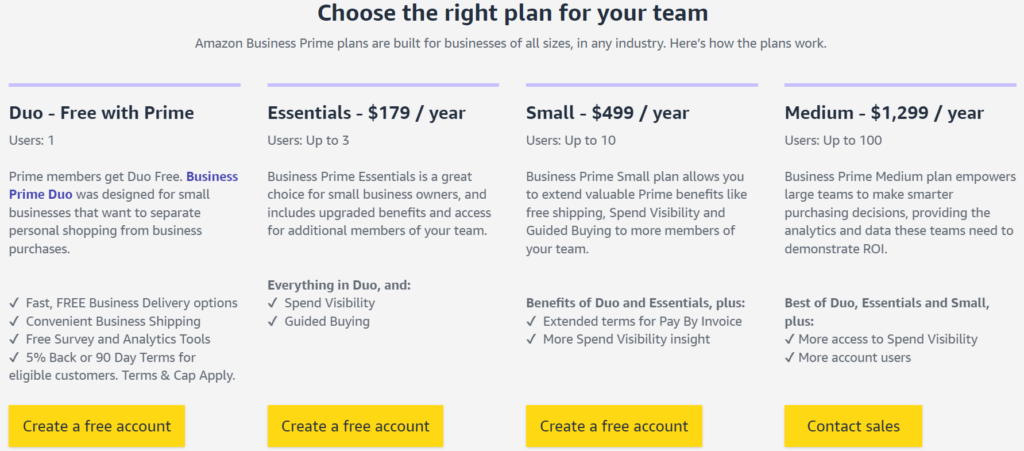
The distinctiveness of Amazon Prime lies in its amalgamation of various services into a single subscription package, which streamlines customer experience and fosters brand loyalty. The program’s expansion reflects Amazon’s dedication to customer satisfaction and its strategic addition of new perks, all while integrating seamlessly with the larger Amazon eCommerce ecosystem. This strategic bundling is a key factor in customer retention, positioning Amazon as a leader in the eCommerce sector.
Subscription eCommerce is a strategic approach adopted by numerous businesses, yet only a select few have truly harnessed its potential. This guide is designed to deepen your understanding and provide actionable insights to effectively utilize subscription eCommerce. For those ready to embark on this journey and in search of a trusted advisor, Secomm is your ideal partner. We offer end-to-end solutions to address all your eCommerce needs, from technical infrastructure to event management.
 2
2
 2,861
2,861
 0
0
 1
1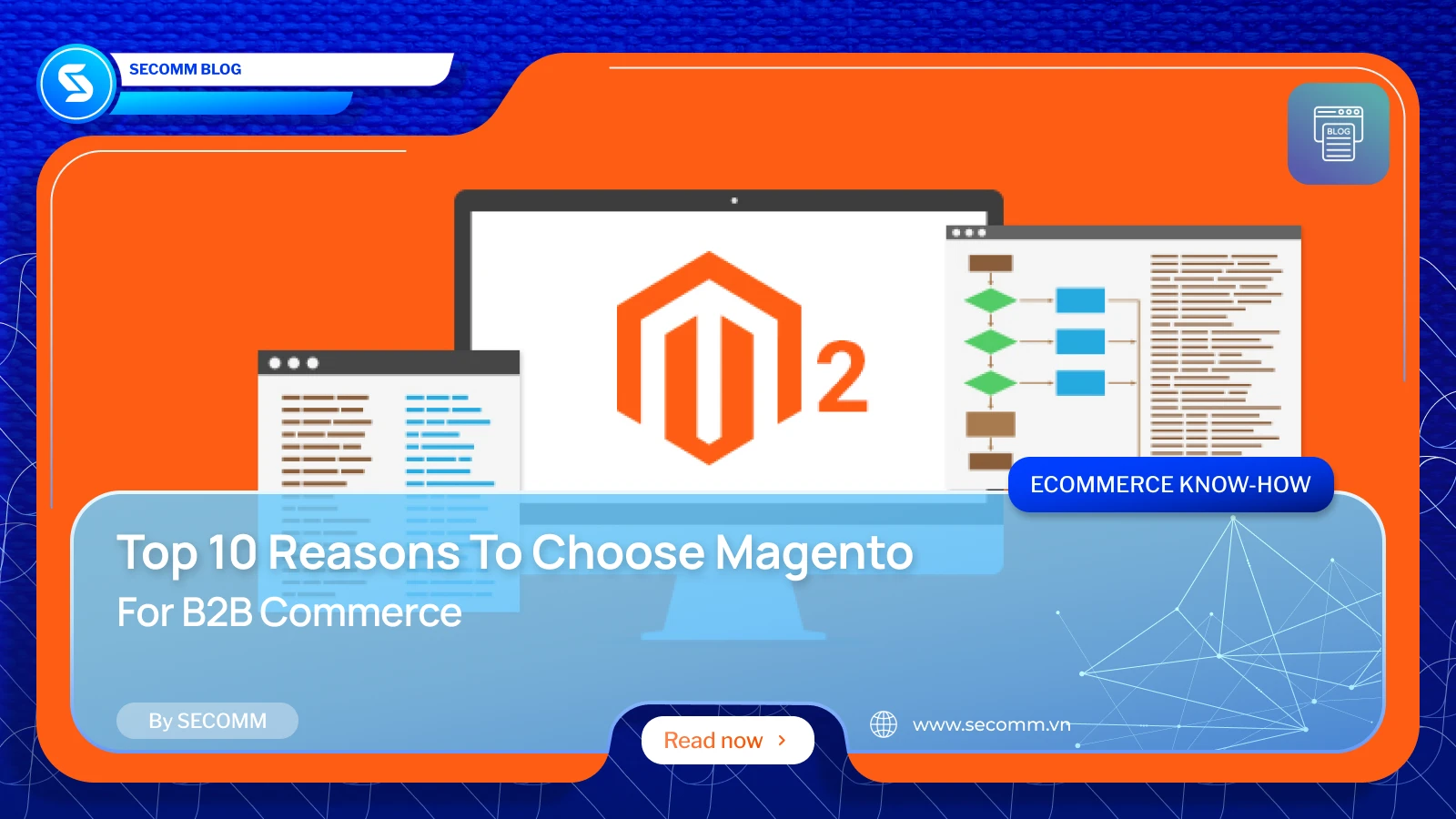
Over the past decade, Magento has solidified its position as one of the leading eCommerce platforms in the market. With its robust capabilities, the platform serves not only B2C businesses but is also a popular choice for enterprises.
By combining Magento’s strength with the specific requirements of B2B Commerce, you can leverage this platform’s powerful benefits. In the following part of the article, let’s explore 10 reasons why Magento is the ideal choice for deploying this great business model.
Business-to-business commerce (B2B Commerce) refers to the buying and selling of goods or services between businesses rather than between a business and end consumers (B2C). In the B2B environment, transactions often occur on a large scale and involve large orders, long-term contracts, and strategic partnerships.
This business model has distinct characteristics and requirements compared to B2C Commerce. In the B2B world, businesses typically have more complex demands regarding product management, order management, customer management, and compatibility with enterprise resource planning (ERP), customer relationship management (CRM), and other systems.
Additionally, the business model often requires features such as order confirmation, complex payment processes, batch ordering, and wholesale pricing. For B2B enterprises, choosing a suitable eCommerce platform is crucial to ensuring business efficiency and delivering the best user experience for their partners and customers.
Magento is a powerful and flexible eCommerce platform developed by Magento Inc., a subsidiary of Adobe. Launched in 2008, it quickly became one of the top choices for you looking to build and operate professional online stores.
It allows you to create custom eCommerce websites. This platform provides a range of features, including product management, order management, payment integration, customer management, and many others, enabling you to easily manage and operate your online stores efficiently.
It is built on open-source code, meaning that you can access and customize the platform’s source code based on specific technical requirements.
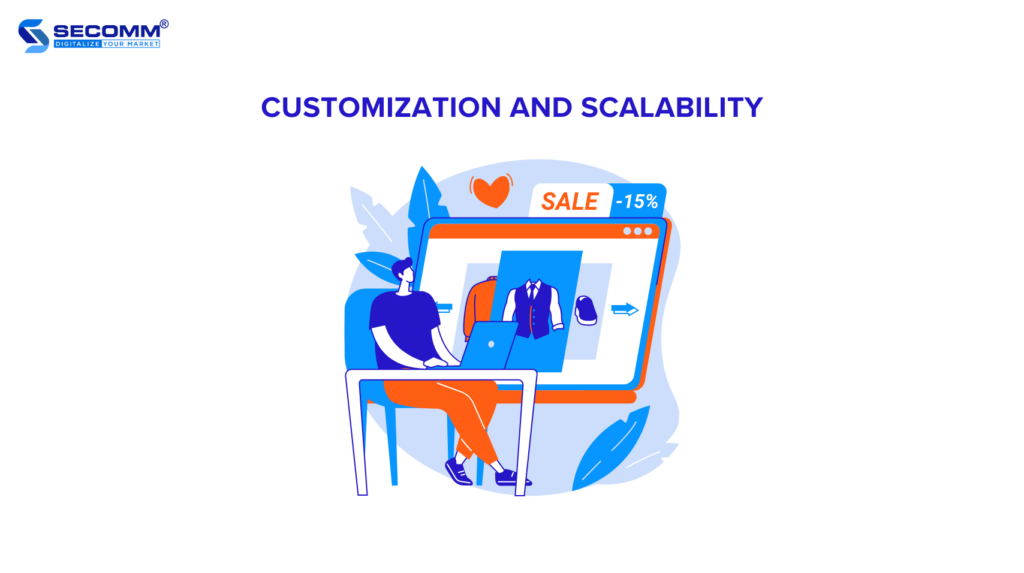
Magento’s open-source platform characteristic enables businesses to easily and effectively expand their business scale. This is particularly important as businesses grow and must enhance the system’s scalability.
Additionally, the platform provides high customization capabilities, allowing businesses to adjust to their specific business needs flexibly. This also means that the shopping experience can be customized to become unique and tailored to the target customers.
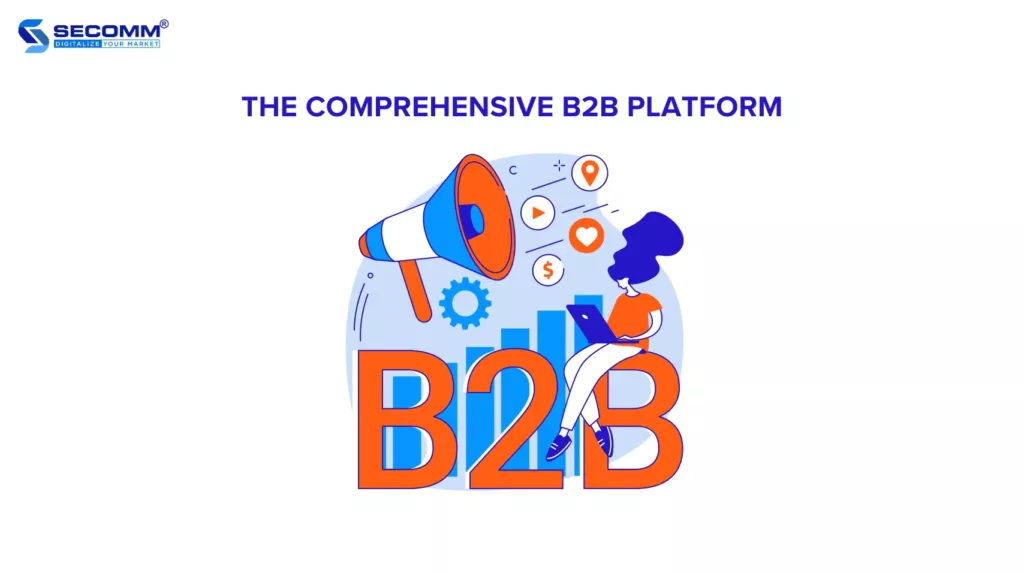
In addition to offering built-in Magento B2B features, the platform allows businesses to seamlessly and quickly integrate with many third-party applications and systems, thereby creating a comprehensive and automated eCommerce system. Some integrated systems may include:
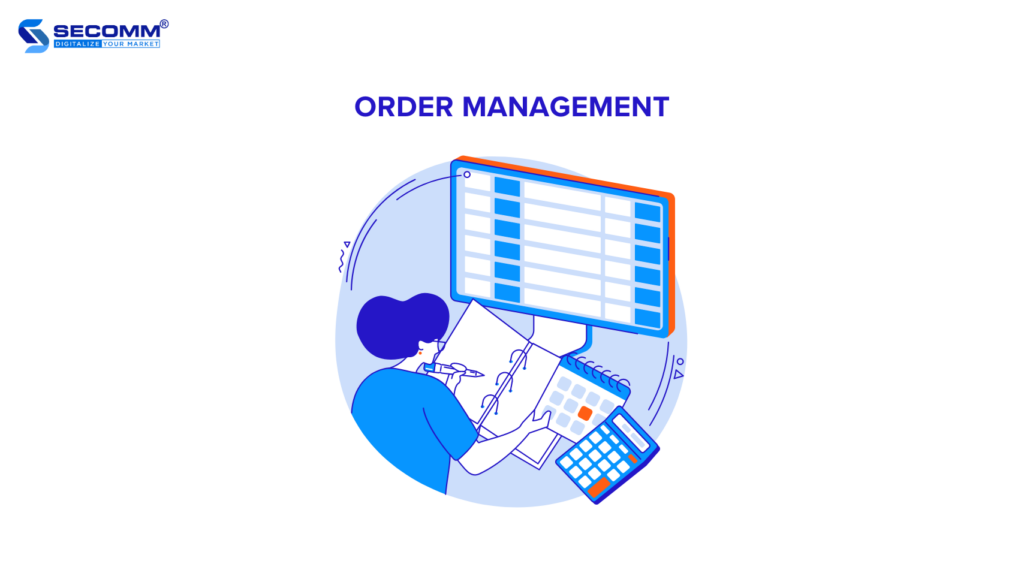
Magento B2B provides a variety of order management features, from creating and editing orders to tracking and processing orders efficiently. This helps B2B businesses easily monitor and manage their orders accurately and consistently.
Additionally, it offers tools and features that allow tracking and analysing their orders’ performance. From generating overview reports to tracking order history and purchasing trends, the eCommerce model deployed, you can better understand your activities and make informed strategic decisions.
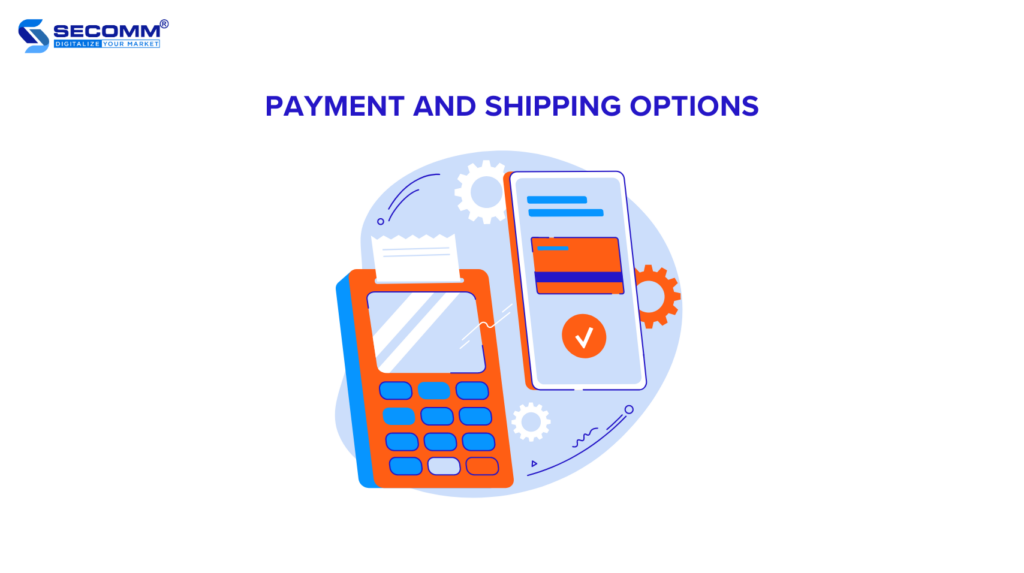
Implementing Magento B2B allows you to offer more payment methods to customers, from online payments through electronic payment gateways to cash on delivery (COD).
Additionally, you can integrate various payment gateways through Magento, such as PayPal, Stripe, Authorize.Net, and many more. This ensures security and convenience in the payment process for both businesses and customers.
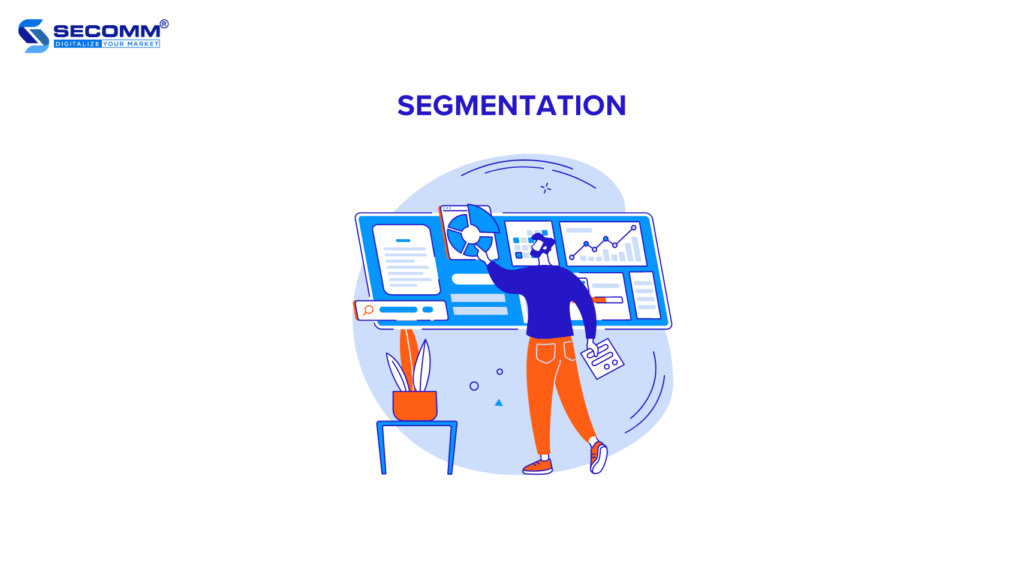
Magento B2B provides features and tools to implement customer segmentation strategies effectively. Among these, the most notable is the Advanced Reporting feature, which provides a dashboard for tracking and analyzing sales data.
With this feature, businesses can segment customers and customize experiences based on web browsing behavior, purchase history, and various other criteria.
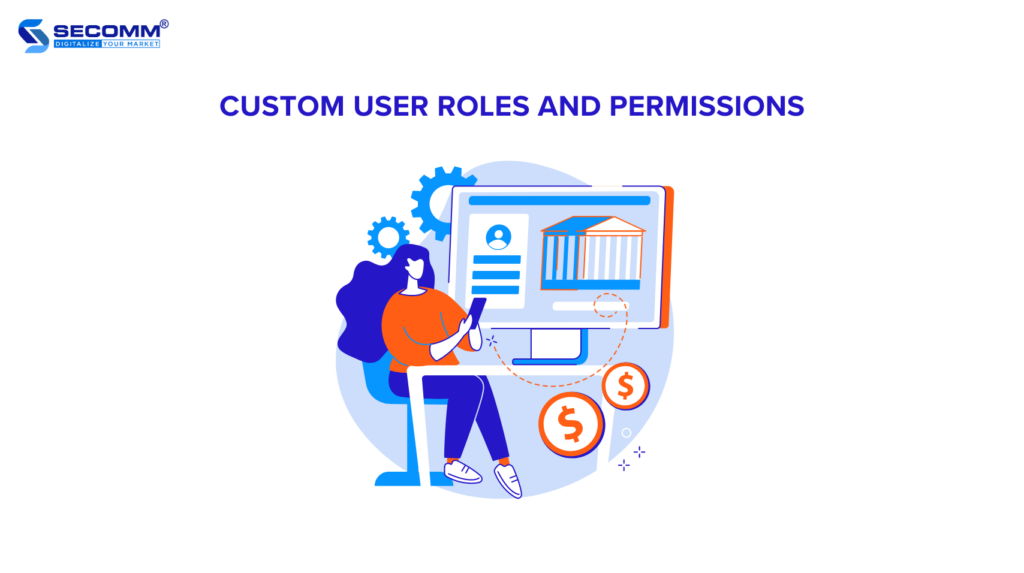
Customizing user roles and permissions is an important part of optimizing the B2B purchasing process. This feature allows B2B customers to create multiple accounts with different contact details for purchasing, ordering, quoting, negotiating, and payment. Additionally, Magento B2B allows sellers to create and assign admin accounts to manage specific customers.
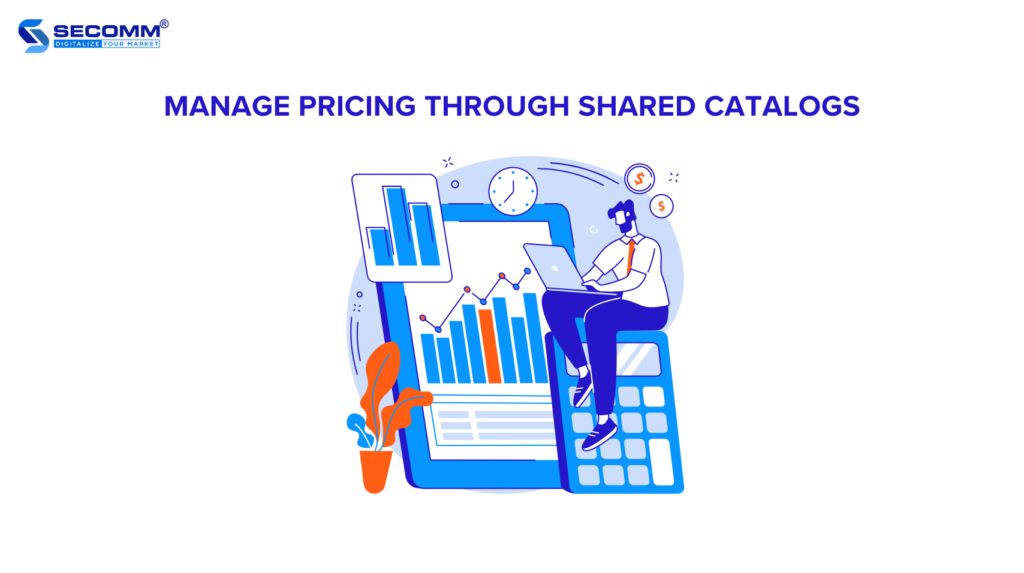
In B2B Commerce, Magento helps manage quotations through shared catalogs, which effectively provides product information and prices to B2B partners and customers. These catalogs can be created based on criteria such as product type, product group, or other suitable business needs.
Within each shared catalog, administrators can define prices and special conditions for each product or product group. This helps create customized quotations that meet the specific requirements of each customer.
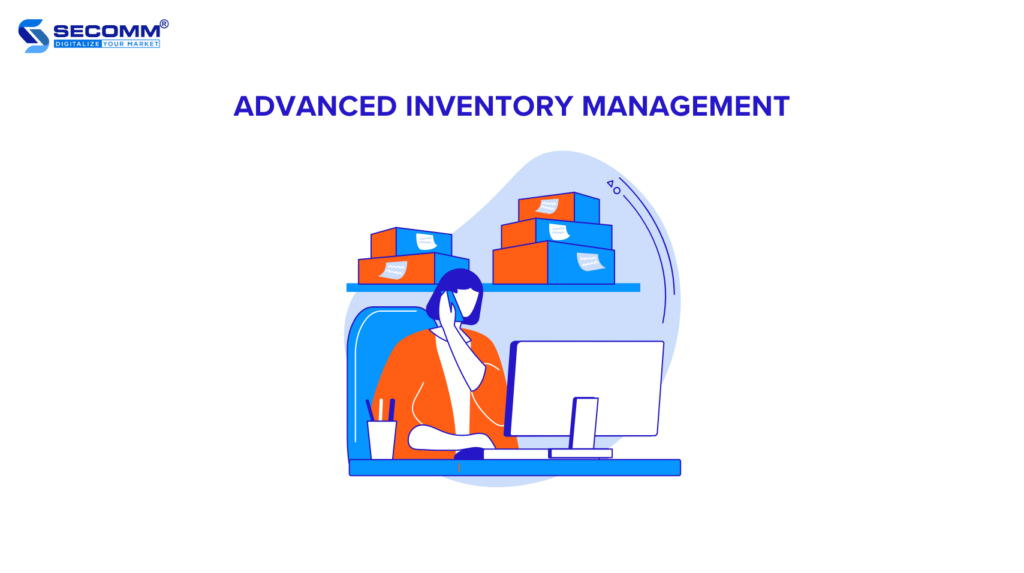
Inventory management is a challenging task for businesses implementing B2B Commerce. The eCommerce platform provides advanced features to effectively manage and control your inventory levels. These features allow administrators to track inventory quantities and forecast future inventory needs.
Additionally, Magento B2B helps manage special types of inventory such as damaged goods, special inventory items, or batch inventory.
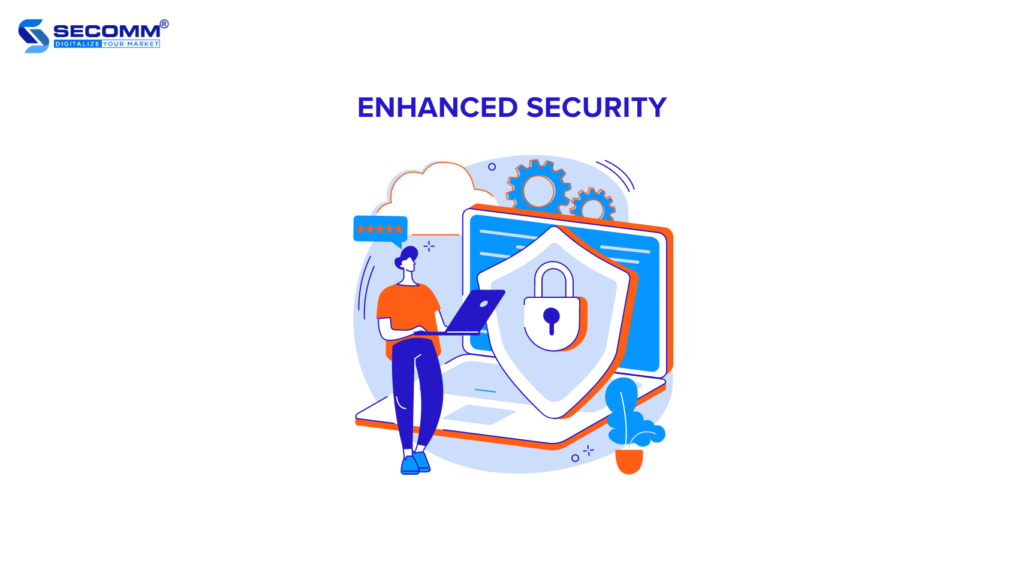
Security is an important issue when building and developing online stores in general. Magento provides many advanced features to help B2B businesses to secure their eCommerce systems. Among these, PCI Compliance, 2FA, WAF, DDoS protection, and preventing CSRF and XSS attacks are notable.
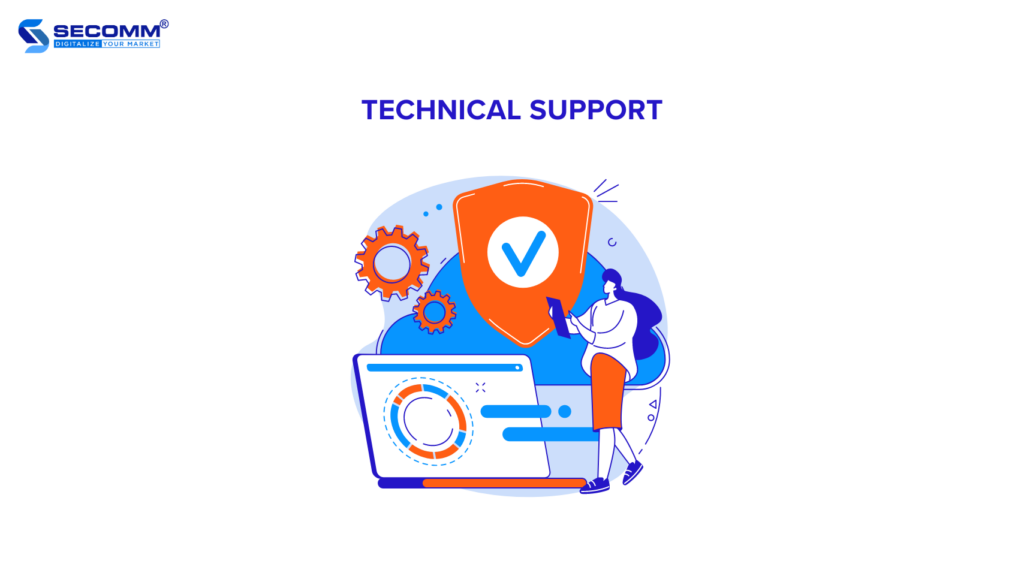
Technical support plays a crucial role in maintaining and operating an efficient online store. Magento B2B provides tools and support services to help users address technical issues and optimize the performance of their eCommerce websites.
This includes expert support via phone, email, or online. Additionally, Magento has a large and vibrant community of developers, experts, and end-users. You can search and ask questions on the forum to receive assistance from the community.
In the context of the increasingly developing and fiercely competitive eCommerce market, using a powerful eCommerce platform is extremely important to ensure the success. With its unique features and superior flexibility, Magento has proven to be a top choice for building and developing B2B stores.
Need more deep advice? Contact SECOMM or call (+84)28 7108 9908 now!
 2
2
 3,709
3,709
 0
0
 1
1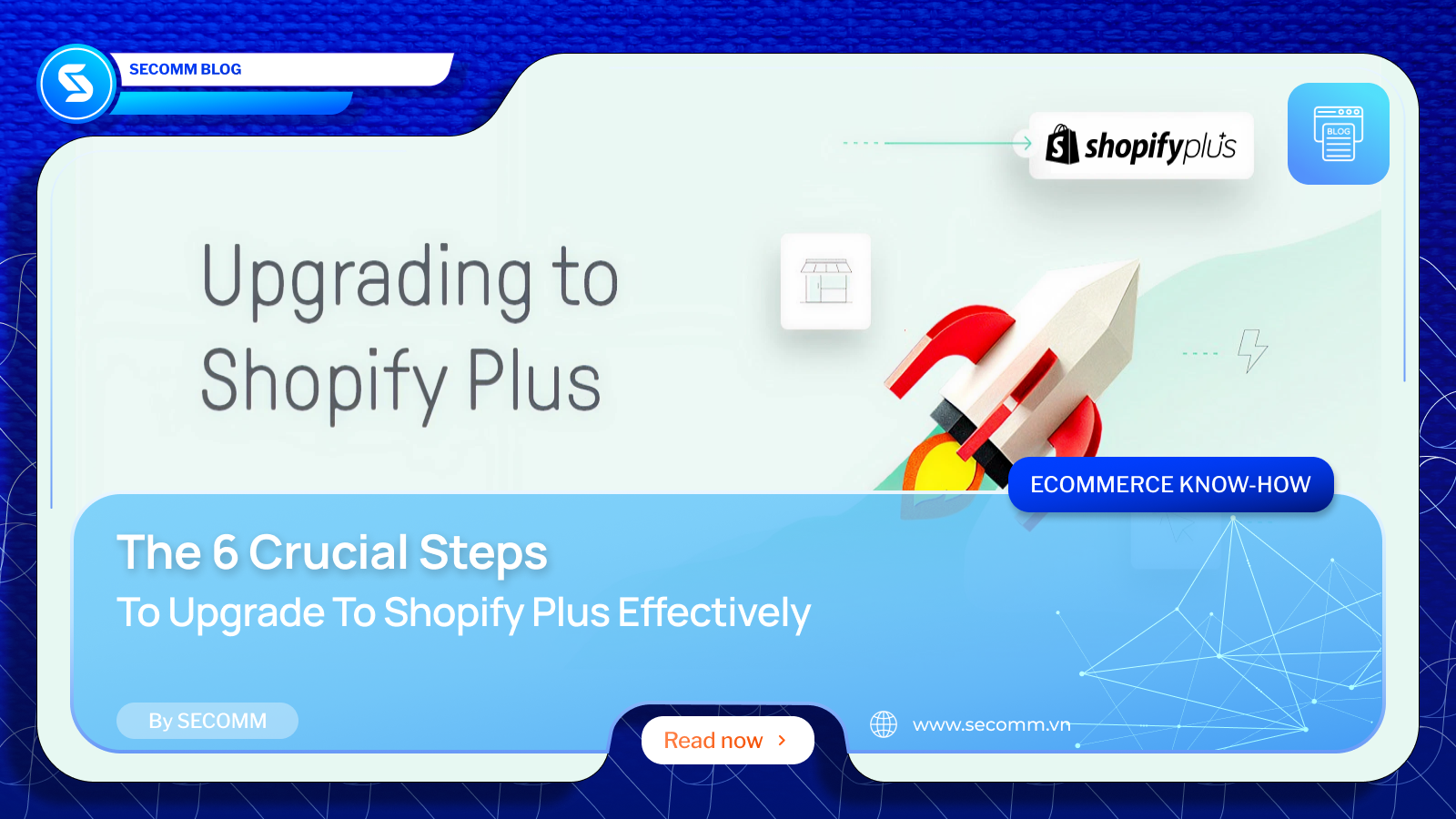
Upgrading to Shopify Plus is a strategic decision for growing ecommerce enterprises. Many merchants have encountered the challenges and opportunities this upgrade brings along their journey.
From optimizing business performance to expanding operations globally, upgrading to Shopify Plus isn’t just a technical step but also an opportunity to transform ecommerce activities into a springboard for market breakthroughs.
In this article, let’s explore the steps to upgrade to Shopify Plus and some critical considerations.
This is the premium version of the Shopify platform, specially designed to meet the needs of large and rapidly growing ecommerce businesses. With Shopify Plus, you can experience many powerful features and services that help optimize operations, expand scale, and enhance customer experiences.
One notable aspect of Shopify Plus is its flexibility and ease of customization. You can leverage features such as multi-store management, integration with ERP and CRM systems, creating multilingual and multi-channel websites, as well as adjusting interfaces and features according to your specific needs.
In particular, Shopify Plus provides a secure and easily scalable infrastructure that is capable of handling large volumes of traffic and online transactions robustly. With Plus, you can ensure that your website operates smoothly and seamlessly, even during peak shopping seasons.
Upgrading from the standard versions of the Shopify platform to the Plus version is a significant milestone in the transformation of ecommerce businesses. Below are eight benefits and also eight main reasons driving businesses to undergo the transition:

Shopify Plus offers a range of powerful features and tools to customize and expand ecommerce websites flexibly and efficiently. These include customizing checkout pages, personalizing customer experiences, and customizing product displays.
Additionally, you can utilize some exclusive solutions, such as LaunchPad, Shopify Scripts, and Shopify Functions, to customize shopping experiences and automate sales processes.
High traffic volumes will require a large amount of bandwidth to maintain a stable website. Shopify Plus allows you to access unlimited bandwidth, 200TB of storage, and unlimited staff accounts to handle large transaction volumes efficiently.
Upgrading to Shopify Plus can help optimize transaction costs. If you use Shopify Payments, transaction fees are the lowest in all Shopify pricing plans but will be customized based on geographical regions. Conversely, Plus merchants must pay 0.2% per transaction for security and compliance costs.
In the Plus version, you’ll be provided with tools and solutions to build a Headless ecommerce website. Through the Hydrogen + Oxygen solution, you can leverage the power of Headless architecture to create more customized and flexible customer experiences.
Shopify Plus provides features and tools to expand your B2B operations. The recent Shopify Editions Winter ’24 update introduced new features to optimize B2B Commerce activities.
From Headless B2B and advanced order management to integrated payment systems and unique features for B2B customers, Shopify Plus helps you streamline your operations and enhance customer relationships.
With Shopify Plus’s multilingual and multi-channel capabilities, you can efficiently expand your operations to international markets. Shopify Plus provides tools and features to customize websites according to each market’s needs, from handling currencies to managing orders and shipping.
The Plus merchants can utilize the exclusive POS Pro system for free. With advanced features, POS Pro allows seamless integration of multi-channel sales operations into the website, enables unlimited staff account access, and provides professional retail reports. This helps enhance customers’ shopping experience and optimize your offline and online sales activities.
When upgrading, you can expect more in-depth customer support services, especially in terms of consultation and technical support by a team of experts. Through hotlines, emails, and live chat, you can access the 24/7 support team.
Additionally, to help clients better understand this platform, Shopify offers a free learning program called Shopify Plus Academy. There, you can access detailed tutorials on setting up stores, customizing store interfaces, and much more.
You currently on one of Shopify’s standard pricing plans may consider upgrading to Shopify Plus under the following circumstances:
Before deciding to upgrade to Shopify Plus, there are four important steps that businesses need to take to ensure a smooth and effective upgrade process:
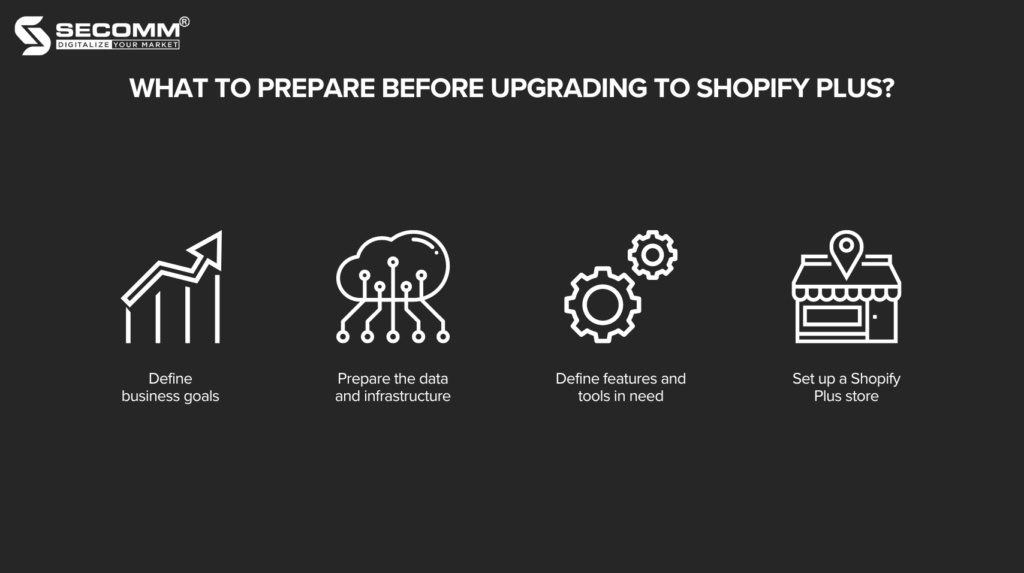
Firstly, you have to clarify your needs and wants. This includes evaluating the current and future growth of the business, as well as the necessary features to meet specific needs.
Next, you’ll need to prepare data and technical infrastructure for the transition process. This may involve backing up current data, checking the compatibility of current applications and features, as well as ensuring that the technical infrastructure is robust enough to satisfy your requirements.
Finally, you’ll identify the specific features and services you desire from Plus. This may include considering features such as multi-store management, integration with ERP and CRM systems, multi-language and multi-currency support, as well as special features like deploying Headless Commerce and accessing POS Pro systems.
Setting up a Plus store will differ from deploying previous standard pricing plans. Plus usage fees start from $2,300 per month, and this price isn’t fixed but customized based on each case’s specific needs. Therefore, you’ll need to contact the Shopify Plus team for advice. When collaborating with a Shopify Plus agency, the developer will work with the platform to provide a specific pricing quote.
Below are six specific steps for the entire process of upgrading your ecommerce website system from a lower version to Shopify Plus:
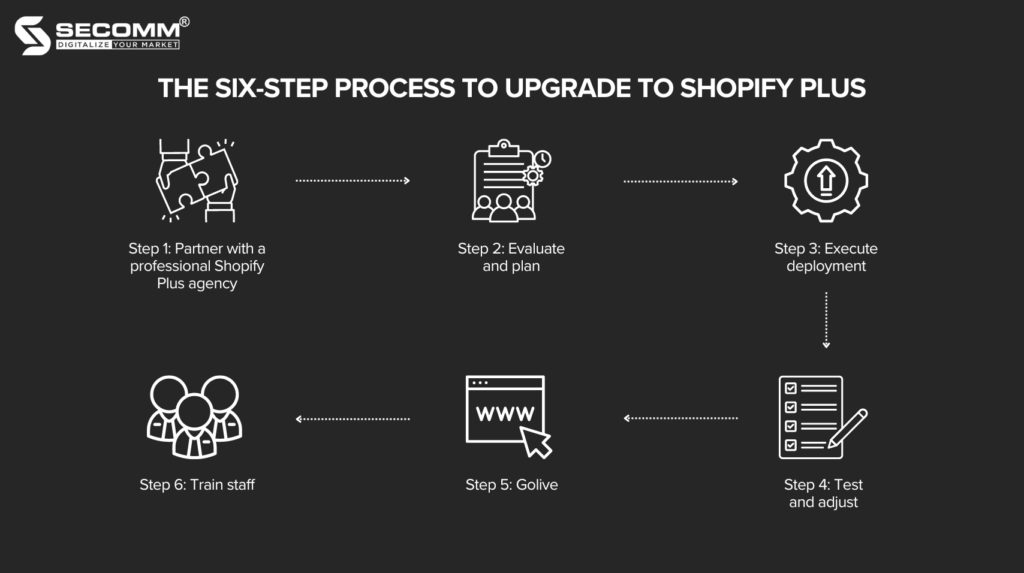
The first and most important step is collaborating with experienced teams specialising in Shopify Plus to optimize the upgrade process and post-operation, especially concerning costs.
To select a suitable Shopify Plus development partner, you should consider previous Shopify Plus projects they have completed, how they identify and solve problems in each project, and feedback from previous clients regarding those projects.
The next step is equally important as it determines the effectiveness of the conversion and future operations. You and your development partners need to clarify business goals, identify necessary features and data to be transferred, and develop a specific deployment schedule based on these goals.
You’ll also need to ensure data backup and updates are safely conducted to avoid data loss during the conversion process.
After assessment and planning, proceed with upgrading to Shopify Plus. The development partner will set up and configure new features, migrate data from the old platform to the new one, and test compatibility to ensure the website operates smoothly.
After deployment, test and adjust the Shopify Plus website to ensure all features and functions work correctly. The development partner’s QA/QC team will collaborate with you to check the quality of the website experience as actual end-users and correct any issues that arise.
Once testing is complete, the new ecommerce website will be launched into the market, and promotional campaigns will be deployed to attract initial traffic and orders.
Finally, employees should be trained to use and manage the new website on the Shopify Plus platform. You’ll provide detailed instructions on new features and how to use them to optimize the performance. Additionally, since Plus has unlimited staff accounts, personnel allocation should be reasonable and planned accordingly.
While upgrading to Shopify Plus can be complex, it significantly benefits business growth. From high flexibility and customization to scalability and deep customer service, Shopify Plus is the perfect choice for expansion.
Various insights and a systematic 6-step deployment process make the upgrade process more manageable. However, to increase efficiency and maintain the stability of the new website, businesses need a professional development partner to accompany them.
Contact SECOMM or call us at (+84)28 7108 9908 to plan your deployment today!
 2
2
 5,021
5,021
 0
0
 1
1
IT outsourcing in Australia is emerging as one of the most rapidly growing and attractive fields in the information technology market. As technology projects become increasingly complex and diverse, Australian businesses are increasingly serious about finding highly skilled outsourcing partners to address technical challenges and product development.
In this article, let’s explore the top 10 IT outsourcing firms in Australia, what makes them stand out in this field, and the key criteria for selecting a potential partner.
In recent years, the Australian IT outsourcing sector has undergone remarkable development, reflecting the boom of the information technology field in the country’s economy.
According to Statista, the projected market revenue for IT outsourcing in Australia in 2024 is expected to reach $14.49 billion, with a CAGR of 10.99% from 2024 to 2028. This indicates substantial prospects and expansion potential.
One crucial factor driving this growth is the emphasis on quality and efficiency. Australian IT outsourcing firms have heavily invested in workforce development and infrastructure to ensure they can deliver high-performance services and meet their clients’ increasingly complex technical requirements.
Furthermore, technological innovation has significantly contributed to this impressive growth. Adopting new technologies such as artificial intelligence, machine learning, and blockchain has opened up numerous opportunities for IT outsourcing firms to provide breakthrough and effective solutions for their clients.
When deciding on a partner to use IT outsourcing services in Australia, you must consider various criteria to ensure the partner can provide services that meet their needs. Below are four key criteria for choosing the right Australian IT service provider.
You need to ensure that the Australian IT company has experience and expertise in the field they are interested in. For example, shopping applications can be developed on the iOS operating system using the Kotlin language. The experience and deep knowledge of the IT outsourcing firms in a specific technology and industry will determine whether they are a potential partner.
This is the next important factor to consider. You need to check whether the IT outsourcing firm has high-quality standards and whether they have good experience in providing solutions and services to similar clients. Reviewing portfolios and engaging in direct consultations will help businesses evaluate more easily.
Social Proof is quite useful in this case. Before making a final decision, you can check reviews, feedback, and gather opinions from customers.
Finally, you need to consider the issue of pricing that the IT outsourcing firm offers, as well as the overall project costs for collaboration. Ensure that the price they offer is suitable for the business budget and that they can provide optimal solutions to meet the project’s requirements.
The companies listed below are all top names in the IT outsourcing field, with extensive experience and knowledge. They provide the highest-quality services and solutions to meet customers’ diverse needs in complex business environments.
Over the past ten years, SECOMM has become a leading provider of eCommerce solutions in Vietnam for its clients’ general and specific information technology projects. SECOMM is committed to providing clients with a team of skilled professionals capable of quickly adapting to the technological advancements of the era.

Seasia Infotech is a leading software development company in Australia. It provides custom software solutions and mobile application development. The company also offers IT outsourcing services, including developing a dedicated IT team for a specific project.
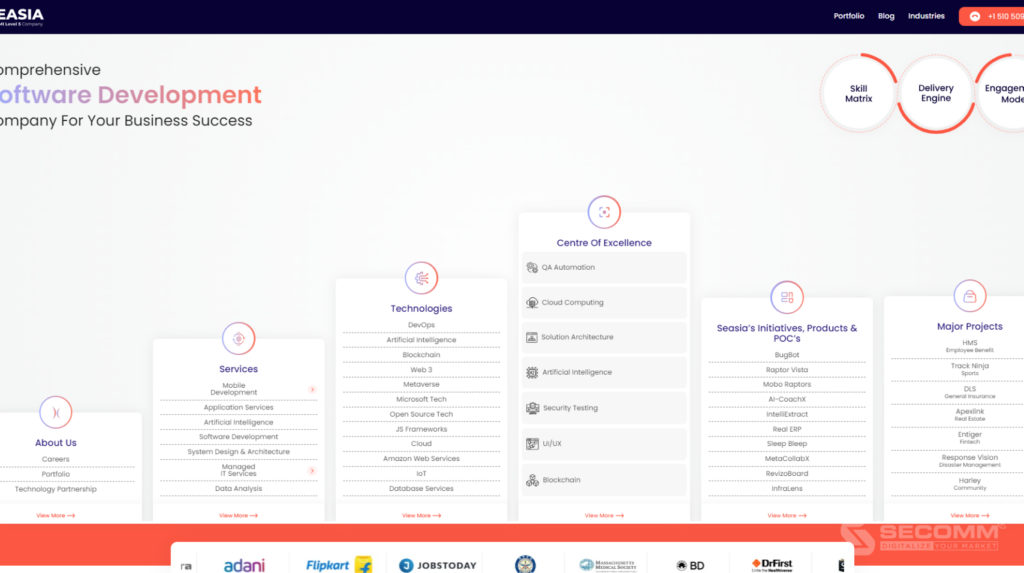
OpenXcell is one of the leading companies in the field of mobile application and software development in Australia. Its personnel and IT team are professional and outstanding. OpenXcell also ensures experience, skills, and knowledge to meet the specific requirements of the project.

Offshore Business Processing specialises in IT outsourcing services, including data processing, digitalization, and human resource management. Over the years in the market, the company has become a reliable partner of many leading businesses in Australia
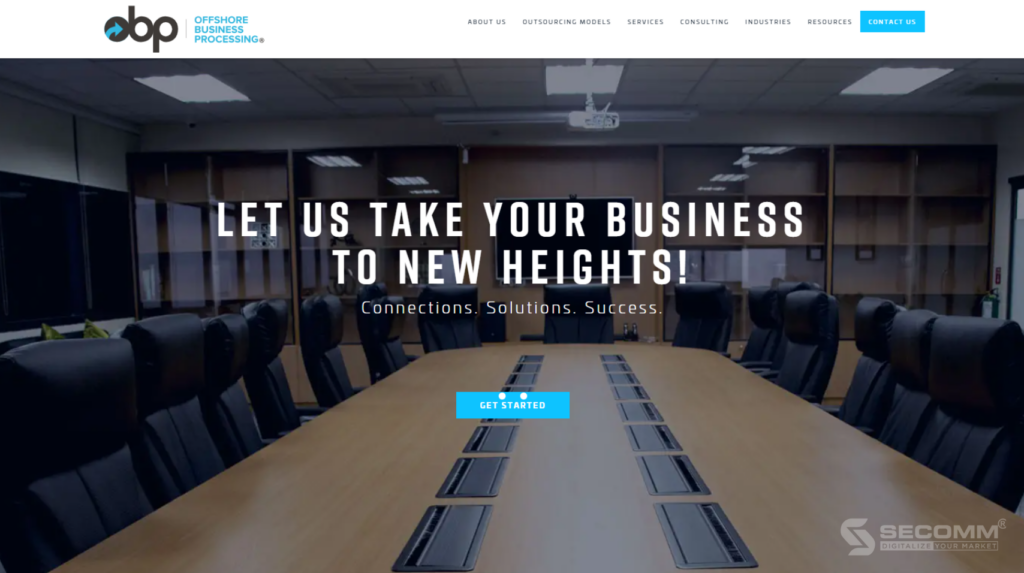
KMS Solutions is a well-known name in the Australian IT outsourcing industry. This company offers various information technology services, from software development to IT infrastructure management.
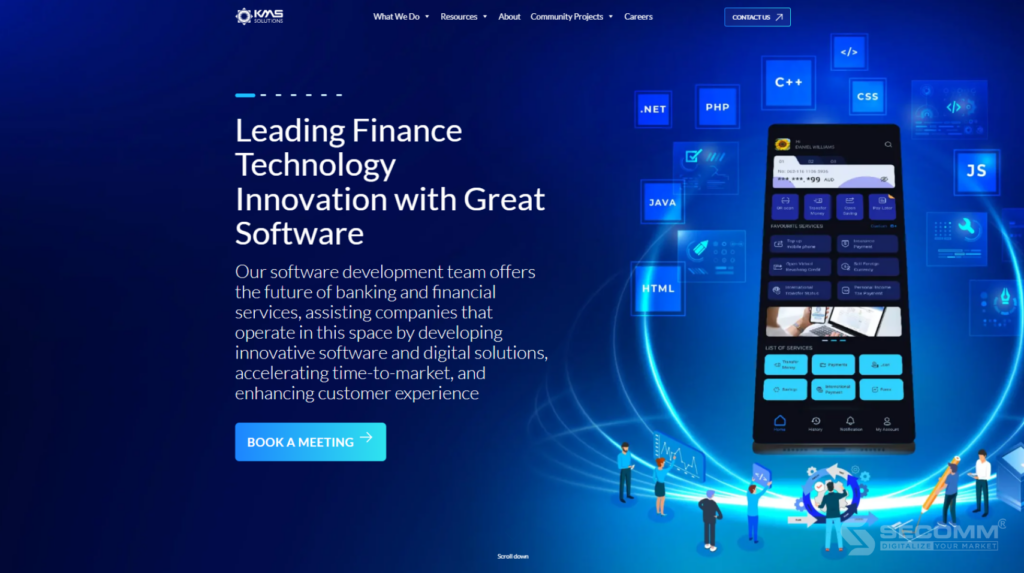
Ontik Technology is a pioneering company providing information technology solutions and custom software for Australian businesses. As IT outsourcing is becoming increasingly popular in Australia and Asian countries, Ontik Technology expands its services with a high-quality team of professionals.
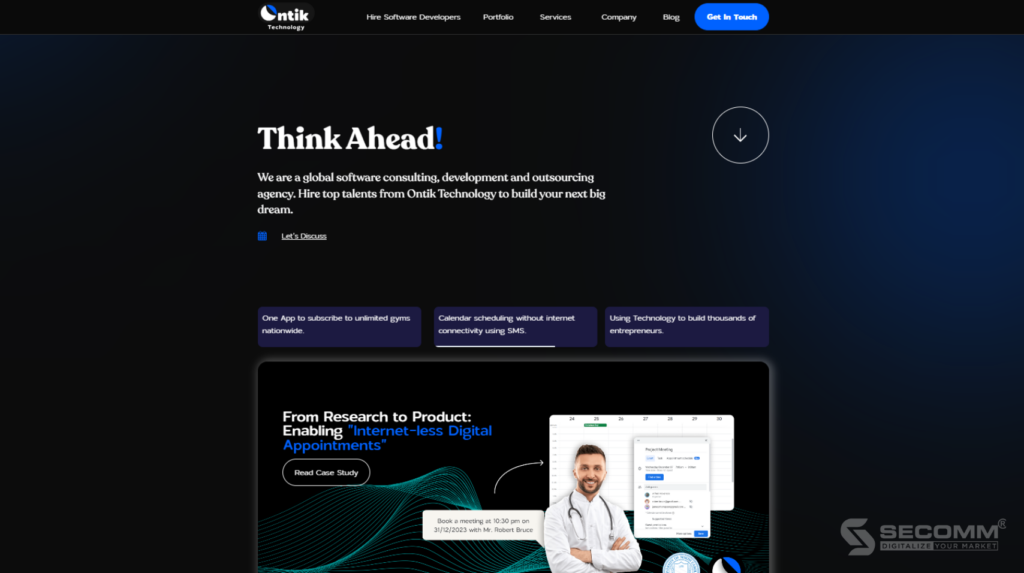
In addition to providing professional IT outsourcing teams, AIS Technolabs also offers Australian businesses custom software solutions, mobile applications, and web development services.
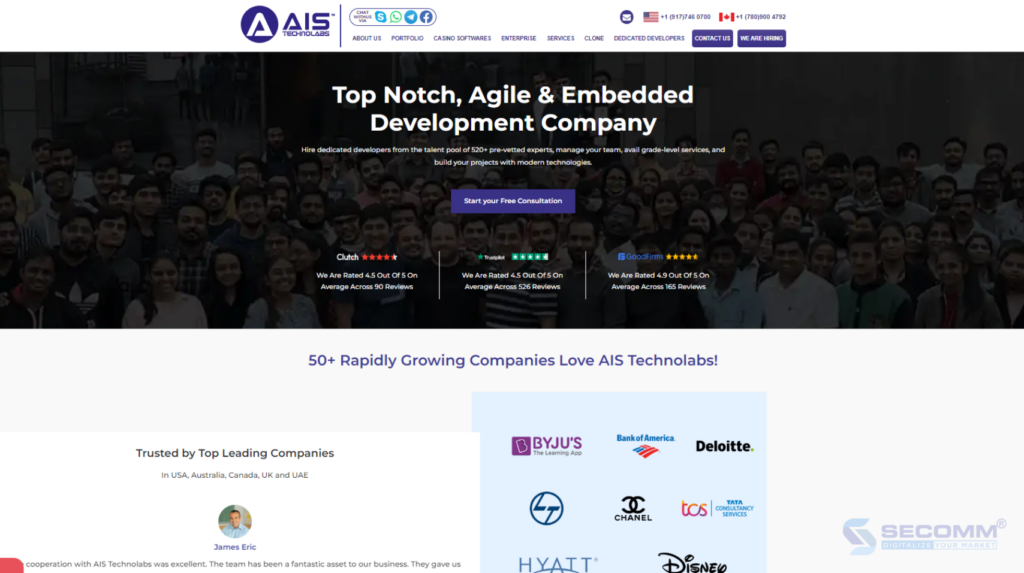
pwrteams possesses a highly skilled IT team in various aspects such as app development, software, website building, SaaS application deployment, QA, and Testing. With reasonable pricing, pwrteams has assisted Australian businesses with over 200 professional IT teams for many years.
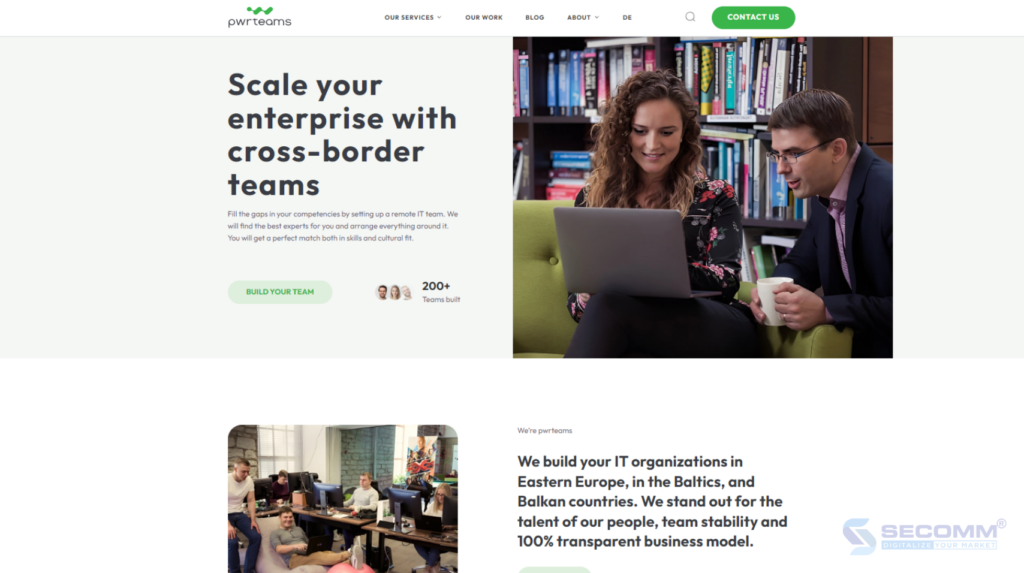
Intogreat Solutions is a renowned provider of IT consulting services and software outsourcing in Australia. Additionally, you can seek professional IT outsourcing solutions at Intogreat Solutions.
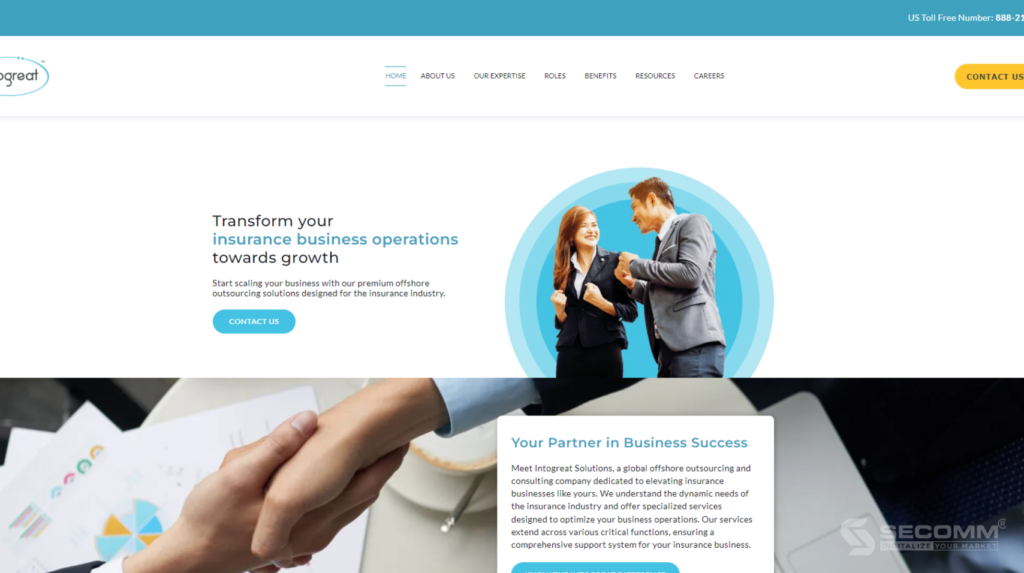
Similar to its brand name, this company provides outsourcing services for all IT-related services. All IT Services has offered reasonable and customized pricing based on the project scale and specific needs of businesses.
In an increasingly competitive and evolving information technology market like Australia, choosing the right IT outsourcing partner is key to achieving success and sustainable development for businesses. The above list has provided a diverse set of reputable and reliable partners, from software development companies to security services and IT infrastructure management providers.
Need advice or help building a professional IT team? Contact SECOM or call (+84)28 7108 9908 now!
 3
3
 3,847
3,847
 4
4
 3
3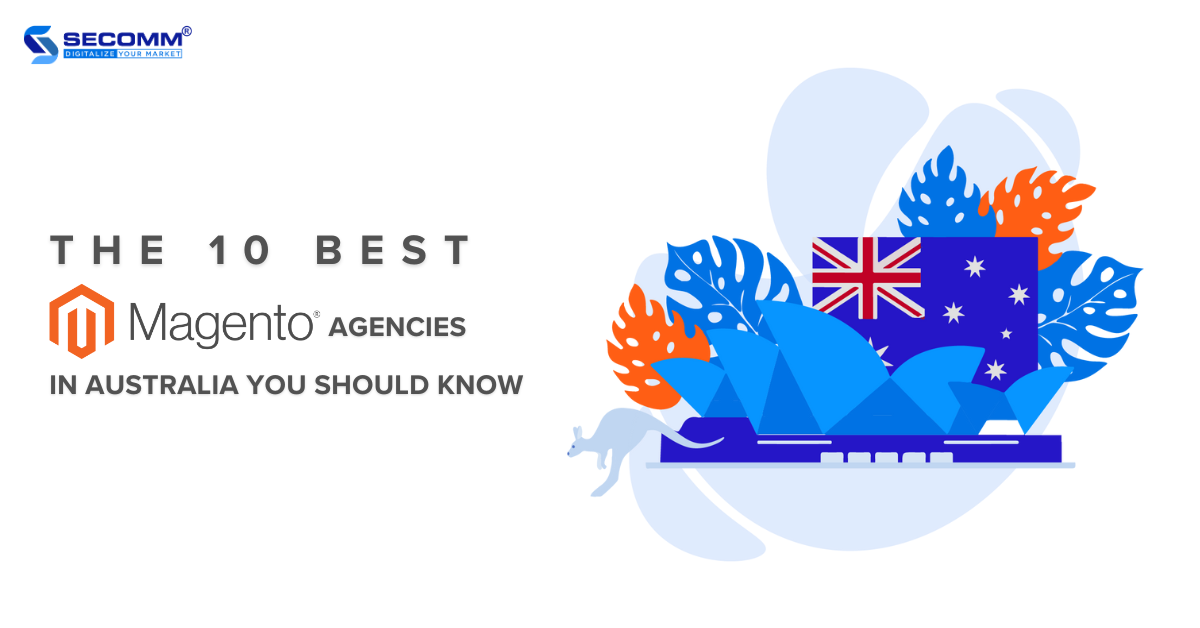
In recent years, the emergence of many Magento agencies has helped the Australian eCommerce market grow. These developers are experienced and trustworthy, not only Magento experts but also reliable companions, ensuring their clients succeed online.
In this article, let’s explore the top 10 Magento agencies in Australia, helping you find the right partner for your project.
Read more: Top 10 Magento eCommerce websites in Australia
Magento (now owned by Adobe Commerce) is an open-source system for building customized eCommerce websites. It is highly flexible and offers a range of powerful features to make website building and management more efficient.
From creating attractive and user-friendly interfaces to managing products, orders, and customers, Magento provides a comprehensive infrastructure to optimize the online shopping experience.
Partnering with Magento agencies can be beneficial in implementing your eCommerce project. Here are four essential reasons to consider working with a partner specialized in the Magento platform.
Magento agencies typically have teams of experts who deeply understand this platform. Most of these companies will participate in the Adobe Commerce Partners program, where the platform supports them regarding technical support, learning resources, commission earnings, and branding.
Furthermore, these agencies must demonstrate that they meet the standards to become official Magento partners. Therefore, partnering with them will help you launch your eCommerce websites quickly and optimize business performance by leveraging features and integrations.
Optimizing the performance of Magento websites is crucial to ensuring customers’ best shopping experience and increasing conversion rates. Professional Magento agencies can optimize the source code, improve page loading speed, and optimize checkout pages, helping businesses effectively attract and retain customers.
Partnering with a Magento development company can help save time and costs compared to building and managing an eCommerce website independently. This is especially true if you have limited time and must go live with your eCommerce website as soon as possible.
Working with such developers becomes even more worth considering. These agencies already have the tools, processes, and experience to deploy projects efficiently and quickly.
Magento’s open-source nature allows developers to help you integrate third-party applications and extend website functionality based on specific needs. Additionally, they can provide custom solutions and development extensions, ensuring your eCommerce operations continually evolve and meet market demands.

When collaborating with a Magento agency, choosing the right partner is crucial to ensure the success of the eCommerce project. Below are five core criteria to help you choose the right partner.
Any Magento agency must deploy eCommerce projects based on Magento, an open-source platform with superior customization and scalability. You must ensure the chosen developer has the knowledge and skills to deploy the Magento platform. They must also have a team of capable experts to build, customize, and optimize eCommerce websites based on specific requirements.
It isn’t easy to effectively leverage Magento’s customization and scalability to build an eCommerce website with shopping experiences tailored to Australians’ needs.
This requires technical skills, expertise in the Magento platform, and a deep understanding of the Australian eCommerce market. Therefore, the agency needs to understand the target audience, shopping behaviours, legal regulations, and other factors related to the unique business culture in this country.
Evaluating the projects previously implemented by Magento agencies is an effective way to measure their capabilities and experience. By examining past projects, you can assess their ability to solve specific challenges and whether the solutions proposed for each case are flexible and up-to-date with market development trends.
Evaluating and considering feedback from previous clients will benefit you in the decision-making process. You can search and verify reviews from various sources and clients to ensure objectivity and transparency. This is necessary to ensure that Magento agencies have the skills and experience required to complete the eCommerce project as requested.
After completing and launching the Magento website, technical issues must be addressed and supported. You must choose Magento agencies committed to providing quick support and continuous maintenance after the project. This ensures that the website remains stable, any technical errors are promptly addressed, and the latest platform version is kept secure and up-to-date.
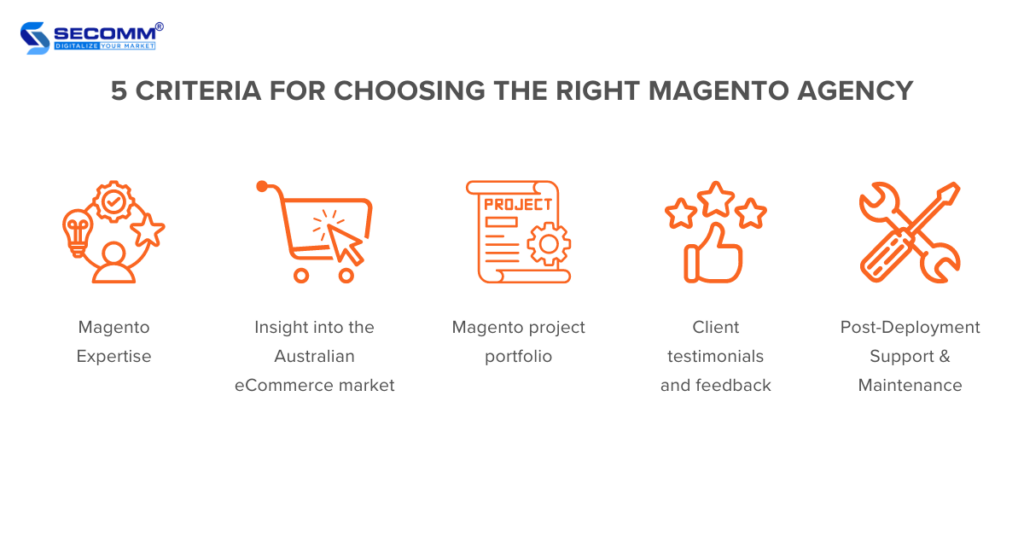
Below is a list of the top 10 Magento agencies in Australia, recognized for their experience and expertise in developing eCommerce websites on the Magento platform.
SECOMM is one of the leading Magento development partners in Australia. With over 10 years of experience, SECOMM boasts a highly experienced team with a deep understanding of the Australian eCommerce market.
The SECOMM team has successfully collaborated on and implemented a series of Magento projects with significant clients in Kangaroo, such as Laybyland, Trentham Estate, The Rod Shop, and Seconds Deals.
Leveraging Magento’s strengths, SECOMM helps its clients customize and expand various functionalities according to their specific needs and integrate with third-party tools and applications to optimize operations and deliver a unique customer experience.
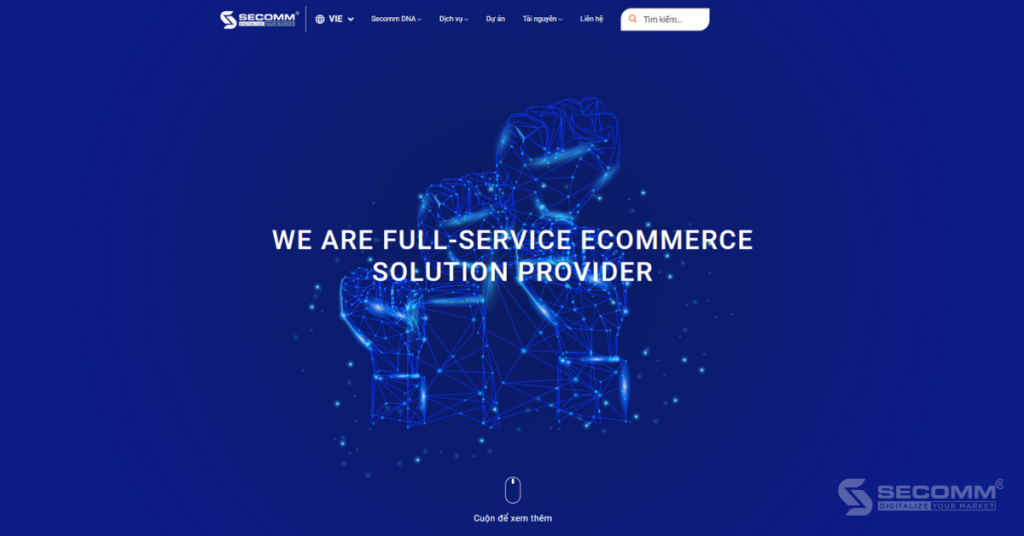
This company is renowned for its diverse eCommerce services, including solutions for building online stores on the Magento platform. WEBDESK SOLUTION is committed to providing professional technical support services during and after deployment.
Wiser Brand specializes in building and developing eCommerce websites targeting enterprises in Australia and New Zealand. The company holds prestigious certifications related to Magento and boasts a large team of experts with extensive experience.
Aron Web Solutions develops and expands rapidly into significant markets such as the UK, US, and India. Aron offers a variety of eCommerce solutions related to Magento, including Magento website design and development for mobile shopping applications.
Over the years, Webential has officially become one of the leading Magento agencies in Australia. In addition to Magento, Webential offers various flexible solutions, ensuring that all projects are implemented efficiently and professionally.
Magneto IT Solutions is a Magento agency with diverse experience across industries. They provide custom and professional solutions to meet the specific requirements.
In Australia, Acid Green is a leading eCommerce website developer in Magento and Shopify Plus. The team’s experience and expertise in open-source and SaaS platforms are sufficient to help the company maintain its position in the market.
Intuji provides eCommerce solutions for retail and B2B brands in Australia. Intuji’s strength lies in Magento and in leveraging various platforms and technologies to build custom eCommerce websites tailored to each business model.
This company provides services for eCommerce businesses in Australia, ranging from building online stores to mobile shopping applications. With its extensive experience, Enterprise Monkey can help develop customized shopping experiences using AR/VR and AI technologies.
Aussie Website has established its position as a reputable Magento agency in Melbourne and Australia in general. They are committed to providing flexible and innovative solutions to help you optimize your eCommerce operations.
The emergence of numerous Magento developers in Australia has opened up opportunities for businesses to build and develop eCommerce brand websites. By selecting partners based on certain evaluation criteria, you can ensure that projects are implemented more smoothly, professionally, and effectively.
Need more advice to make a decision? Contact SECOMM or call (+84)28 7108 9908 for a free consultation!
 5
5
 2,952
2,952
 0
0
 2
2
The Australian eCommerce market is vibrant and promising, and partnering with reliable eCommerce development agencies is the key to enhancing online presence. With many developers striving to impress with their superior solutions, choosing the right partner has become more challenging than ever.
In this article, let’s explore Australia’s top 10 leading eCommerce developers and the factors to evaluate a potential development partner.
Read more: Top 10 leading eCommerce websites in Australia
Here are the 4 key factors to consider when choosing a reliable eCommerce development partner that aligns with your needs. From deep market understanding to the ability to adopt new technologies, these criteria will help you make strategic decisions and achieve success in today’s eCommerce landscape.
One of the most important factors to consider when choosing an eCommerce development agency is its understanding of the Australian eCommerce market. Leading developers will have a deep knowledge of trends, competitors, target customers, and shopping behavior.
This understanding helps design and build effective eCommerce websites, from optimizing the shopping experience to implementing customized solutions that support decision-making processes for future marketing strategies.
You need to consider the agency’s platform and technological expertise to ensure they are suitable and capable of meeting the goals of the upcoming eCommerce project. Many developers focus solely on a particular type of technology and platform, while others have experience with various eCommerce technologies and platforms.
With the current eCommerce trends in Australia, most developers offer their services based on platforms such as Magento, Shopify, BigCommerce, WooCommerce, and OroCommerce.
Read more:
Top 10 Magento Agencies in Australia
Top 10 Shopify Plus Agencies in Australia
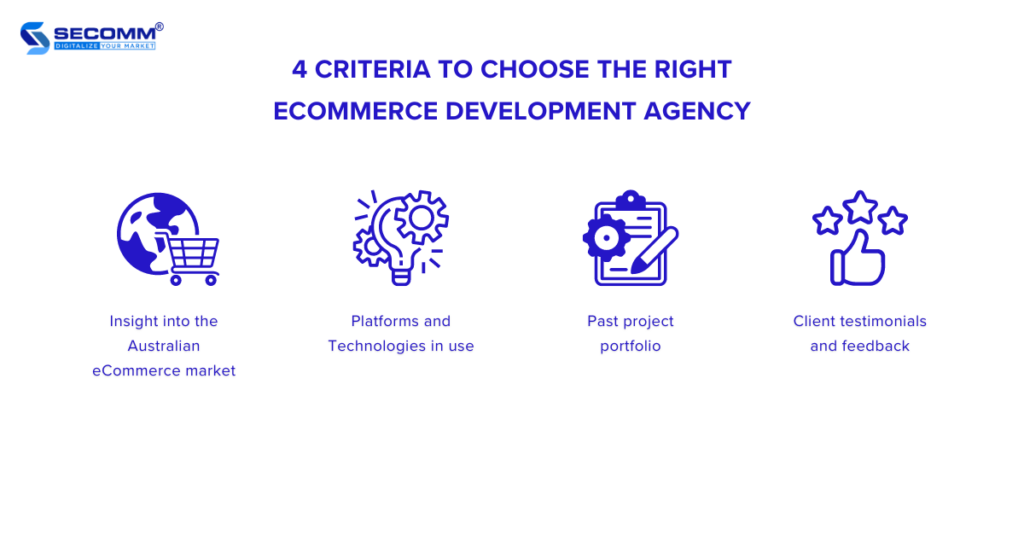
Evaluating past projects executed by eCommerce development agencies is an effective way to measure their capabilities and experience. By examining previous projects, you can assess their ability to solve specific challenges and whether the solutions proposed for each case are flexible and up-to-date with market development trends.
Previous customers are a valuable source of information for assessing an eCommerce developer’s quality and reliability. Their feedback provides genuine insight into the developer’s work experience, product and service quality, and post-deployment support capabilities. This helps you make informed and effective decisions when selecting an eCommerce development agency.
Below is a list of Australia’s top 10 leading companies in eCommerce development, ranging from pioneering innovators to reputable developers with years of experience. These developers have built and deployed hundreds of successful eCommerce projects, delivering real value to their businesses and customers.
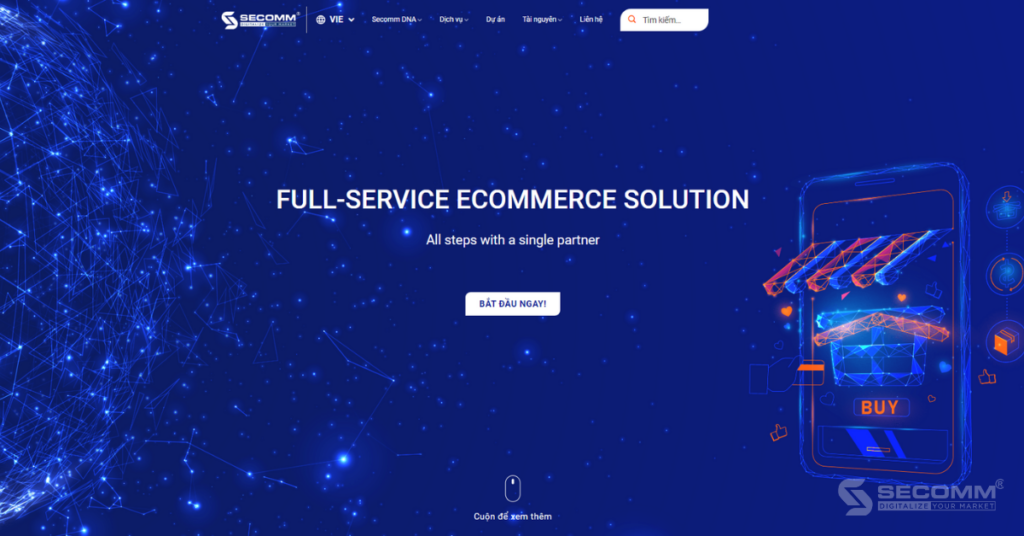
Over ten years, SECOMM has become a reliable eCommerce development agency for many Australian businesses such as Laybyland, The Rod Shop, Seconds Deals, and Trentham Estate. By providing innovative and customized solutions, SECOMM not only meets basic requirements but also goes further, creating unique and engaging online shopping experiences.
SECOMM’s strengths lie in Magento, Shopify Plus, and Headless Commerce. This team’s deep understanding of the market and strong technical expertise have enabled it to quickly grasp each project’s goals and outline detailed plans for completion with guaranteed quality and timelines.
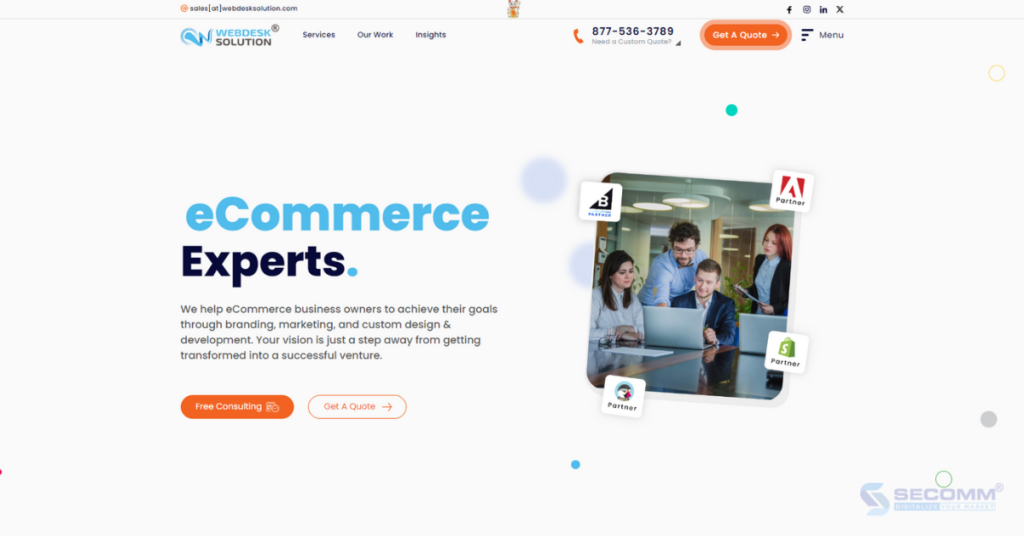
WEBDESK SOLUTION is known as a leading full-stack eCommerce developer in Australia. They utilize platforms such as Magento, Shopify, PretaShop, and Shift4Shop to deliver customized solutions to meet eCommerce deployment needs.
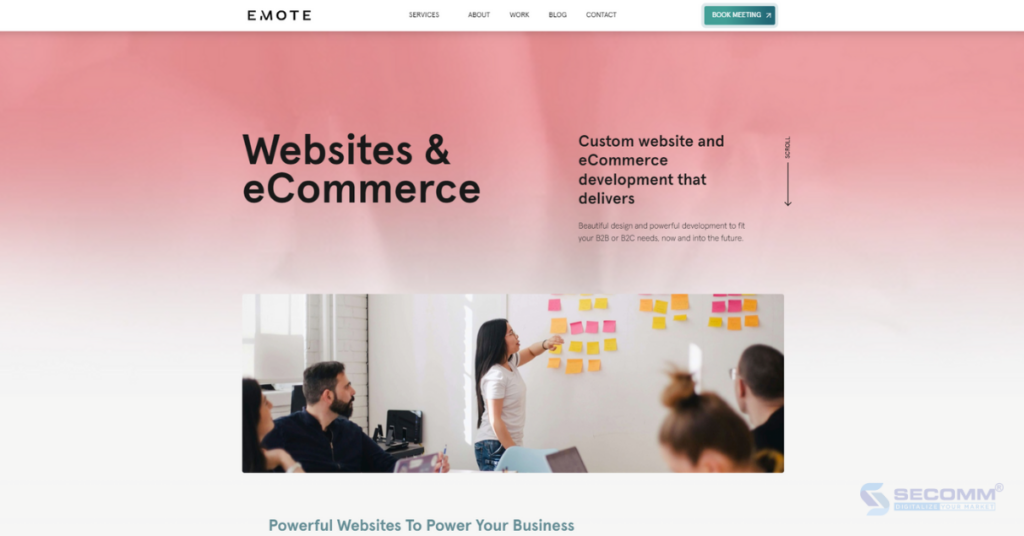
This company has built a reputation in the Australian market as a designer and developer of eCommerce websites. They use platforms like Drupal, Sitecore, WordPress, BigCommerce, Shopify, and Magento to create unique shopping experiences and genuine customer interactions.
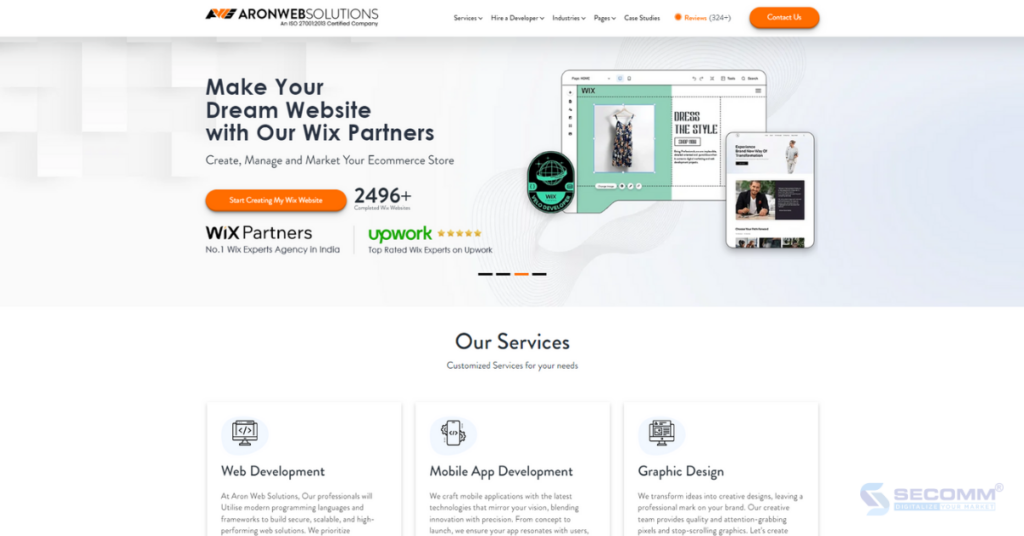
Aron Web Solutions is renowned for providing customized and professional eCommerce solutions, helping businesses optimize online performance. Aron has expanded its business operations to the UK, US, and Indian markets.
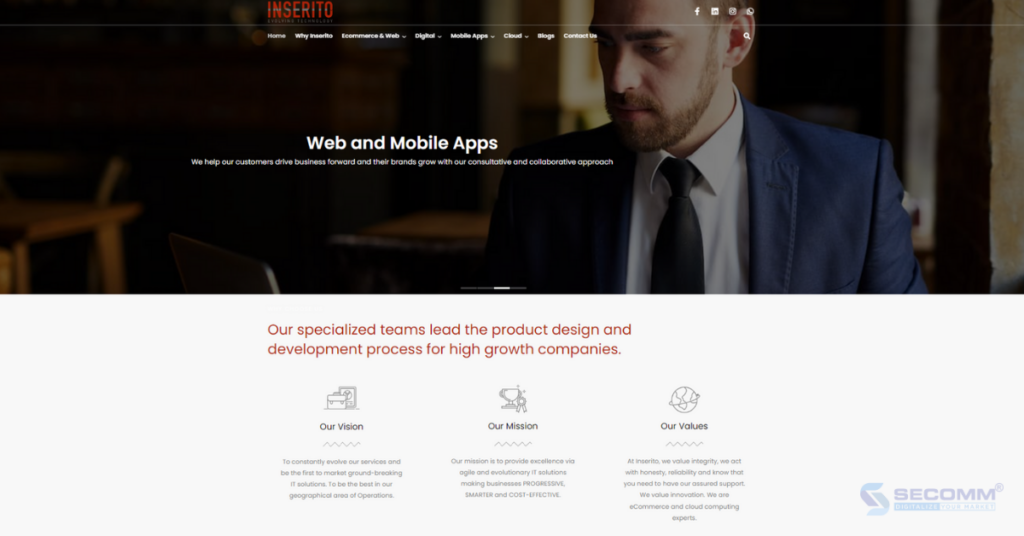
Inserito aims to develop eCommerce solutions for large enterprises based on platforms such as Magento, Shopify, NetSuite, and BigCommerce. They are committed to providing effective and sustainable solutions for businesses.
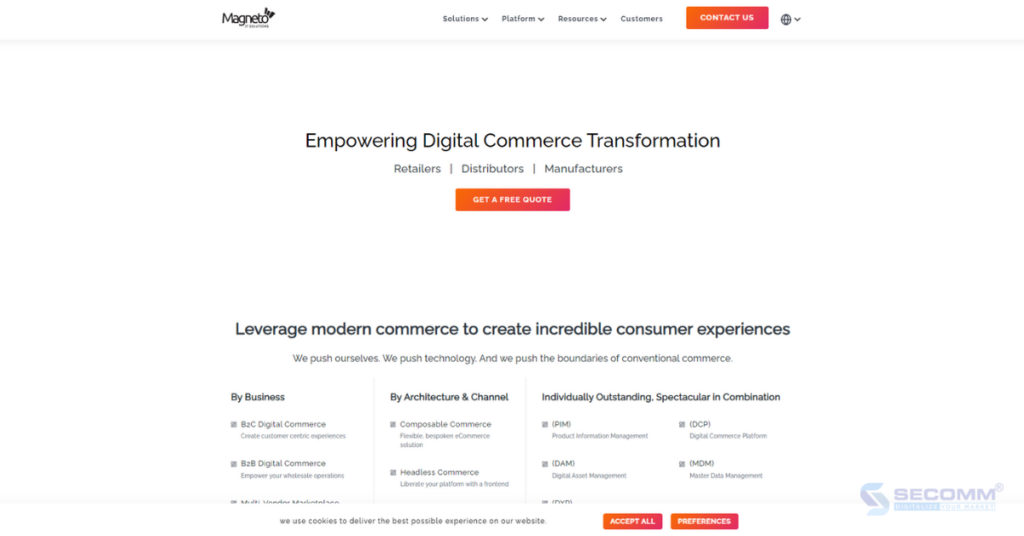
Magneto IT Solutions is an eCommerce development agency with diverse experience across industries. They provide customized and professional solutions to meet the specific requirements.
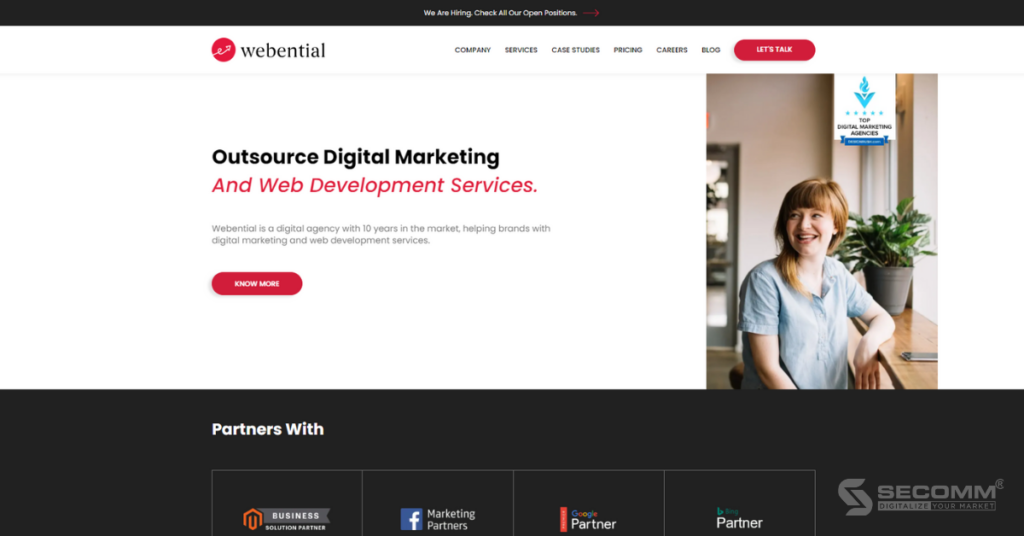
In Australia, Webential is a specialized unit that designs and builds eCommerce websites while providing related services in digital marketing. The company has a highly skilled team that proposes suitable solutions to optimize customer experience and implement effective marketing campaigns.
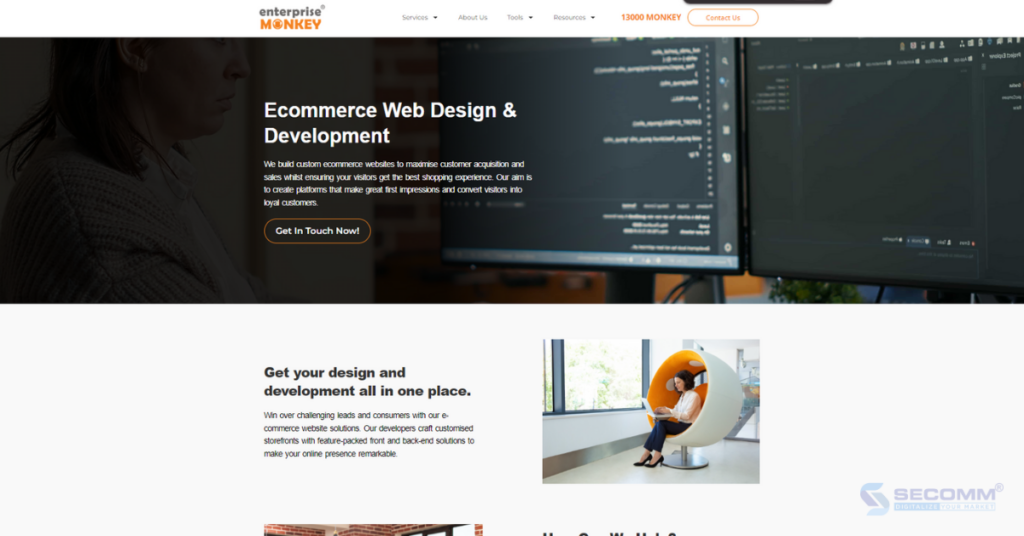
This company provides services for eCommerce businesses in Australia, from building online stores to mobile shopping applications. With its extensive experience, Enterprise Monkey can help develop customized shopping experiences using AR/VR and AI technologies.
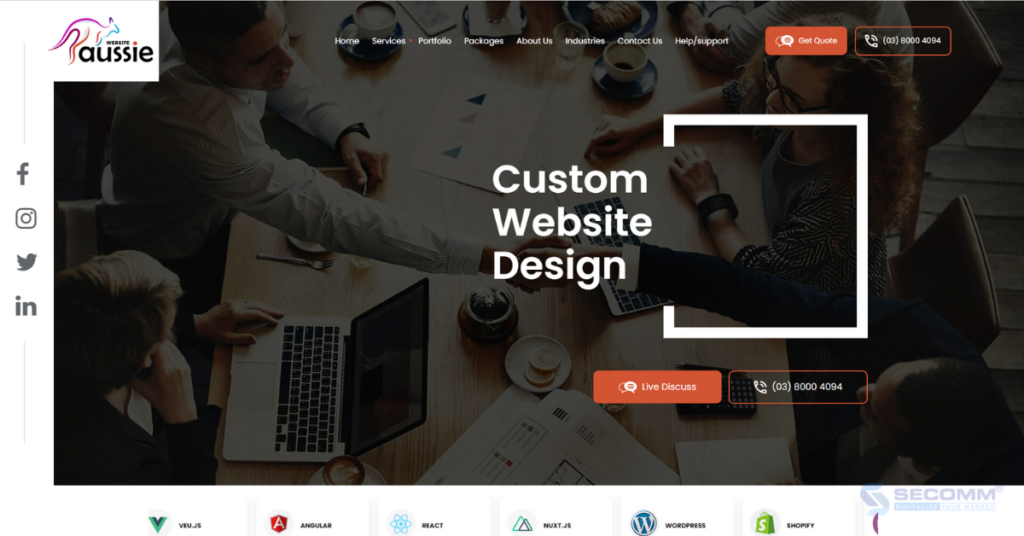
Aussie Website has established itself as a leading reputable eCommerce development agency in Melbourne city and Australia. They are committed to providing flexible and innovative solutions to help businesses optimize their eCommerce operations.
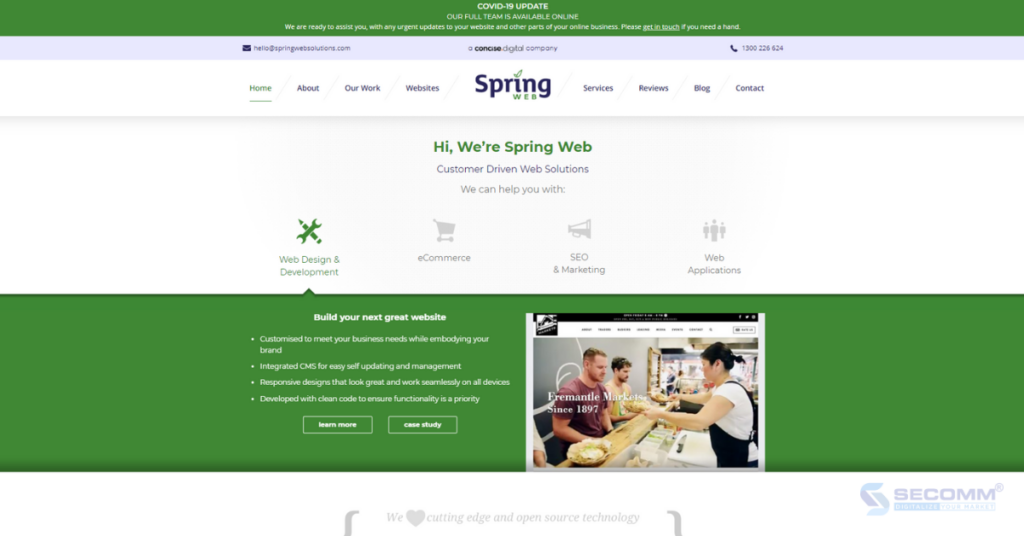
Spring Web Solutions is renowned for providing flexible and effective eCommerce solutions, helping businesses thrive online. Its technologies include Drupal, PretaShop, WordPress, Shopify, and Magento.
Above are 10 reputable and reliable eCommerce development agencies in Australia, along with essential criteria for choosing a suitable development partner. Each company offers unique characteristics and benefits to its clients, from deep market understanding to creativity and technical prowess.
Need more advice? Contact SECOMM or call (+84)28 7108 9908 for a free consultation!
 2
2
 2,061
2,061
 0
0
 1
1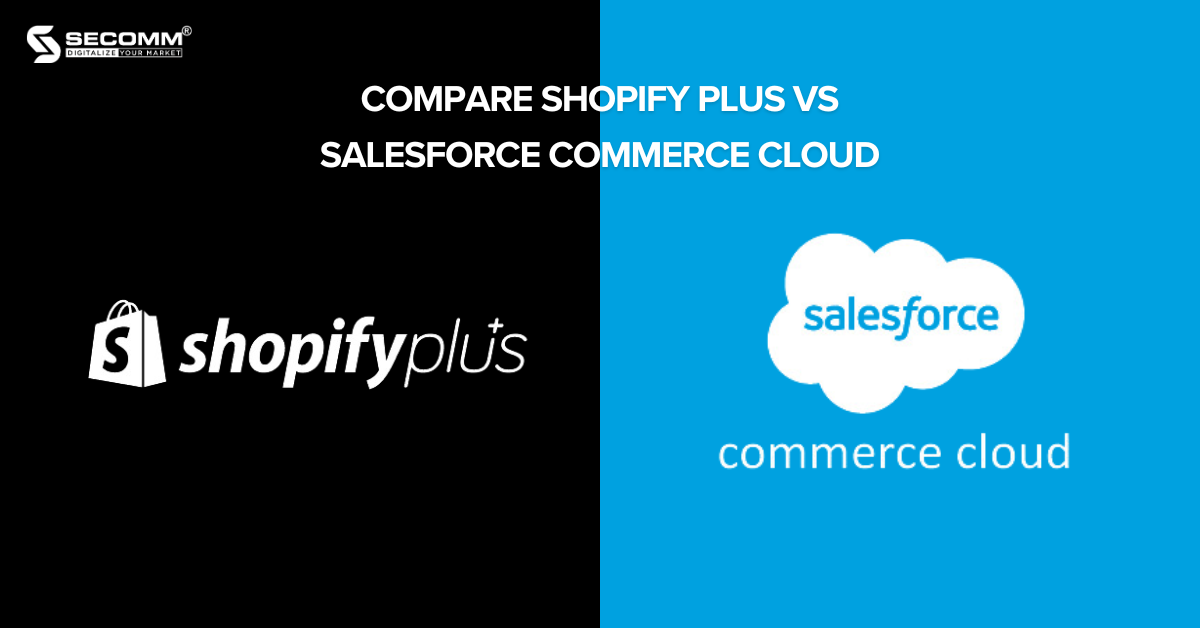
Shopify Plus vs Salesforce Commerce Cloud are two leading platforms chosen by large enterprises worldwide to build eCommerce websites. Each platform has its advantages, from the flexibility and user-friendliness of Shopify Plus to the comprehensive solutions offered by SFCC.
Understanding each system’s differences and strengths is crucial before deciding between these two platforms. Let’s explore and compare the capabilities of Shopify Plus and SFCC in detail to make the most suitable decision.
Read more: Shopify Plus vs Advanced: Which one is right for you?
Shopify Plus is a premium scalable platform version tailor-made for large enterprises. Launched in 2014, It rapidly emerged as the preferred option for those seeking efficient and adaptable expansion of their online operations. Unlike a fixed pricing model, Shopify Plus is customized according to specific deployment needs.
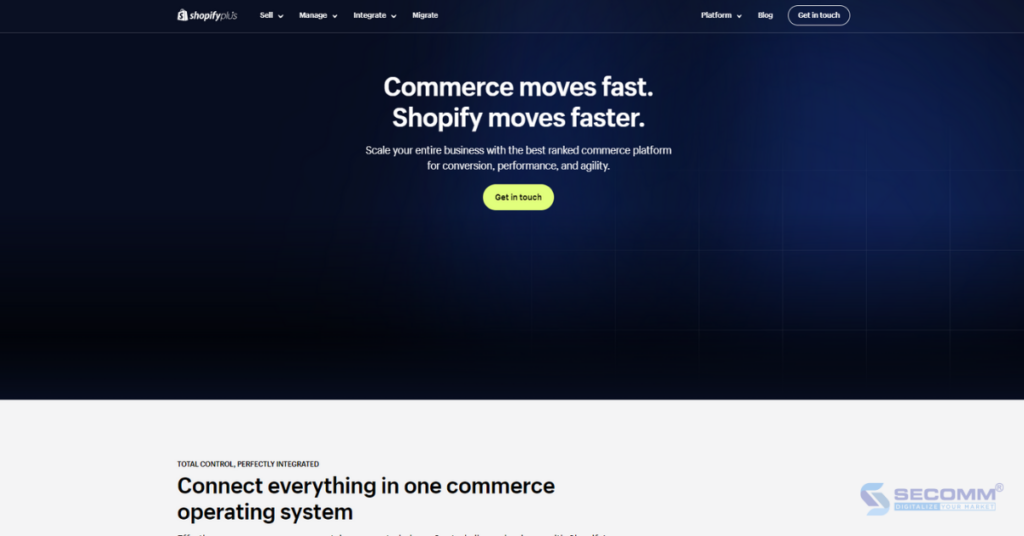
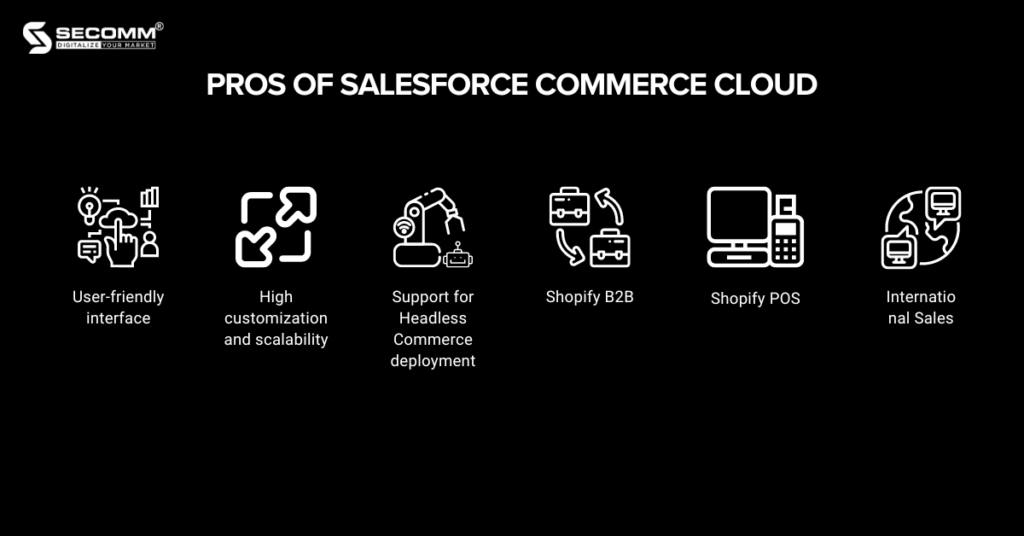
Salesforce Commerce Cloud (formerly known as Demandware) is a robust cloud-based eCommerce platform built on Salesforce’s infrastructure, one of the world’s largest CRM software companies.
SFCC provides a comprehensive system for operating online stores, from building and deploying shopping websites to managing orders, marketing, and customer service. With robust integration capabilities and intelligent analytics tools, SFCC helps businesses create unique online shopping experiences and enhance customer interaction.
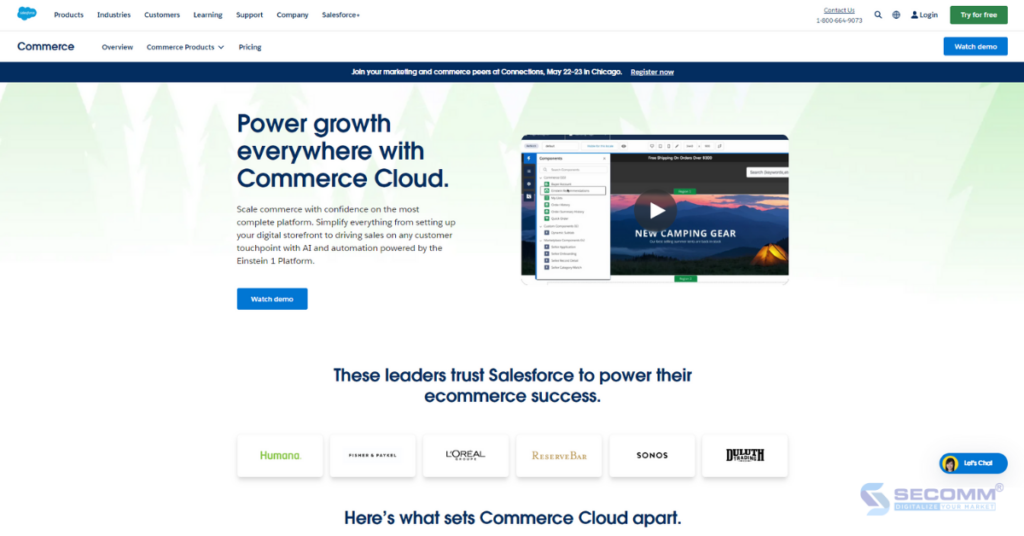
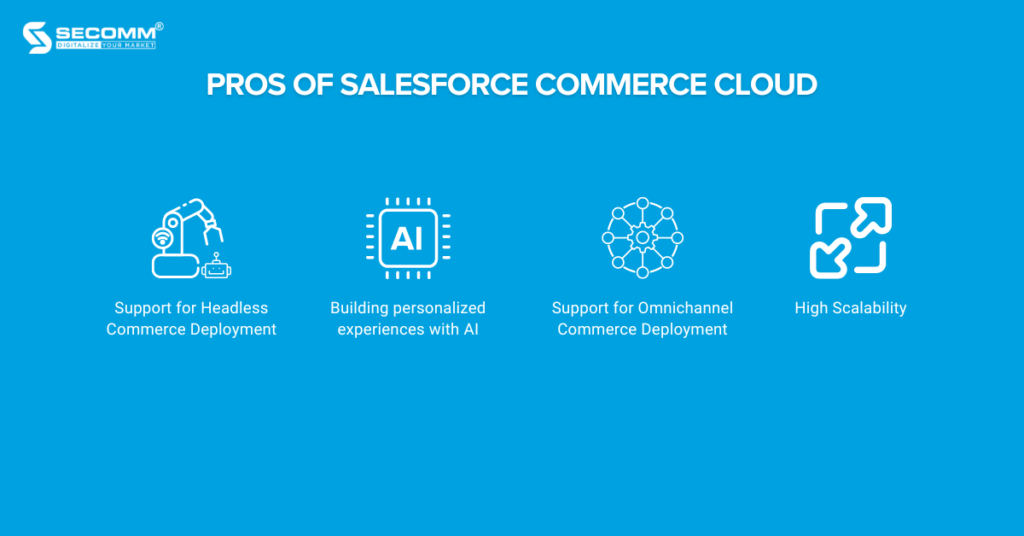
The Plus version costs from $2300/month but is not fixed and will be customized based on specific needs. For merchants reaching a revenue threshold of $800,000/month, the Plus usage fee will gradually increase based on GMV (0.25% GMV for months with revenue exceeding $800,000). Merchants often must spend an additional $1K – $5K/month to integrate third-party applications.
There are no exact figures for SFCC, as the cost is determined based on each merchant’s requirements. However, SFCC merchants with revenues around $20 million may have to pay about $200,000 – $600,000/year. Larger-scale enterprises with higher revenues may have platform fees totalling millions annually.
+ Customizes unique storefront with Hydrogen.
+ Seamless third-party integrations
+ Ultilize cutting-edge technologies like AI, VR/AR for enhanced customer experience
+ Offers flexibility for complex customizations
+ Requires expertise in SFCC and specific technical skills
+ Easily scales without slowing down website performance.
+ Provides a clear roadmap with over 100 product updates released twice a year
+ Continuously improves to keep your business ahead in eCommerce
+ Integrates seamlessly with other Salesforce systems but struggles with third-party apps
+ Updates regularly but at a slower pace compared to Shopify
Both platforms have rich features, differing mainly in focus and approach
Plus focuses on flexibility and ease of use, providing merchants with a more intuitive interface than SFCC. This platform is renowned for its seamless integration with various payment options, marketing tools, and sales channels. This flexibility has made Plus attractive and accessible to most merchants.
Additionally, Shopify Plus offers their merchants exclusive and custom solutions to effectively handle various aspects of eCommerce, such as Shopify POS, Shopify Market, Shopify Hydrogen, Shopify Checkouts, B2B on Shopify, and more.
SFCC, on the other hand, emphasizes enterprise-level features such as integrated sales management tools, advanced search, order management, and promotion creation. Additionally, this platform excels in supporting international sales, advanced customer segmentation and personalization, as well as real-time dashboards and reports.
All of these features help businesses optimize eCommerce operations and drive growth.
Shopify Plus will be the ideal choice in the following cases:
Plus is designed specifically for large retailers with high demands for scale. With a range of exclusive solutions developed and continuously updated, this flexible eCommerce platform can effectively meet growth needs, allowing for easy scalability and customization.
With lower license fees compared to SFCC and the ability for quick deployment, Shopify Plus is a suitable option for businesses with moderate budgets or those needing to implement projects in a short time frame.
Plus is known for its user-friendly interface and high flexibility. Its drag-and-drop builder ensures that users of all technical levels can easily and efficiently set up an online store.
Shopify Plus’s infrastructure provides a seamless integration system with third-party applications and tools. This is a significant advantage if you need to integrate quickly with CRM applications, marketing tools, or other online sales channels.
If customer experience is a top priority, Shopify Plus offers many tools and features to easily and effectively optimize shopping experiences and customer interactions.
SFCC is a suite of solutions your eCommerce system needs to grow rapidly. If the following criteria apply, SFCC may be the more suitable choice:
If you have already used other Salesforce products and services such as Salesforce CRM, Marketing Cloud, or Service Cloud, choosing SFCC will optimize workflows and integrate customer data across your entire system.
SFCC is often the top choice for large enterprises with high deployment demands requiring flexibility in managing online stores. The platform provides powerful tools and features for customizing interfaces, managing complex product catalogs, and integrating with distinct business processes.
Built on the infrastructure of Salesforce, one of the world’s largest cloud technology service providers, SFCC offers high levels of security and reliability, best for those with important customer data and information.
SFCC provides tools to help you better understand customer shopping behavior and optimize business strategies. This enhances the shopping experience and increases sales revenue.
In today’s highly competitive eCommerce landscape, selecting the appropriate platform is crucial for your business success. This article has provided an overview of the top two choices, Shopify Plus and SFCC.
When it comes to making a decision, careful consideration of the specific needs is essential, from scale and goals to budget and technical requirements, to make the most appropriate choice.
Need help making the right decision? Contact SECOMM or call (028) 7108 9908 immediately!
 4
4
 3,817
3,817
 0
0
 2
2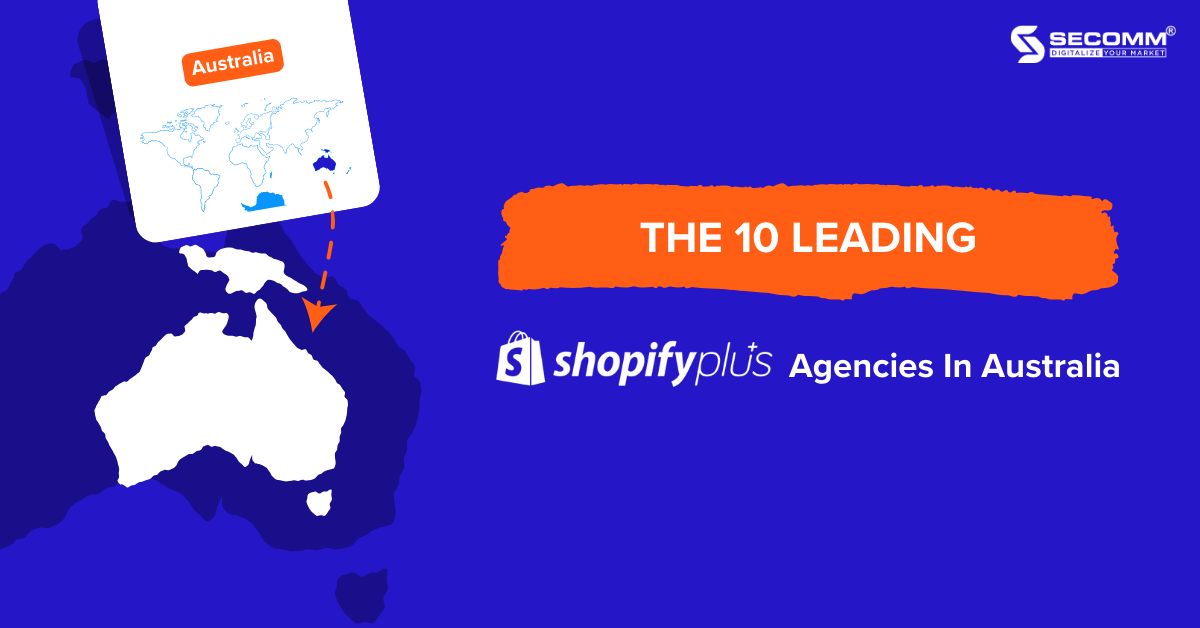
The Shopify Plus agencies in Australia are more than just experts in this eCommerce platform; they’re also dependable allies in your online business growth. The Australian eCommerce market has experienced significant expansion in recent years, so choosing the right Shopify Plus development partner is a pivotal strategic move.
In this article, we’ll outline Australia’s top 10 premier Shopify Plus developers and the criteria for selecting the ideal partner for your eCommerce development project.
Read more: Top 10 Shopify Plus eCommerce websites in Australia
Shopify Plus is an advanced eCommerce platform tailored for large enterprises that aim to expand their business operations and elevate their customers’ online shopping experience. It offers a robust infrastructure for building custom eCommerce websites and flexible scalability for seamless integration with third-party applications.
Moreover, the platform continuously evolves and enhances its exclusive solutions, empowering businesses to operate more efficiently and deliver an exceptional customer experience.
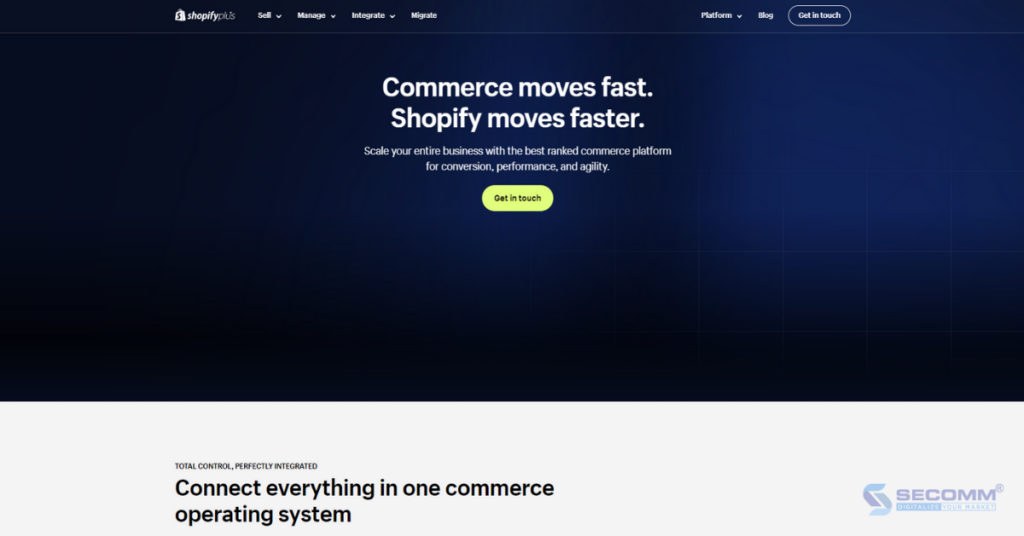
Read more: 15 reasons to migrate to Shopify Plus
This is an important question that many businesses often ask when starting their eCommerce projects. Below are some reasons why collaborating with a Shopify Plus development company:
Shopify Plus developers typically have teams of experts highly skilled in this platform. Most companies will participate in the Shopify Plus Partners program, receiving technical support, educational resources, commissions, and branding.
Moreover, these developers must demonstrate that they meet the standards to become official Shopify Plus partners. Therefore, collaborating with them will help businesses launch their eCommerce websites quickly while utilizing features and integrations to optimize business performance.
Partnering with Shopify Plus agencies can save time and costs compared to independently building and managing an eCommerce website.
Collaboration becomes even more valuable when tight deadlines and rapid online store deployment are required. These developers already have the tools, processes, and experience to efficiently and swiftly deploy projects.
It is crucial to ensure smooth and stable website operation after launch. Shopify Plus developers often provide continuous support services after the project is completed.
This involves the ongoing maintenance and management of the website, along with technical assistance, to ensure seamless operation and constant alignment with Shopify Plus’s latest features.
Read more: Shopify Plus and Advanced: Which one is right for you?
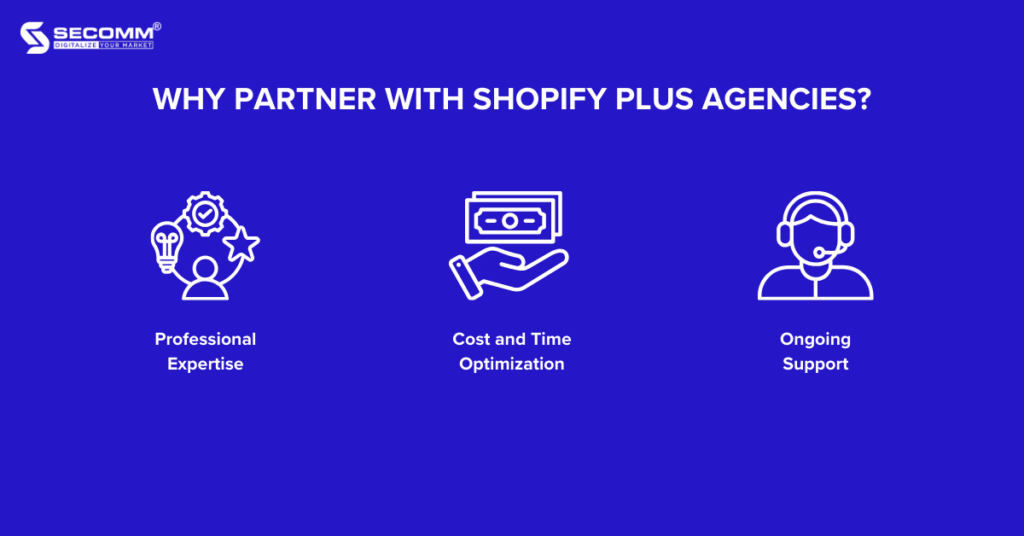
Partnering with any development company in Australia can greatly influence the success or failure of a Shopify Plus implementation project. Here are four key criteria to consider when seeking a suitable developer:
A thorough understanding and experience with this platform are essential when developing an eCommerce project with Shopify Plus. Therefore, this is the primary point to evaluate any potential development agency.
You must ensure that the chosen developer has the knowledge and skills to implement the Shopify Plus platform. They need a team of capable experts to build, customize, and optimize eCommerce websites based on specific.
Designing and building a website with a customized shopping experience tailored to the needs of Australian consumers isn’t an easy task. This requires technical skills and expertise in the Shopify Plus platform and a deep understanding of how the Australian eCommerce market operates.
Therefore, developers need to understand the target audience, their shopping behaviours, legal regulations, and other factors related to the distinctive business culture in this country.
Evaluating feedback from previous clients can be valuable in the decision-making process. You can check reviews from various sources and clients to ensure objectivity and transparency. The Shopify Plus developer must have the necessary skills and experience to complete the eCommerce project as required.
When your Shopify Plus website is done and launched, you must pay attention to technical support and maintenance. That’s why should opt for a development agency dedicated to providing prompt support and ongoing maintenance after completing the project.
This ensures the website’s stability, swift resolution of technical glitches, and consistent security updates to keep the site current with the latest platform versions.
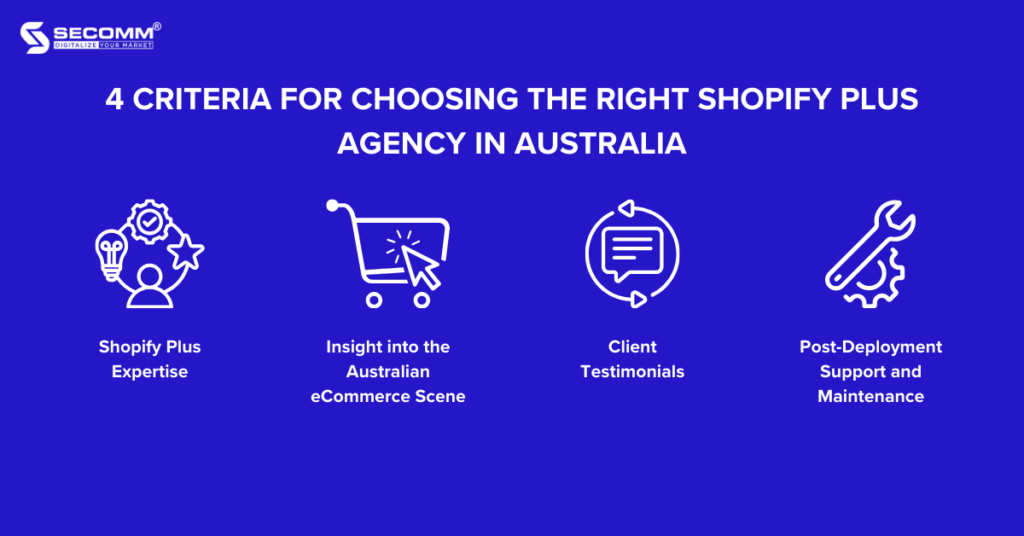
The continuous growth of the Australian eCommerce market has led to an increasing demand for collaboration with top-notch developers, especially those specializing in the Shopify Plus platform. Below are the top 10 Shopify Plus development companies in Australia:
With over 10 years of experience in the eCommerce industry, SECOMM is one of the trustworthy Shopify Plus developers in Australia. SECOMM can design and build Shopify Plus eCommerce websites, implement Headless Shopify Hydrogen, migrate platforms to Shopify Plus, and provide related services.
Moreover, the company offers various custom solutions based on different technology platforms such as Magento, WordPress, WooCommerce, and commercetools. With a team of talented and professional experts, SECOMM ensures the success of eCommerce projects collaborating with Australian clients. Notable among these are Laybyland, Trentham Estate, The Rod Shop, and Seconds Deals.
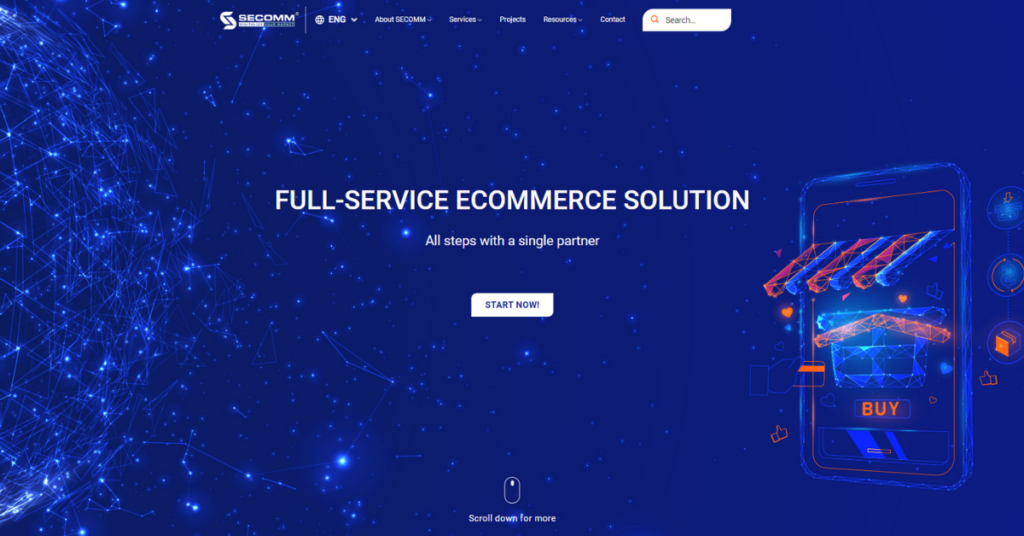
Dive Digital provides eCommerce consulting services, UI/UX design, and Shopify website development. Its solutions optimise customers’ online shopping experiences and enhance business performance.
10SQ aims to become the leading Shopify Plus development company in Australia, making it easy for businesses to access specialized services for this platform. Here, businesses can find customized solutions to expand and enhance their eCommerce systems efficiently.
Aron gathers highly skilled eCommerce developers proficient in various platforms and technologies, including Shopify Plus. The company has expanded its operations to many countries beyond Australia, such as the United States, the United Kingdom, and India.
Clean Commit is a reliable partner with high expertise in developing and optimizing websites on the Shopify Plus platform. They are committed to providing effective and sustainable solutions for businesses.
Magneto IT Solutions is a Shopify Plus developer with diverse industry experience. They offer customized and professional solutions to meet the specific requirements of businesses.
In Australia, Acidgreen is renowned as a leading developer of eCommerce websites, excelling in Magento and Shopify Plus. The team’s experience and expertise in open-source and SaaS platforms are sufficient to maintain the company’s position in the market
This company develops solutions for businesses in Australia and New Zealand looking to implement eCommerce with Shopify Plus. Additionally, they provide continuous support even after the project is completed.
Pipelabs’ solutions aim to deploy Omnichannel eCommerce on the Shopify Plus platform. Numerous projects’ success and positive reviews from previous clients attest to Pipelabs’ capabilities.
Moustache Republic is among the clients looking to implement Shopify Plus and BigCommerce. They provide solutions for eCommerce deployment based on these two platforms and offer seamless and efficient platform migration solutions.
The partners mentioned above are just a few of Australia’s skilled and trustworthy Shopify Plus developers. Choosing the most suitable partner to ensure your eCommerce objectives’ success and sustainable growth depends on your project’s specific requirements.
Start with Shopify Plus today with specialised solutions from SECOMM. Contact us or call (+84)28 7108 9908 for a free consultation!
 2
2
 3,438
3,438
 0
0
 1
1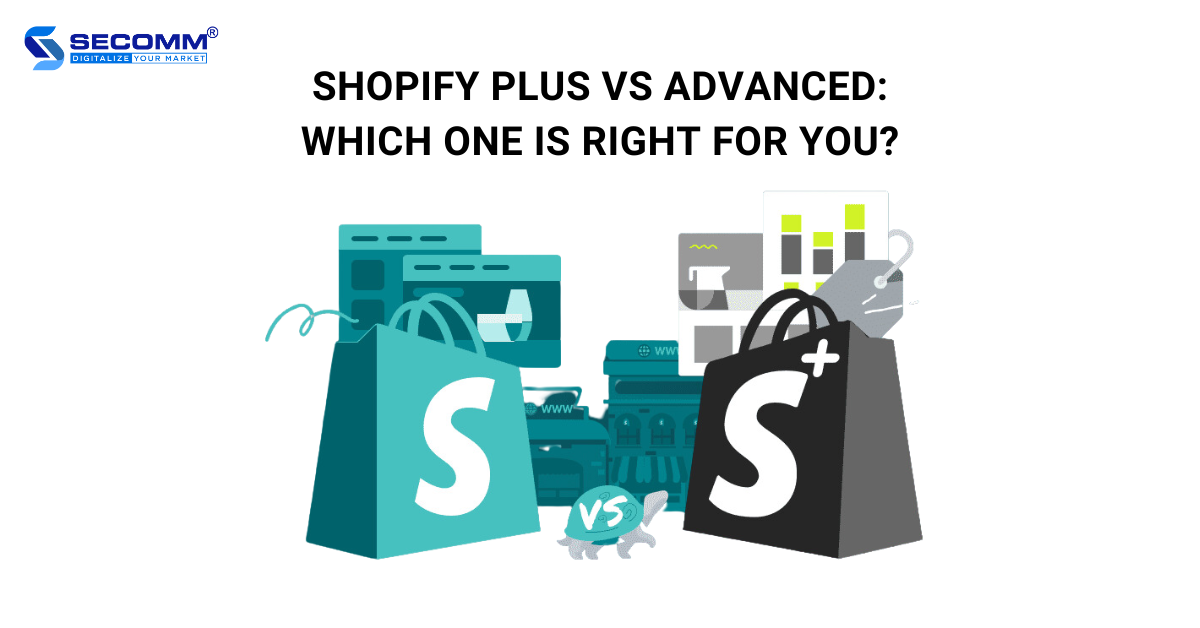
Shopify Plus vs Advanced are the two most essential versions of Shopify. They provide your business with many solutions and features to build and optimise eCommerce websites quickly.
Each version has advantages, from Advanced’s advanced features and cost-effectiveness to Plus’s flexible customization. Therefore, the question ‘Which is the right choice?’ becomes challenging for many eCommerce businesses.
In this article, let’s find a reasonable answer so each business can make the most appropriate decision.
Read more: What is Shopify? Pros and Cons of Shopify
Shopify Advanced is a pricing plan offered by Shopify, designed to support medium-sized businesses in developing their eCommerce operations. The Advanced includes all the features of the Basic and Shopify plans while also providing optimized transaction fees and additional advanced features.
These features include custom reporting and analytics, enhanced live chat, optimized checkout, 3rd-party calculated shipping rates, and more.
Scaling businesses will need many advanced features to optimize their eCommerce operations. Therefore, the Advanced plan offers many outstanding advantages that enhance the ability to manage and grow your business flexibly and efficiently.
This version excels in terms of reporting and analytics compared to standard plans. This feature lets you track and evaluate your business performance based on specific criteria, facilitating informed decisions.
The Advanced ensures lower transaction fees than the two standard plans, helping you save costs and enhance profitability. These lower transaction fees optimize profit opportunities and make the transaction process more appealing and sustainable.
The Advanced also emphasizes its ability to support international sales through Shopify Markets, a tightly integrated platform. This helps you expand your business scope into the global market efficiently and flexibly, leveraging growth potential from diversifying sales revenue.
The Advanced plan allows you to integrate and manage shipping fees by third-party carriers, providing customers with more options. This integration capability helps optimize the shipping process and reduces any complexity associated with shipping costs, thereby creating the best online shopping experience for customers.
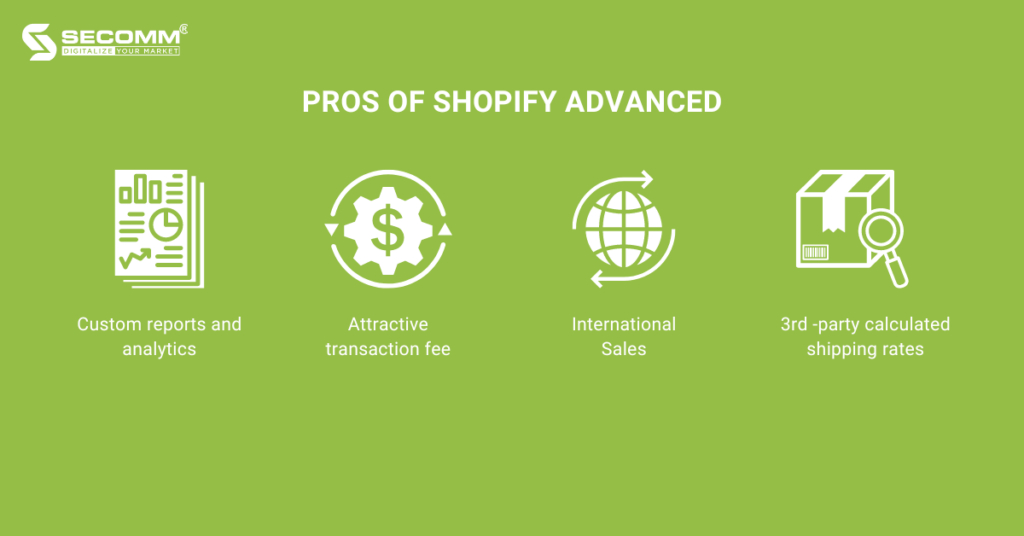
This premium version is tailored for large-scale, multinational, and fast-growing businesses. The Plus offers advanced features, superior customization, and scalability. Unlike the regular version, Plus does not have a fixed price; instead, costs are customized based on the business’s specific needs.
Businesses with high sales revenue, large product catalogues, and complex customization needs would be suitable targets for Shopify Plus.
The Plus version brings superior capabilities to help businesses create an optimized eCommerce experience for customers and achieve the expected revenue.
Shopify Plus offers high customization and flexibility in developing eCommerce websites. You can customize many aspects of the website, integrate applications, and expand functionality. This helps create an optimal online shopping experience and enhances customer interaction.
The B2B solution set with exclusive features is only available to Shopify Plus merchants. These features are regularly enhanced to optimize the B2B process, from ordering to customer management, providing a unique and efficient experience.
With its flexibility, Shopify Plus can fully support the implementation needs of Headless Commerce. Furthermore, through the exclusive solution Hydrogen, Shopify allows businesses to build custom Headless eCommerce websites to provide the most unique customer experience.
With Shopify POS Pro integrated, Shopify Plus supports omnichannel commerce deployment, helping you create a seamless shopping experience across multiple channels, from eCommerce websites to brick-and-mortar stores.
Through the Winter ’24 Editions update, Shopify recently added two new features: POS Terminal and Ship From Store. These features optimize customers’ payment processes and simplify merchant experiences
The Plus version supports large-scale expansion and international outreach. The integrated Shopify Market Pro solution allows you to efficiently optimize your eCommerce operations and seize opportunities in the global market.

The platform usage fee for the Advanced service package is $299 per month. This pricing is reasonable for medium-scale businesses seeking advanced features to develop their eCommerce websites. Additionally, the transaction fee for the Advanced package is 0.6% per transaction, lower than the Basic and Shopify packages.
The usage fee for the Plus package typically starts at $2,300 per month and is not fixed but customized based on deployment needs. At this price point, you’ll gain access to numerous advanced features and exclusive solutions that are regularly fine-tuned and improved to meet the increasing demands of eCommerce development.
Online transaction fees will vary by geographic region. Businesses using Shopify Payments will have this fee waived.
With the Advanced plan, you can seek 24/7 support from the Shopify team through in-depth live chat. Additionally, many Shopify merchants’ community groups are on Facebook and Slack.
Shopify Plus merchants can expect deep customer care services 24/7 through email, hotline, and live chat. They will receive technical support and valuable business advice from Shopify’s top experts. Additionally, businesses can join the Plus merchant community on Facebook to share and learn from each other’s experiences.
Advanced offers robust security features, including protection for personal information and payment data. However, its security level is lower than that of the Plus plan.
Plus provides a range of security measures and features to protect business data, customer information, and payment transactions as much as possible. This includes:
This is an important question that many businesses are seeking answers to. If your business is on a growth trajectory and has high demands for flexibility and customization, Shopify Advanced is a worthy consideration.
First and foremost, if you desire more autonomy over the store interface and user experience, Shopify Advanced provides customizable reporting and analytics tools, enabling you to track business performance in the way you want to make informed decisions.
Furthermore, Shopify Advanced could be an ideal companion if you’re looking for a cost-effective solution and don’t want to be constrained by fundamental limitations. With lower usage fees than higher-tier packages, Advanced offers financial benefits while keeping the eCommerce website running smoothly.
Plus will be the perfect choice for large-scale businesses with high flexibility, performance, and support demands. If the following characteristics apply, Plus is very likely to be the more suitable choice:
The decision between Shopify Plus and Advanced is not just about choosing a platform but also about building an eCommerce system that reflects your business’s true values and long-term goals.
Shopify Advanced is a flexible solution for medium to large businesses seeking flexibility and low costs. On the other hand, Shopify Plus is an excellent choice for larger enterprises, where premium features and support are key to strong and efficient growth.
With the development and fluctuations of the market, the choice between Shopify Plus and Shopify Advanced is not only a current decision but also a long-term strategy to shape the future of your business.
Need help to make decisions? Contact SECOMM or call (028) 7108 9908 now!
 13
13
 2,304
2,304
 0
0
 1
1Subscribe to get the latest eBook!
Hotline